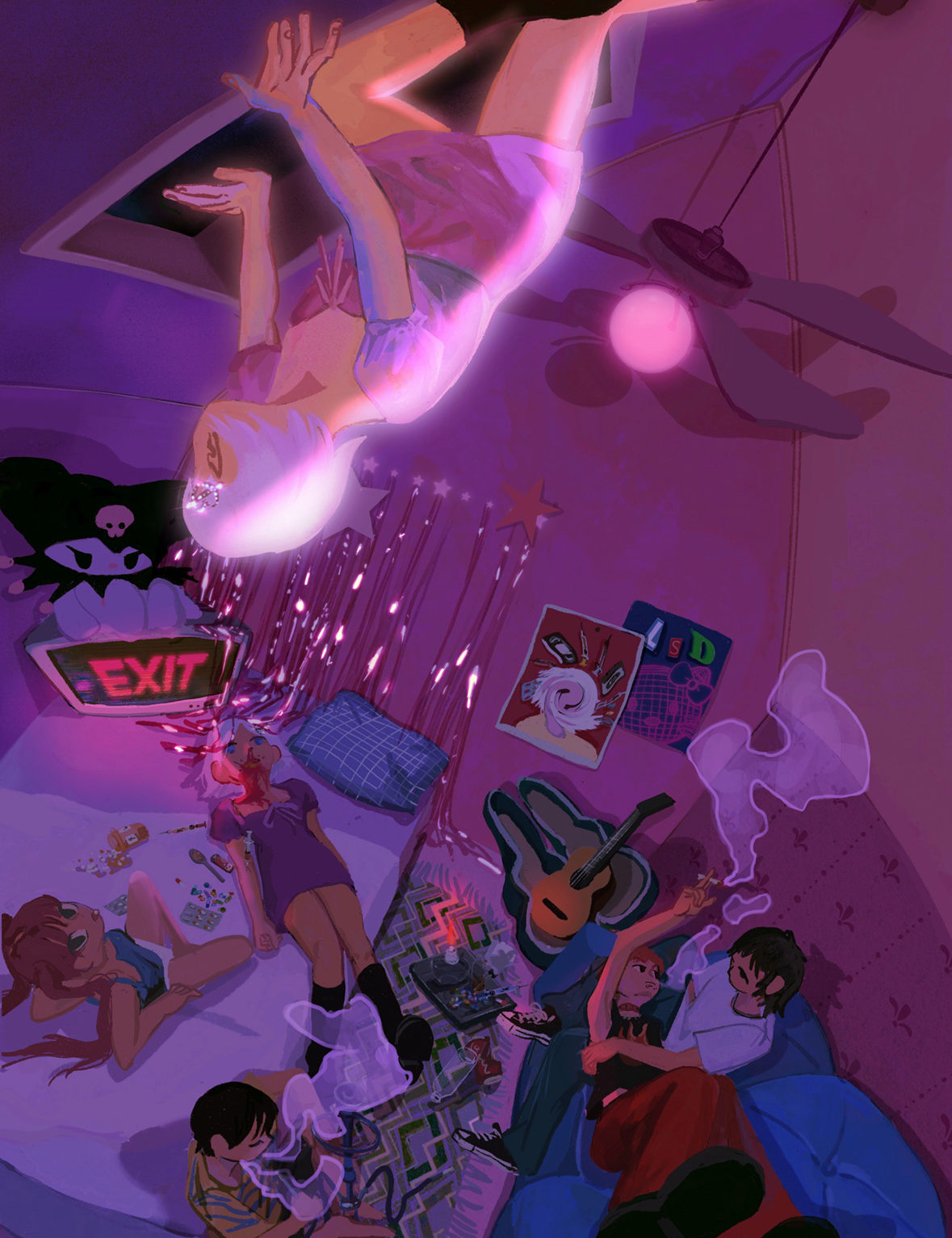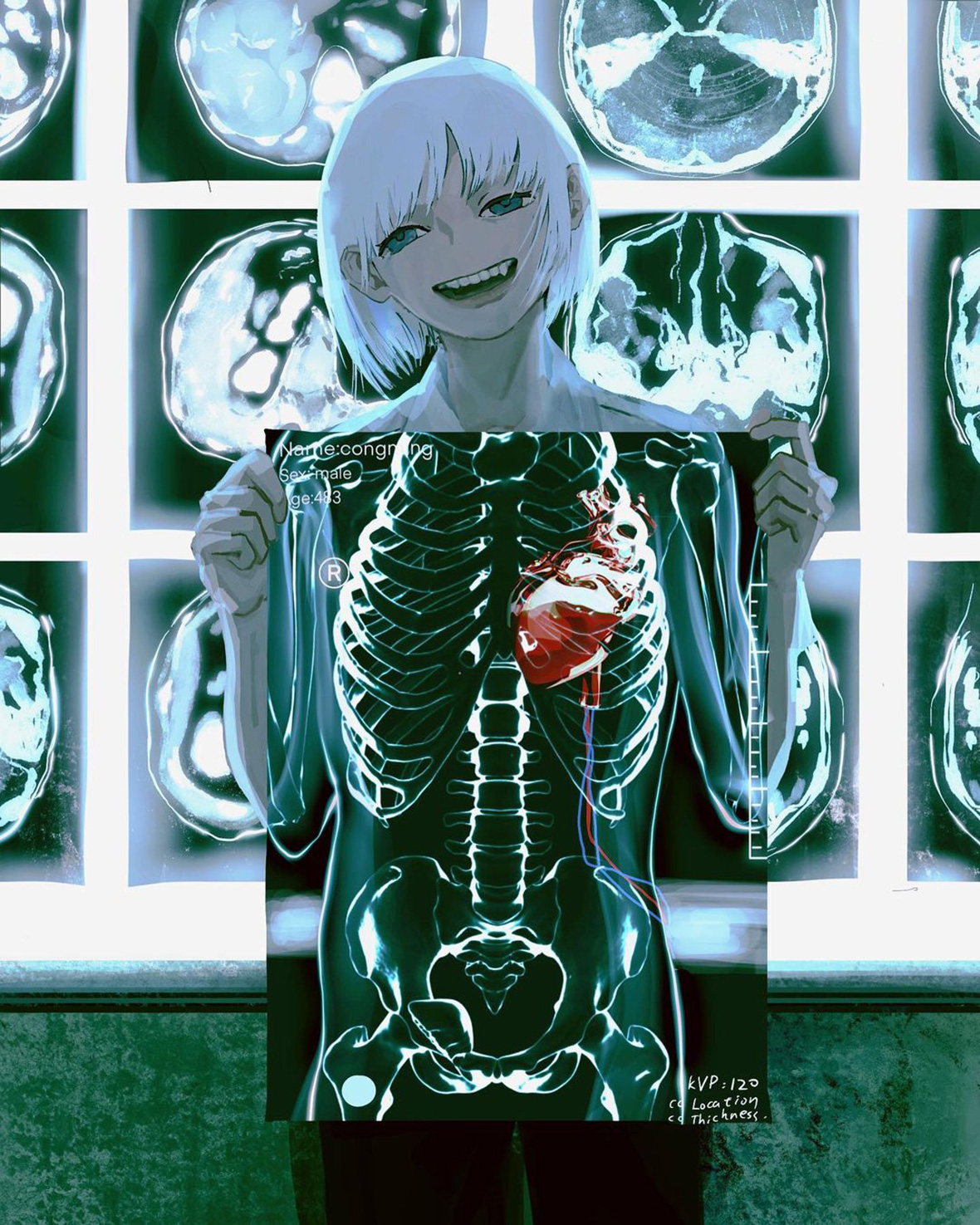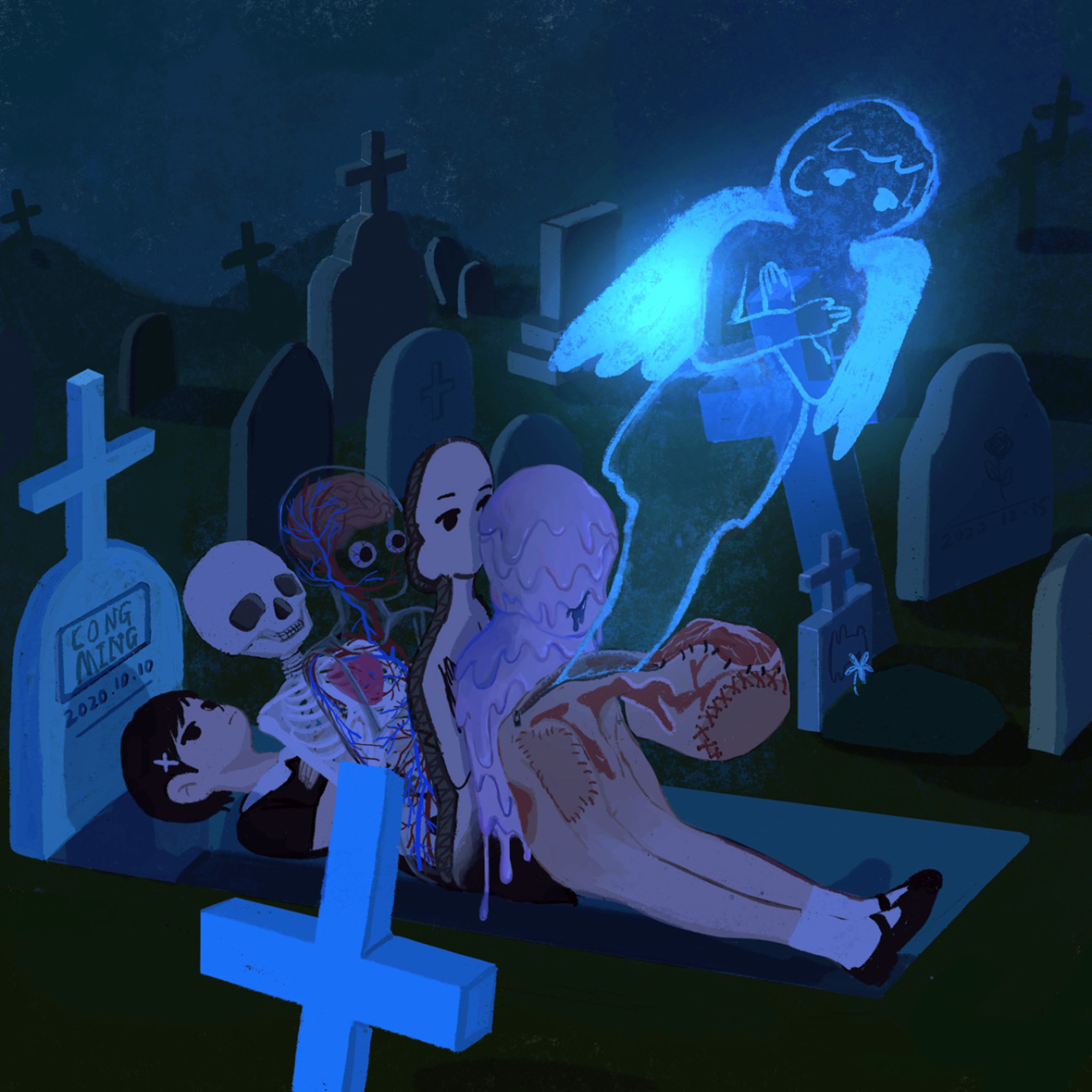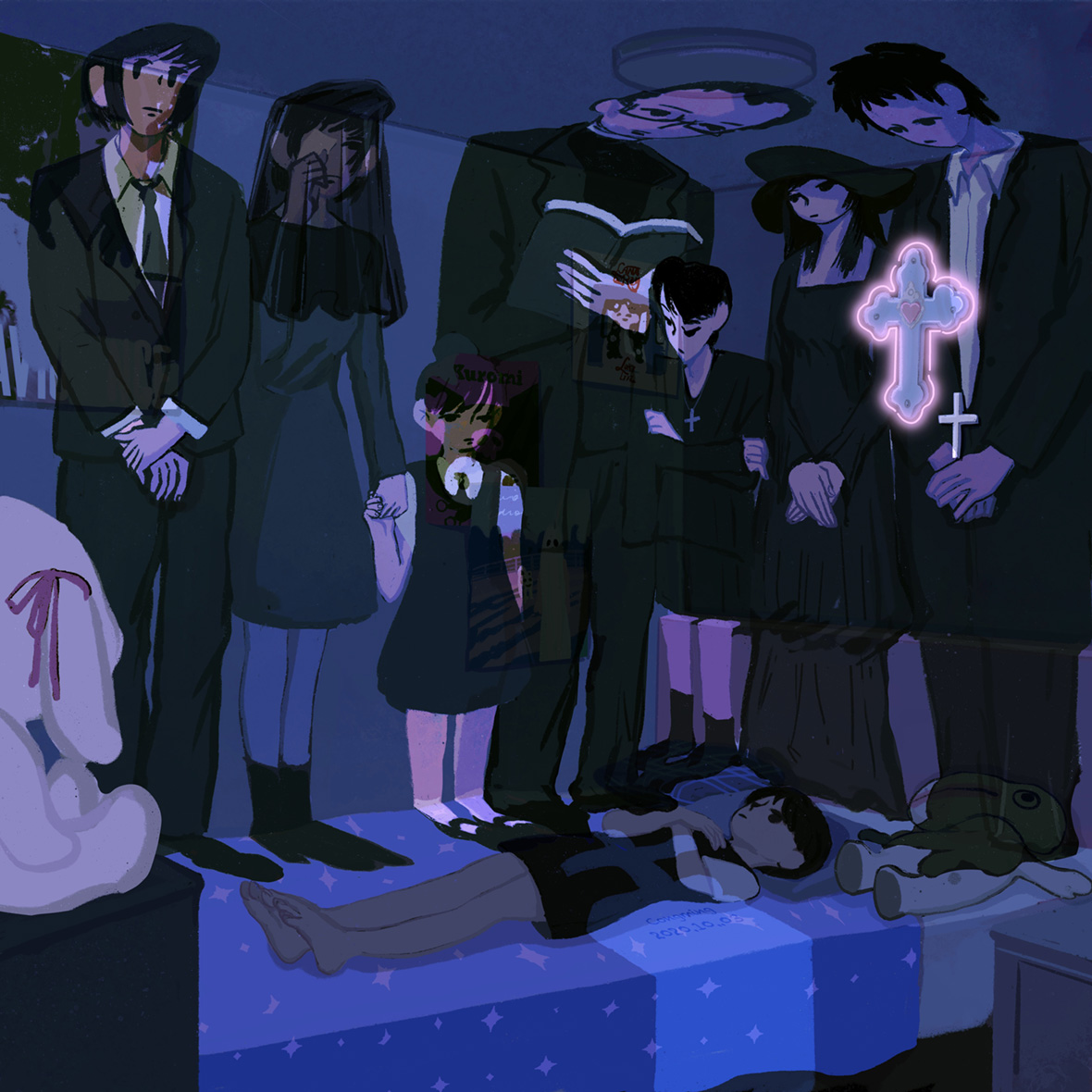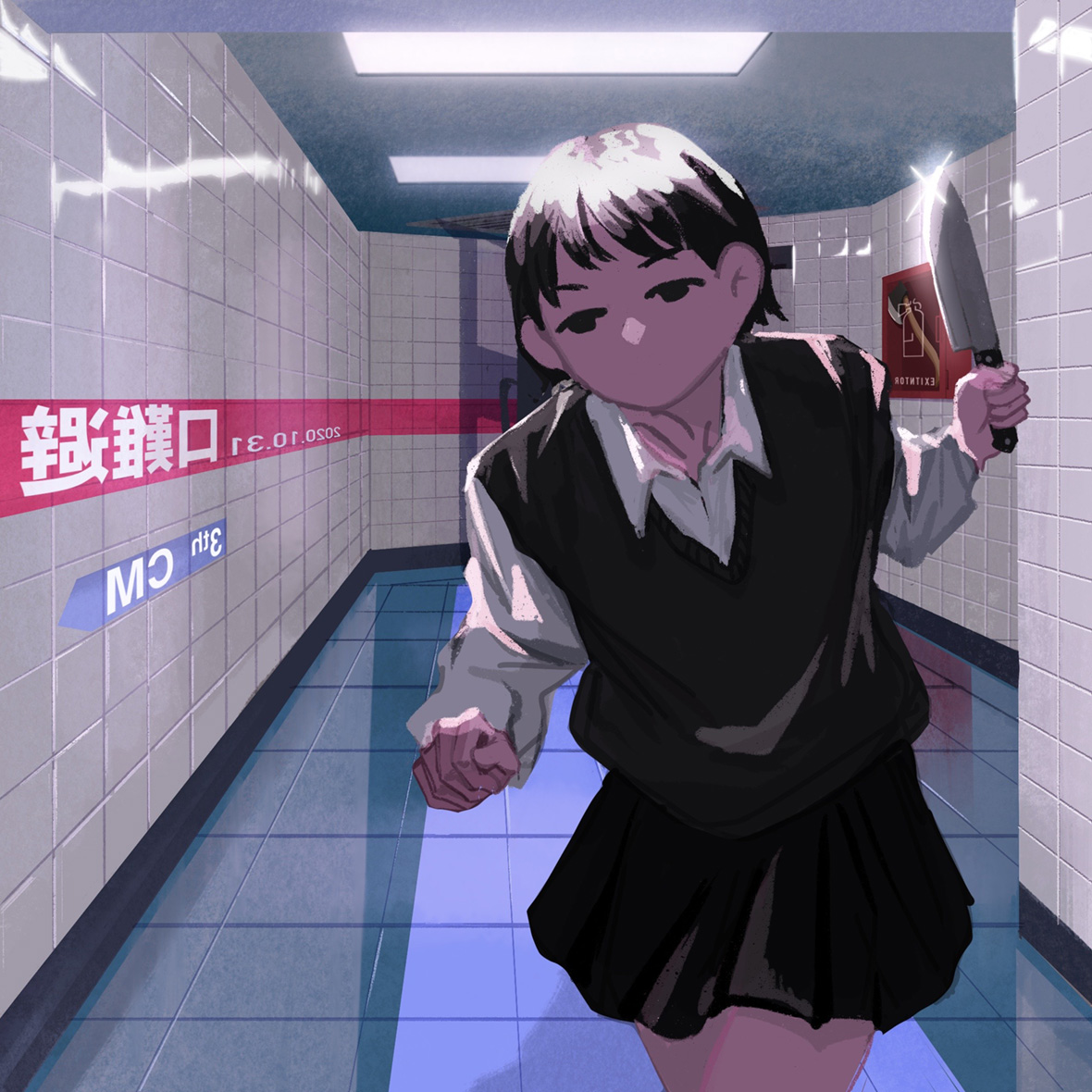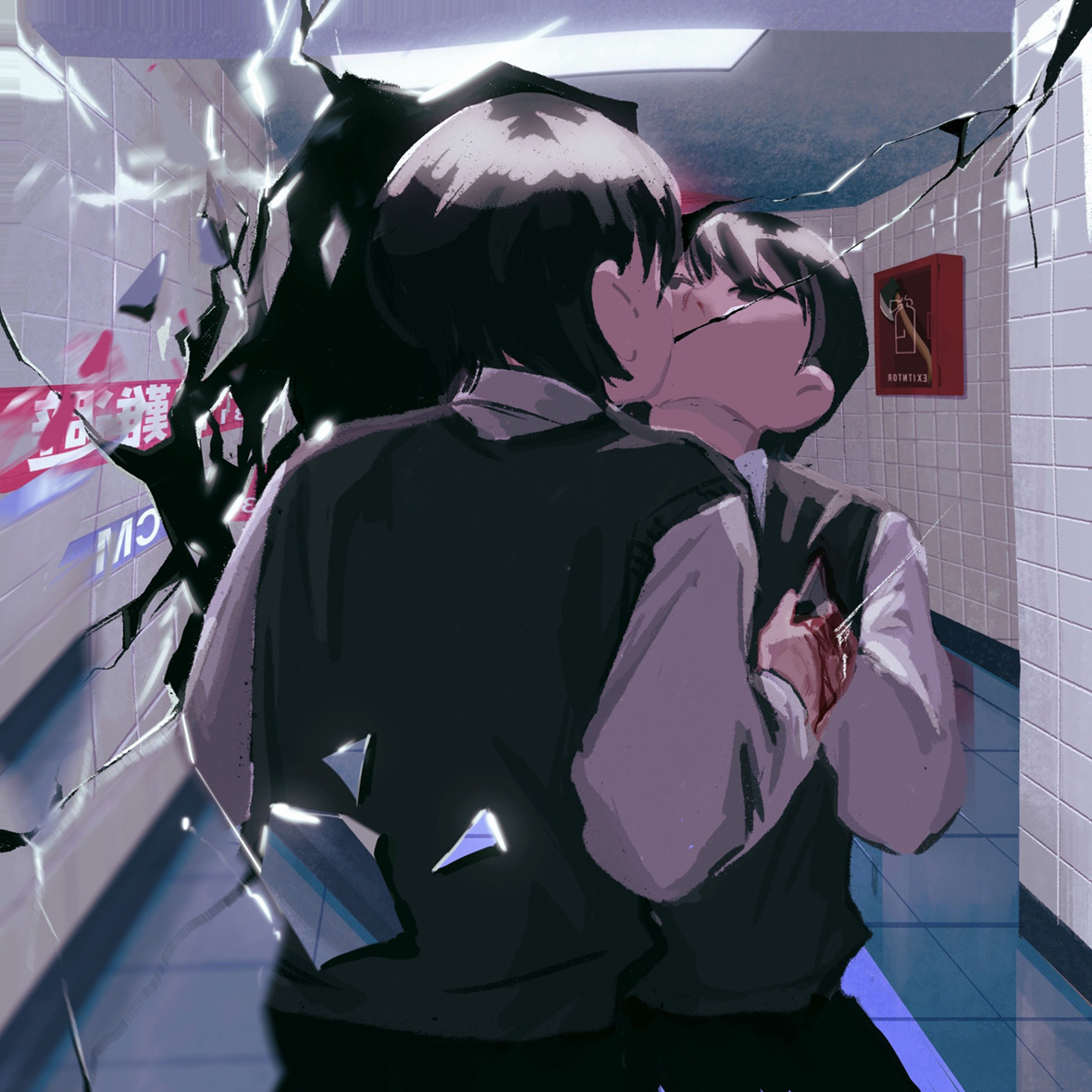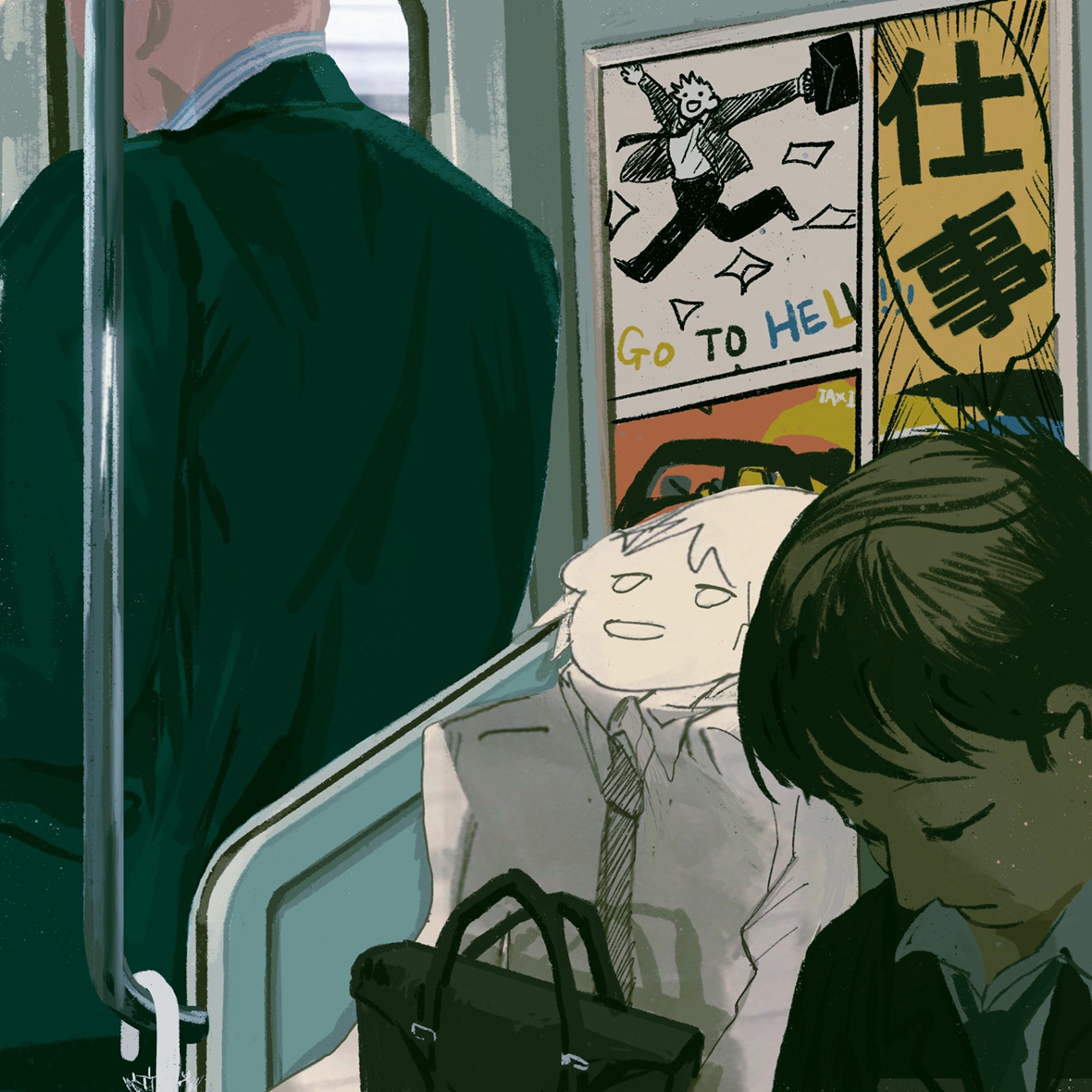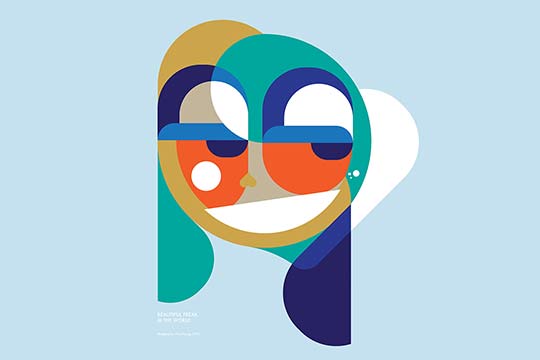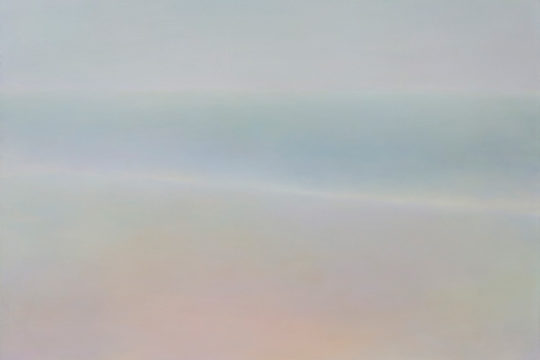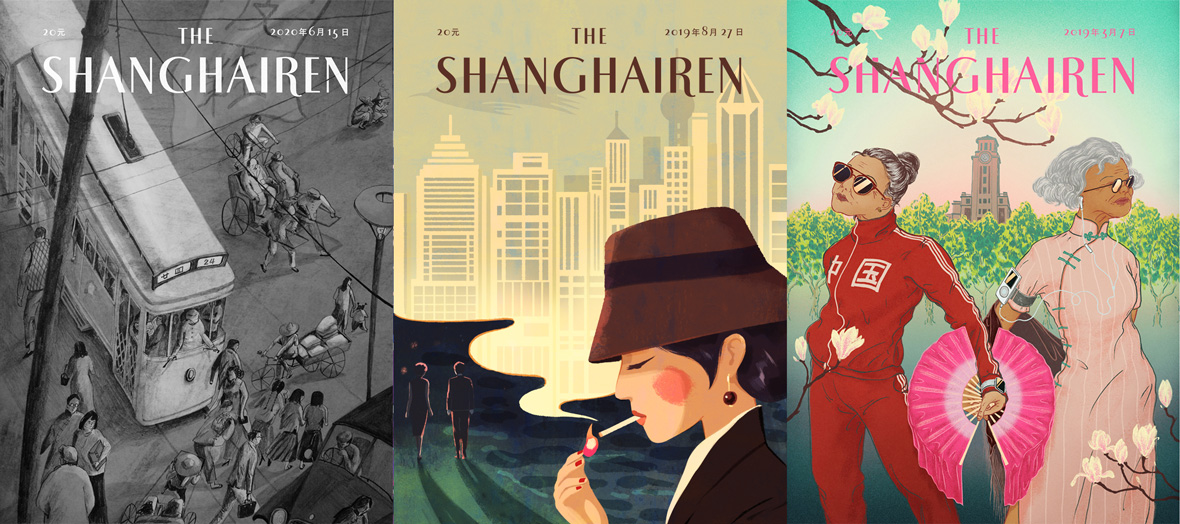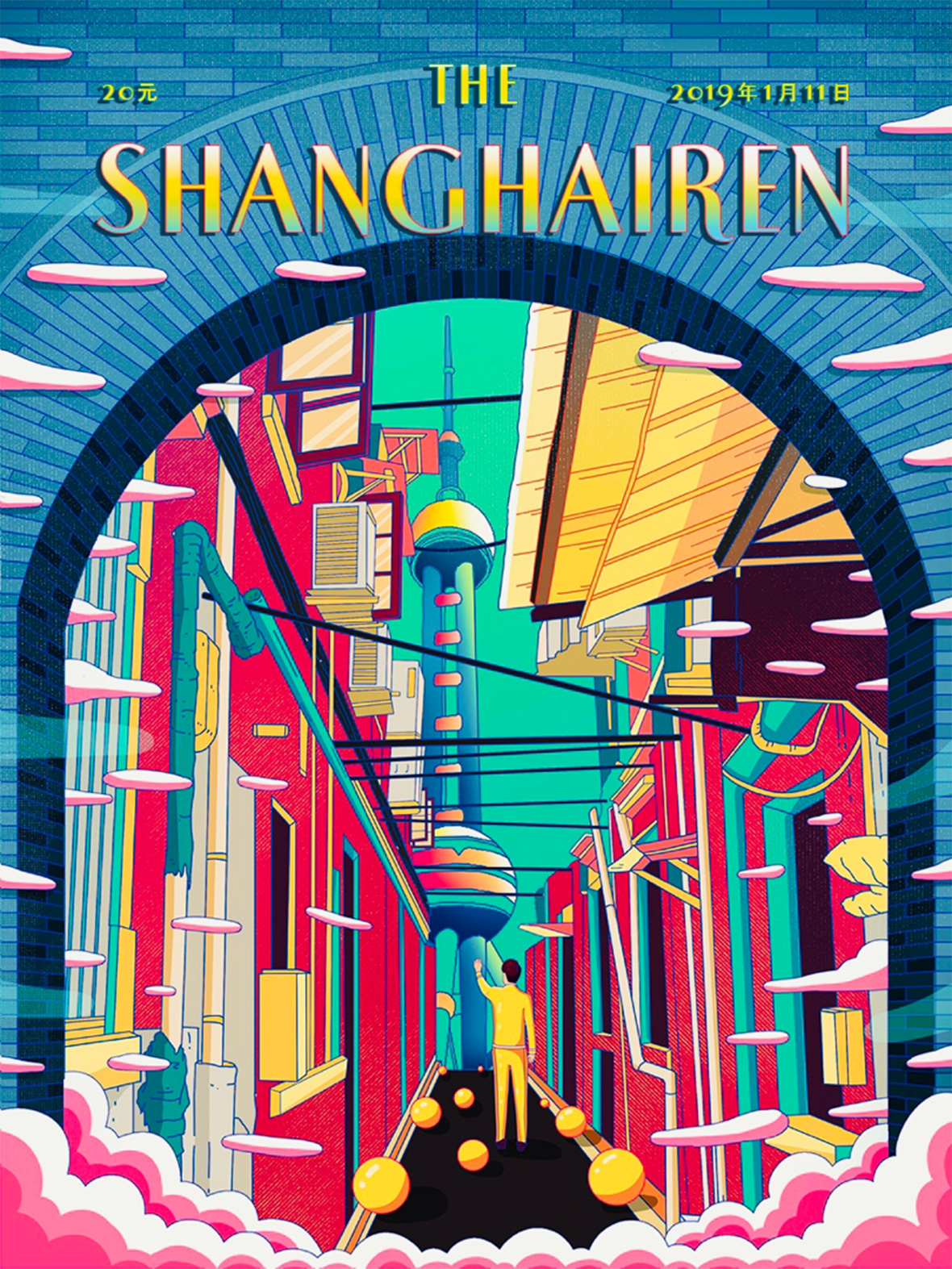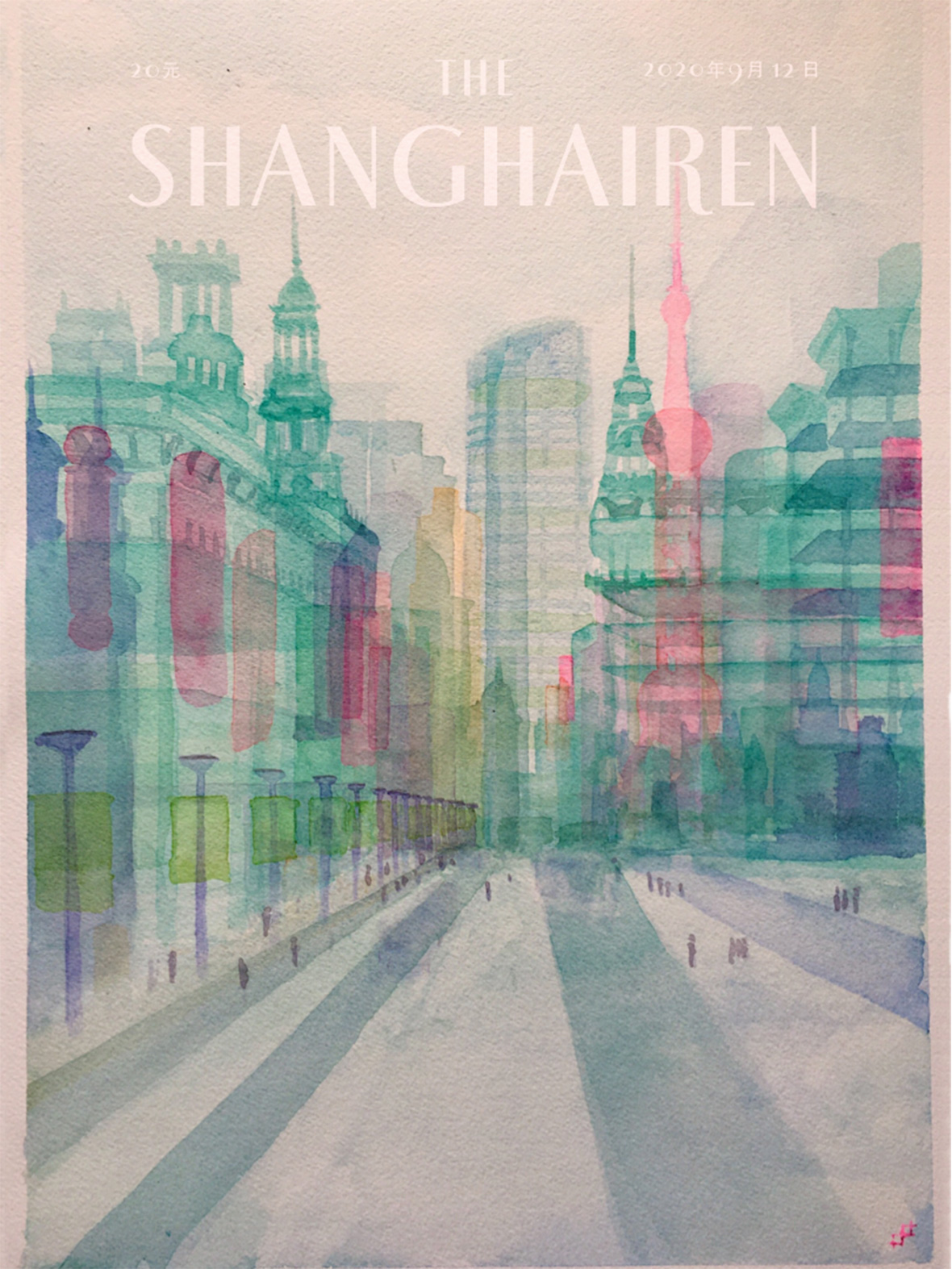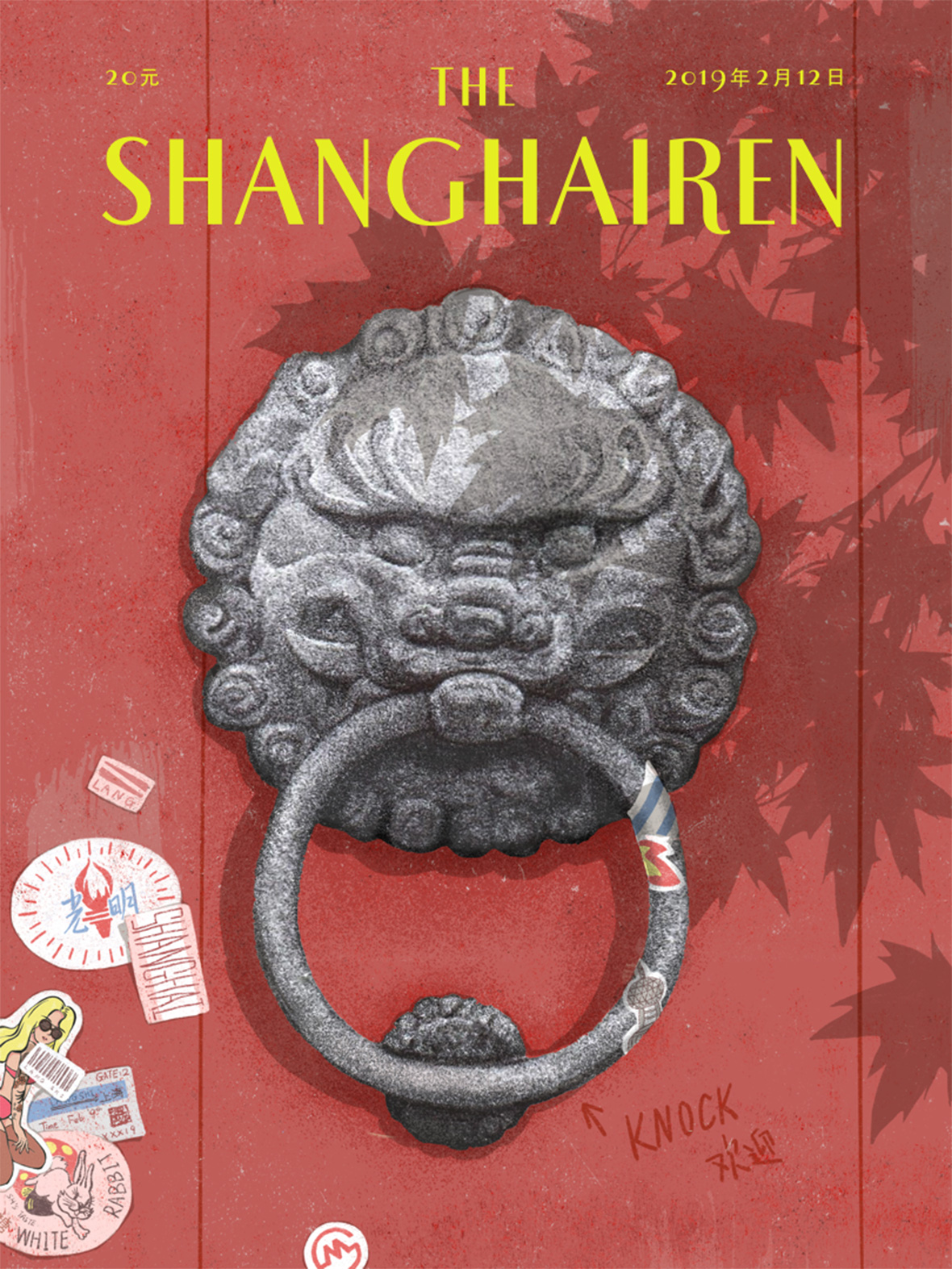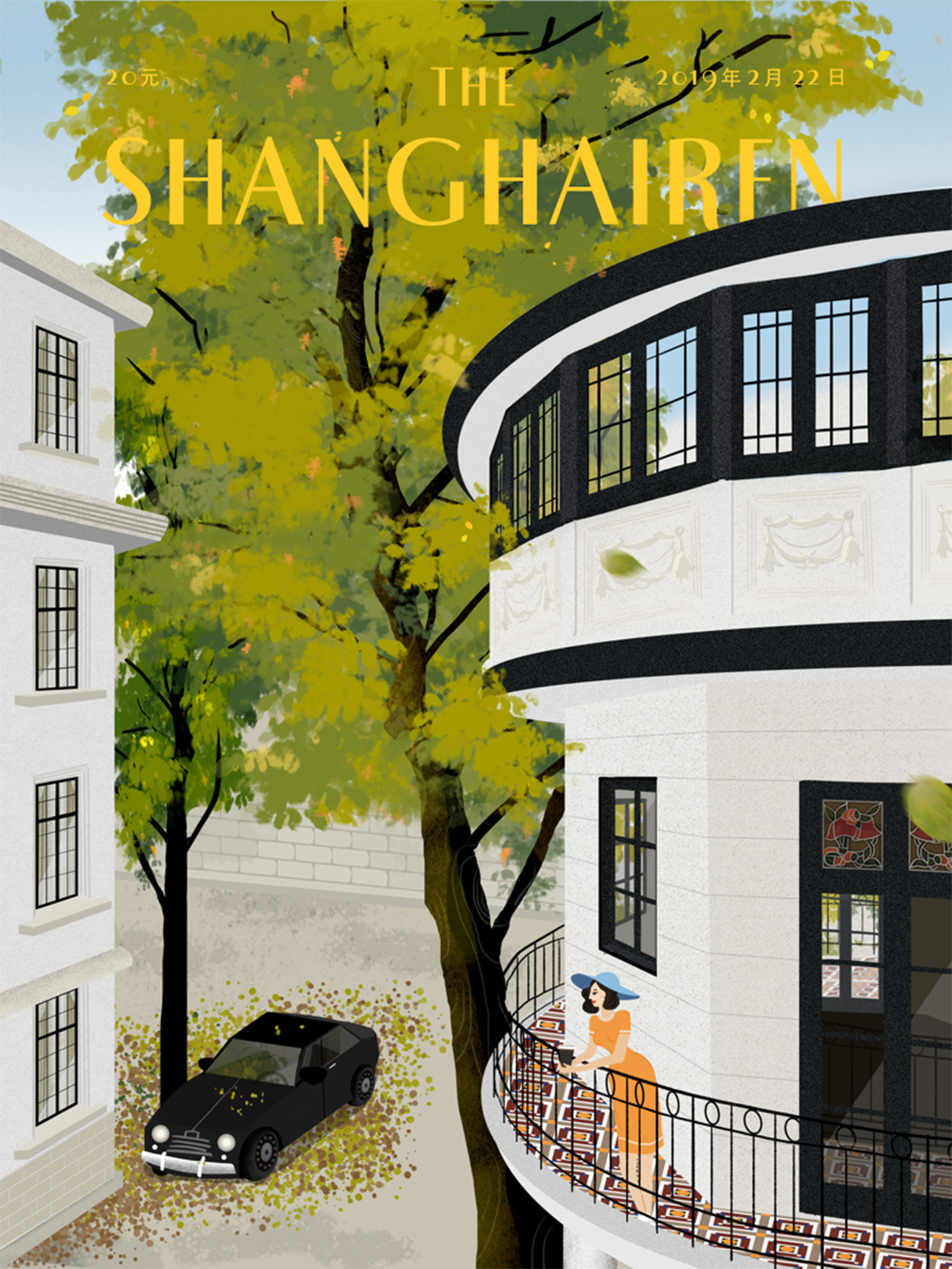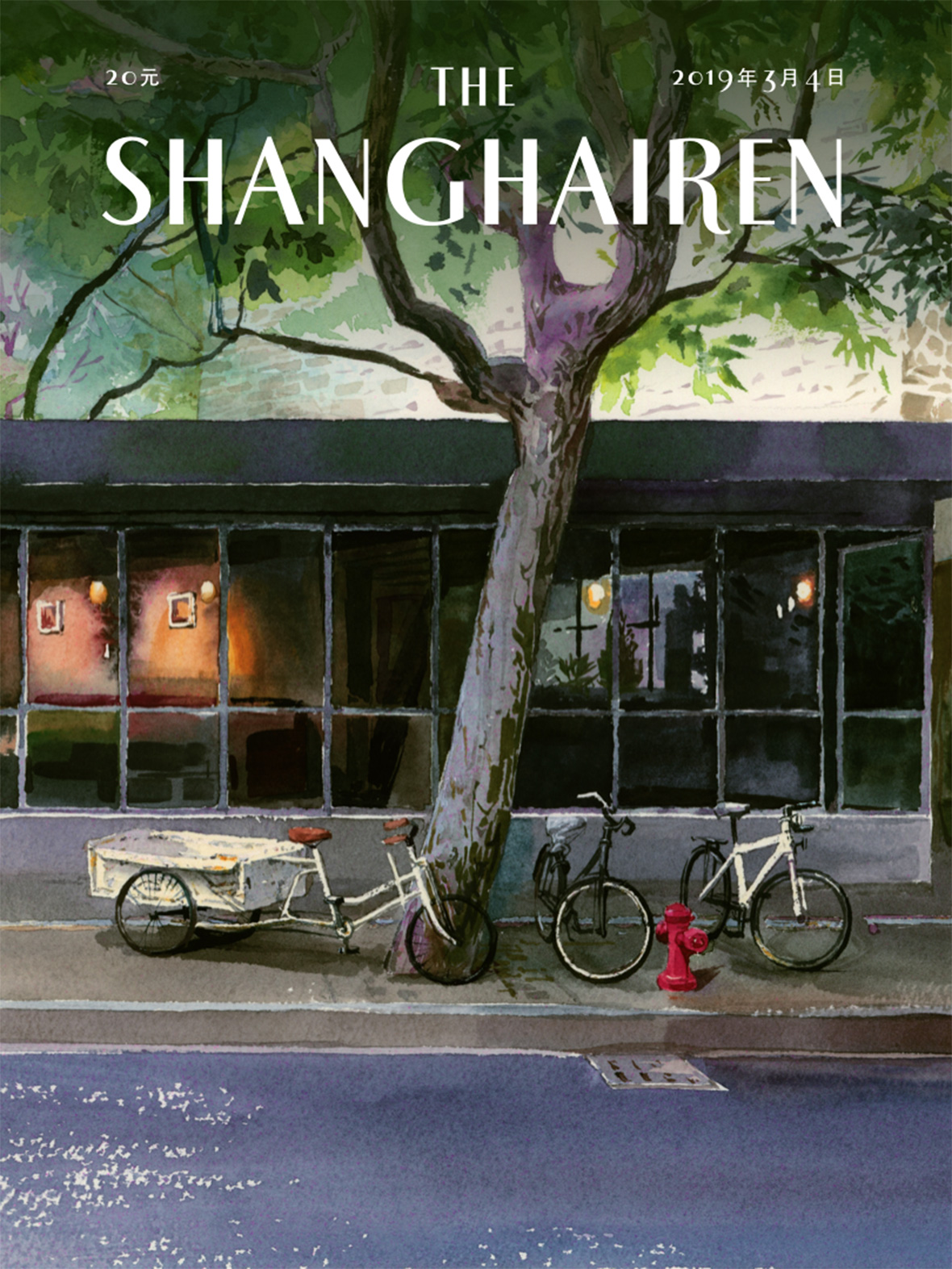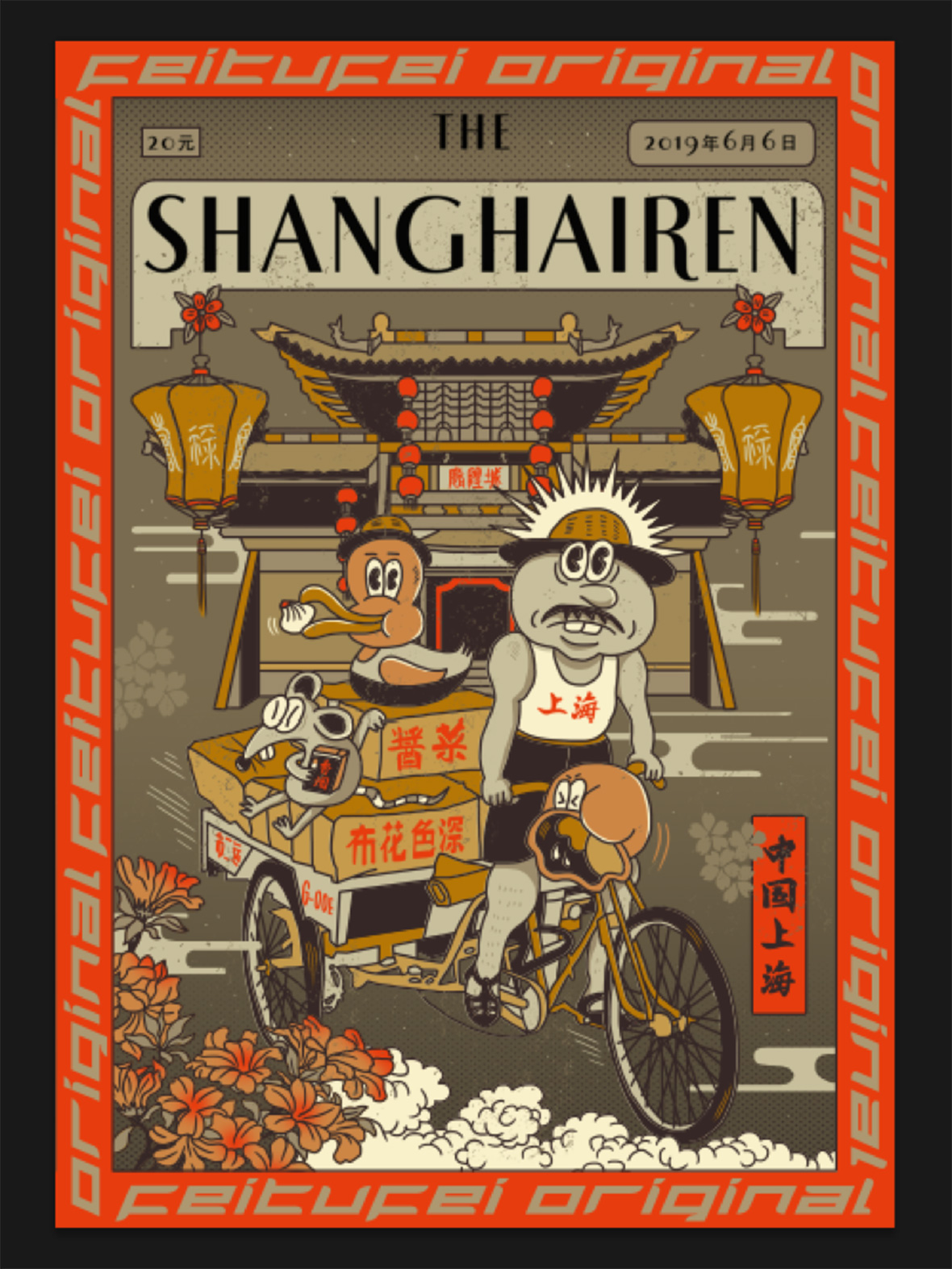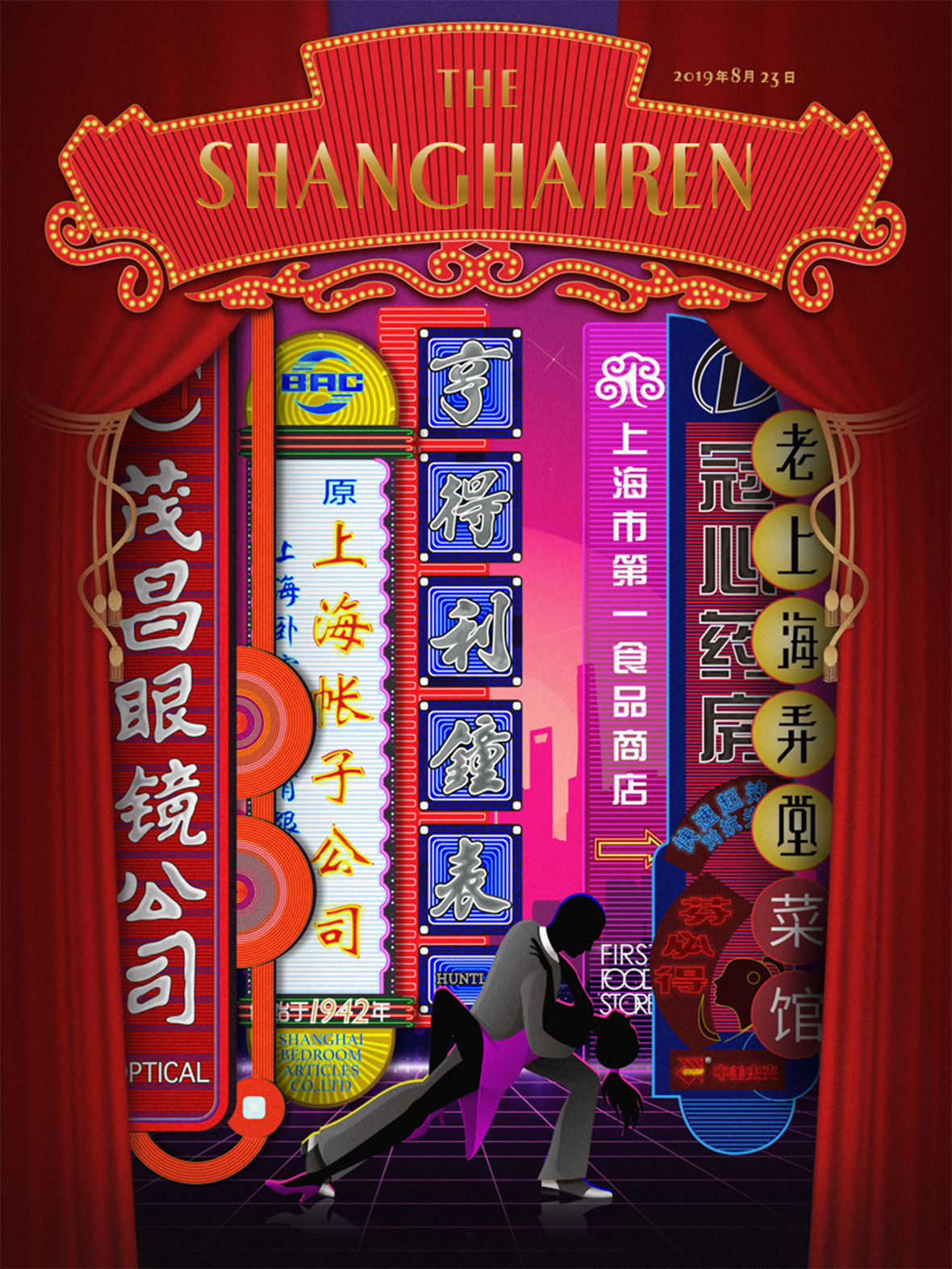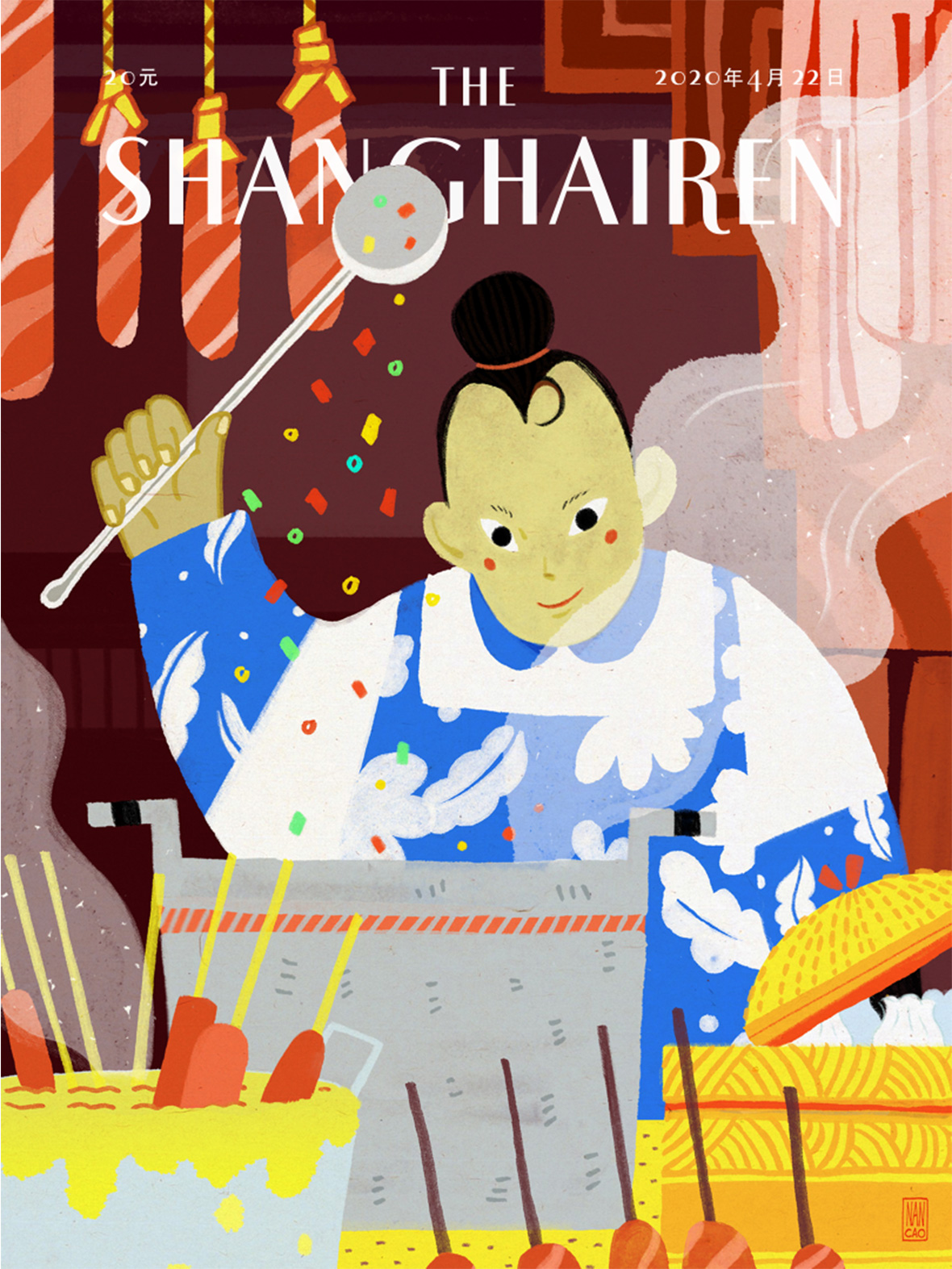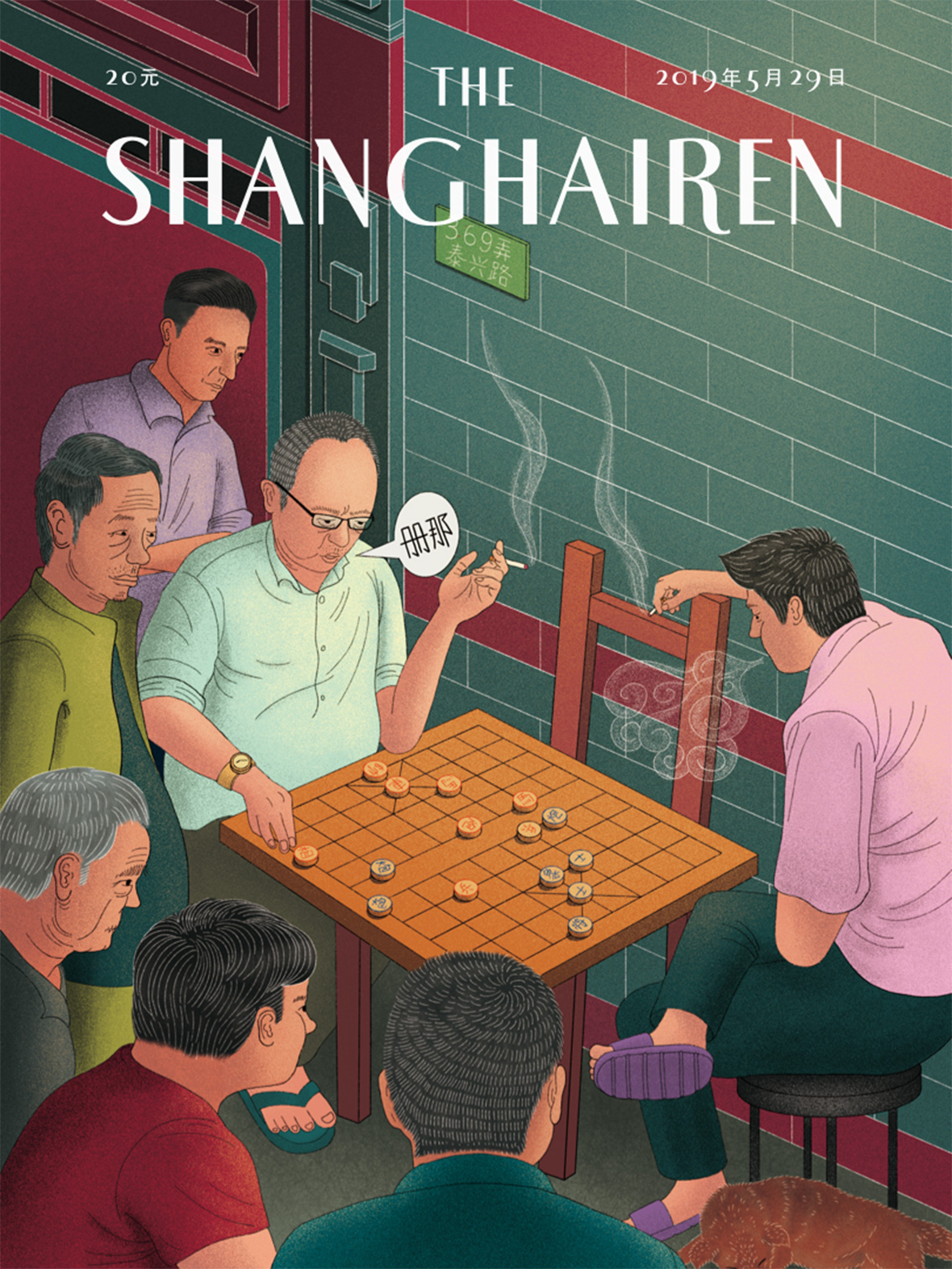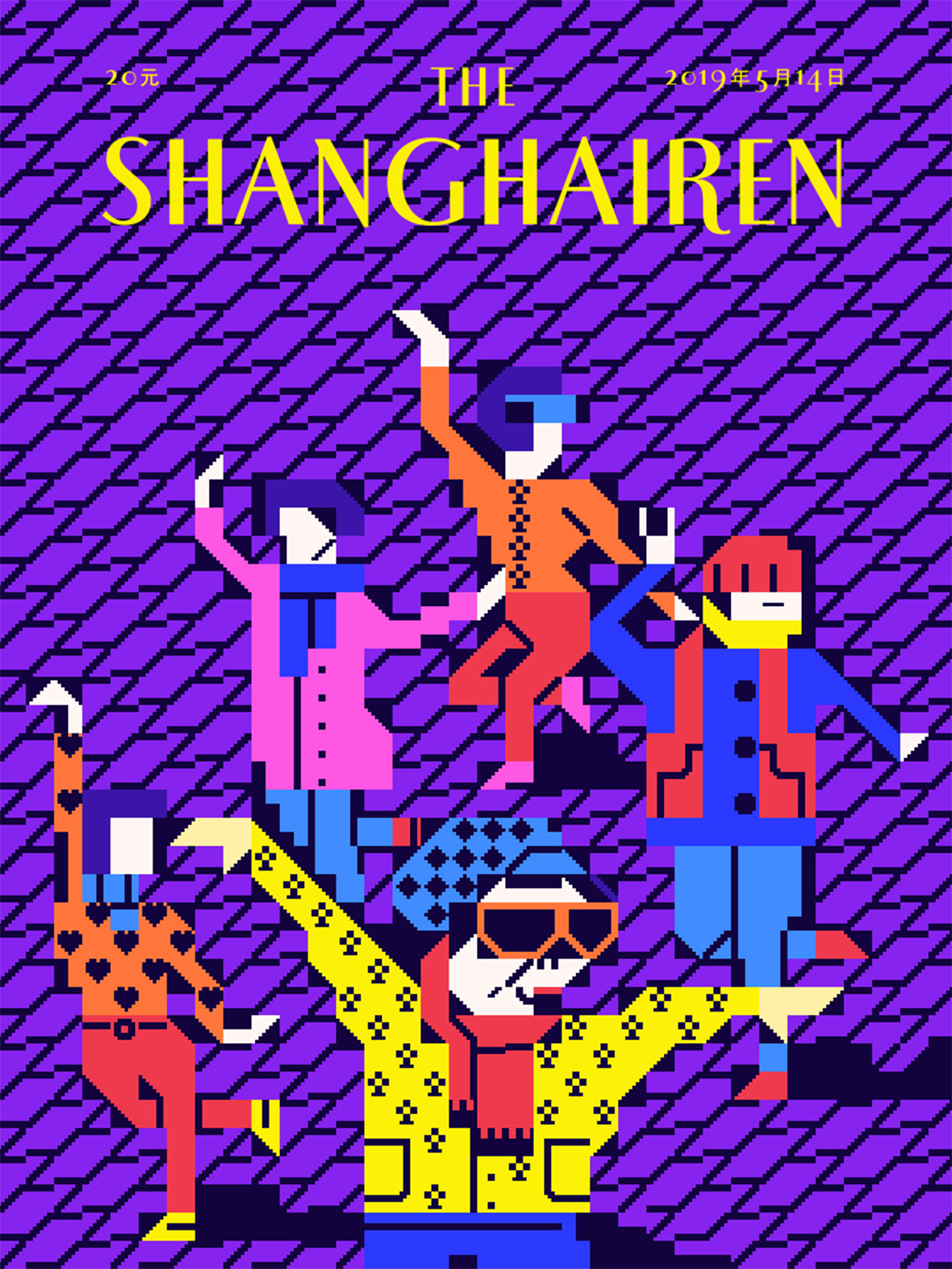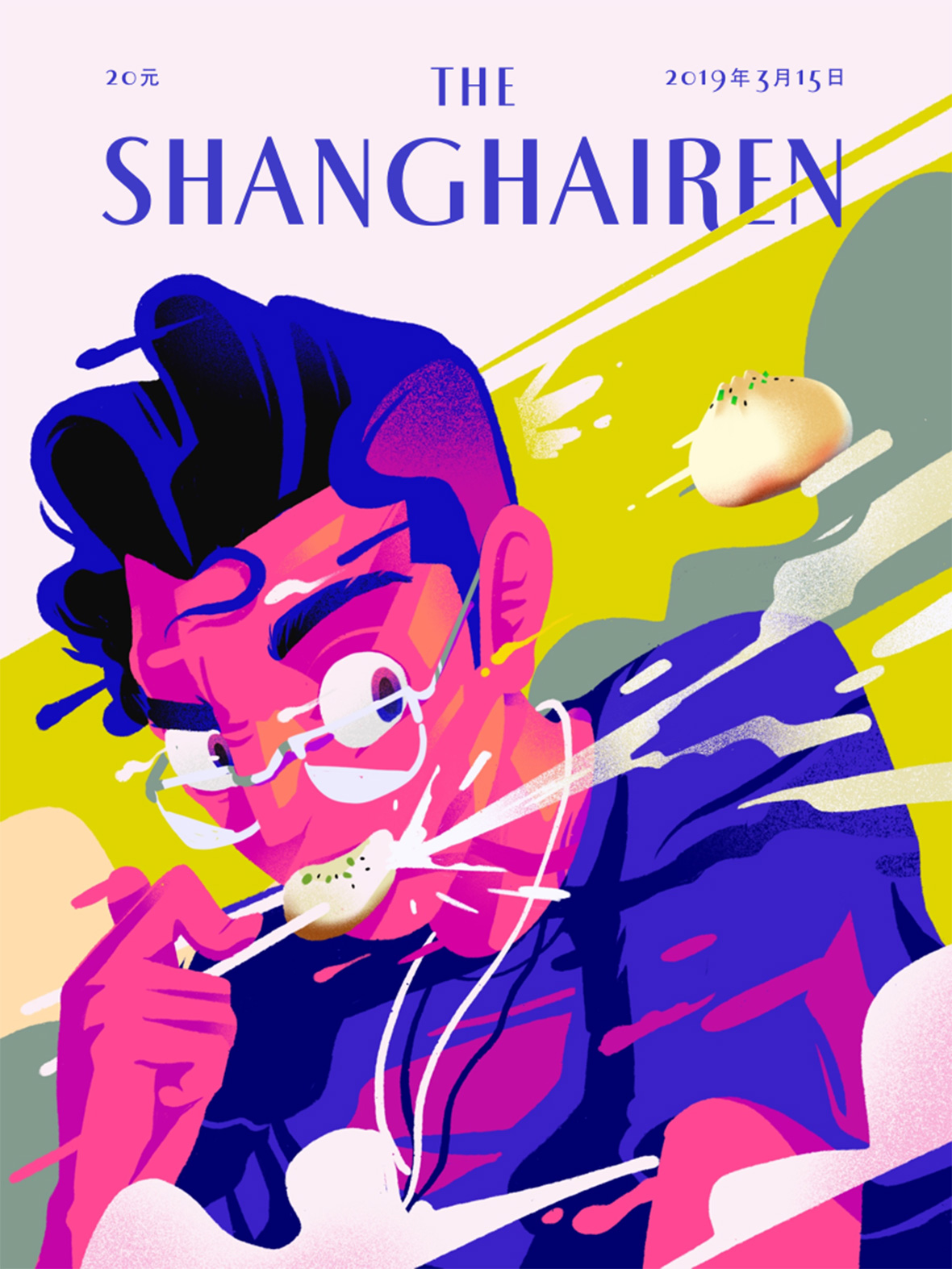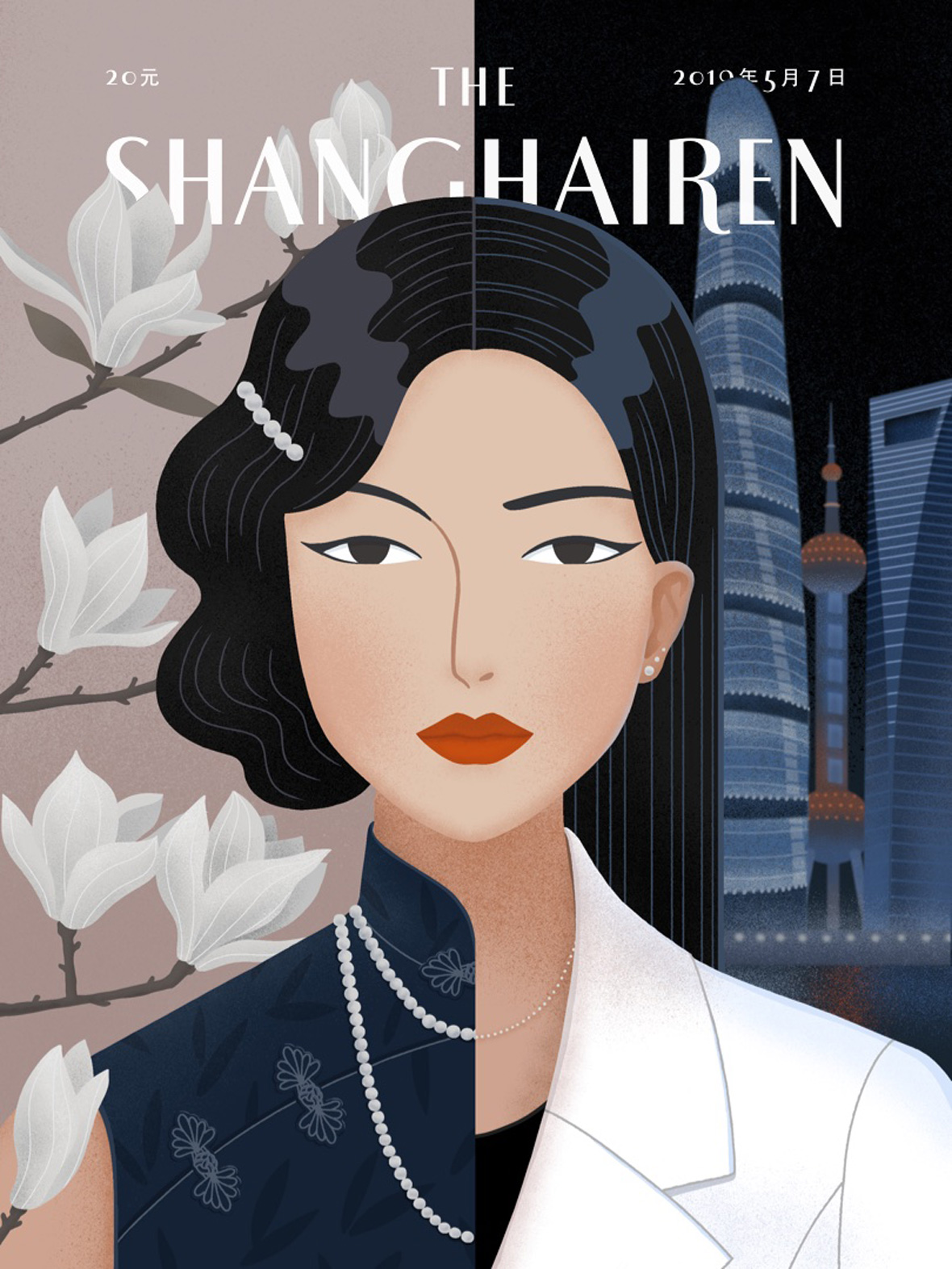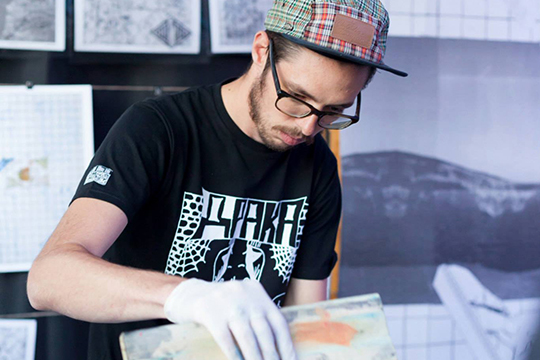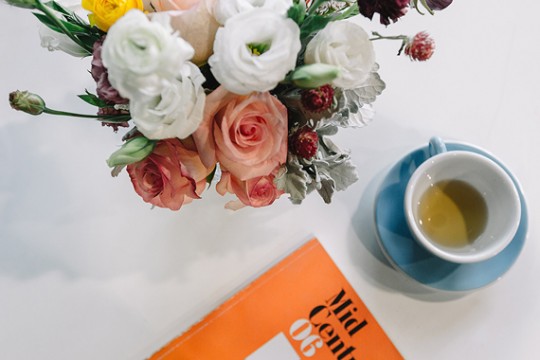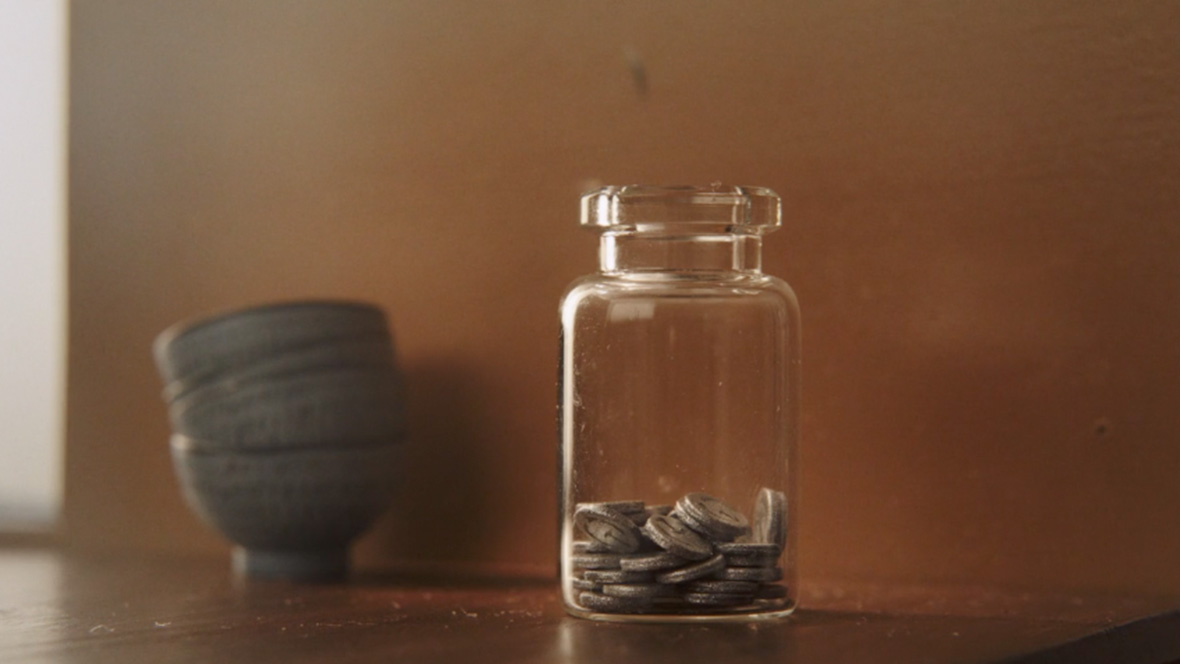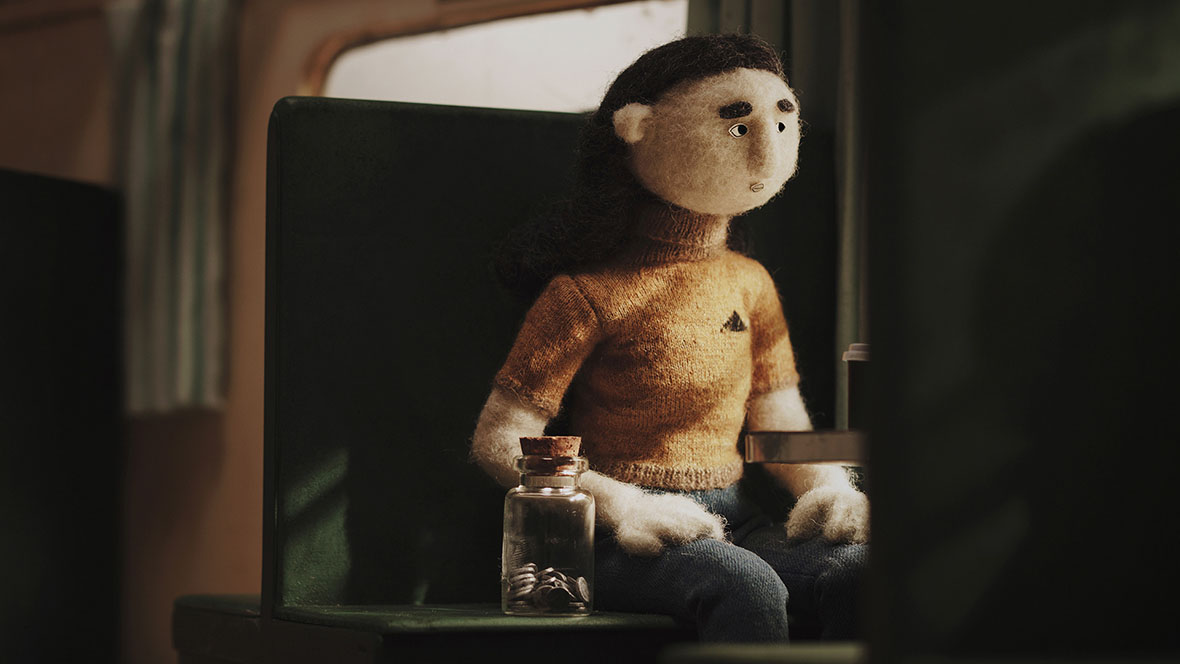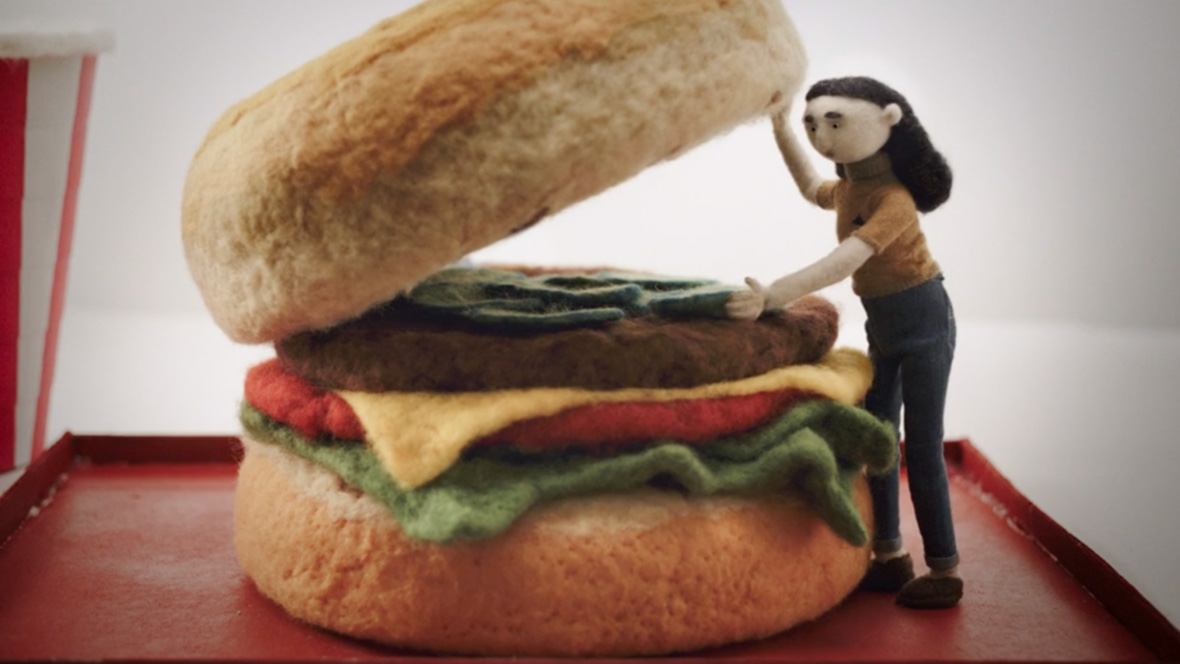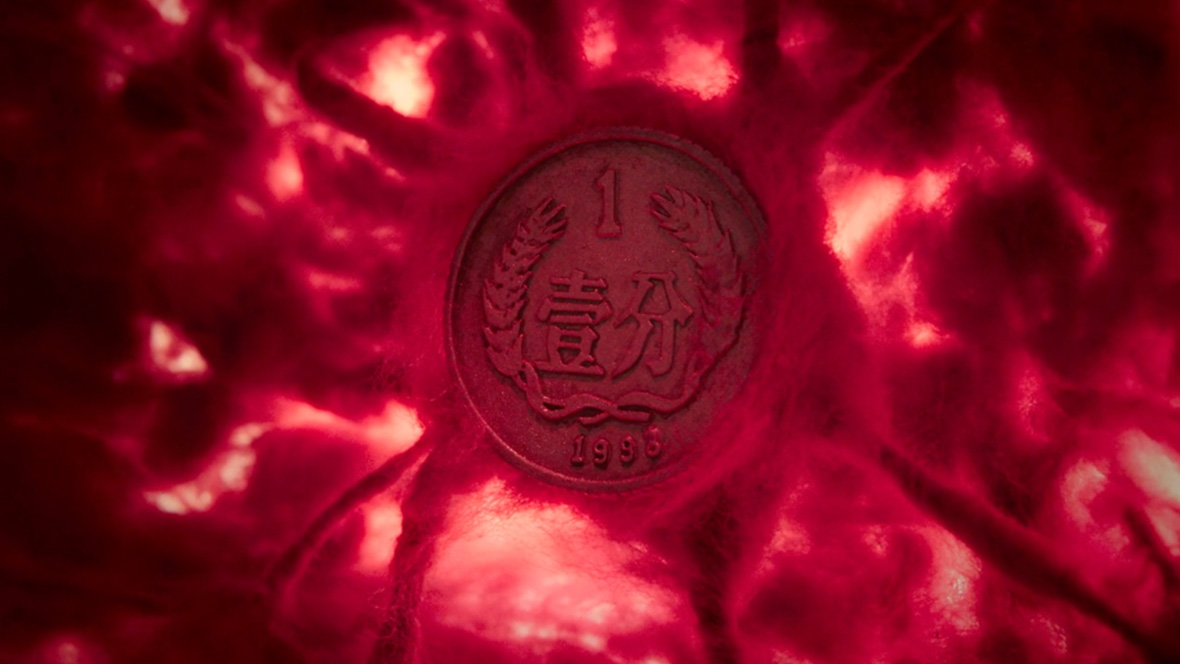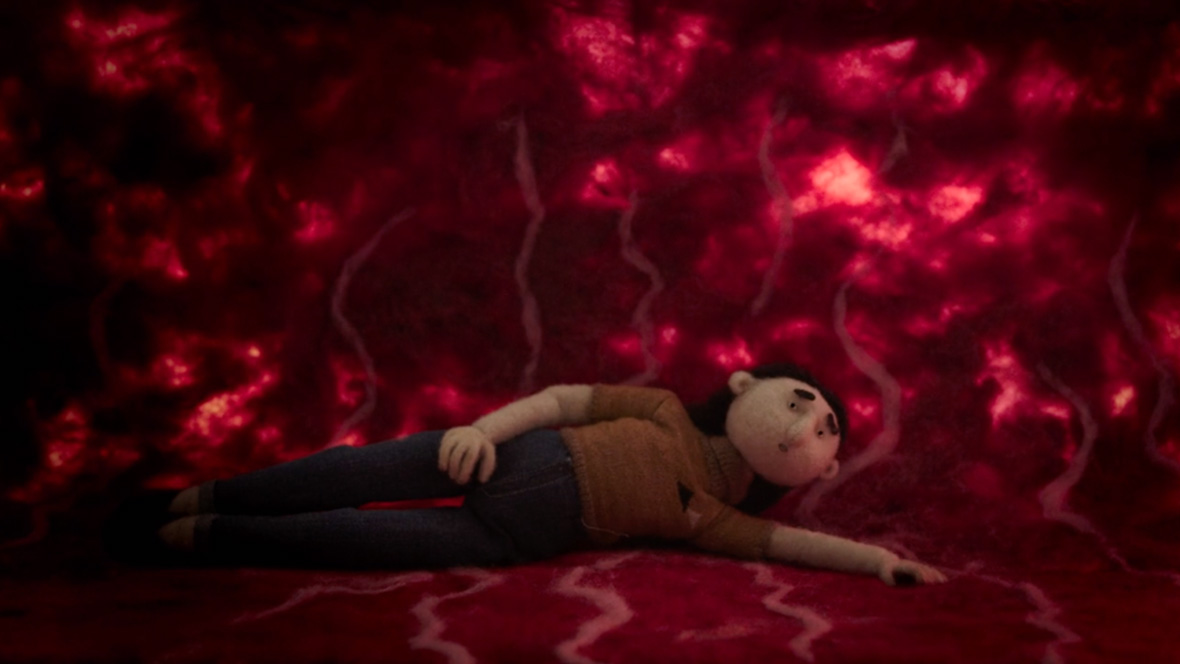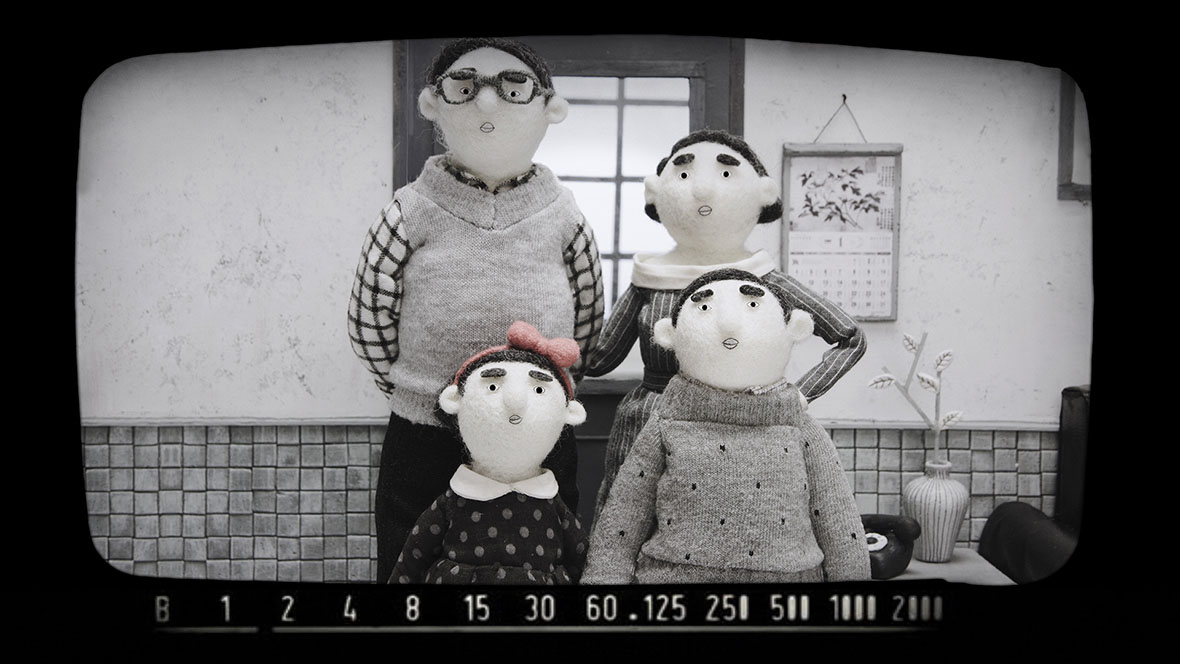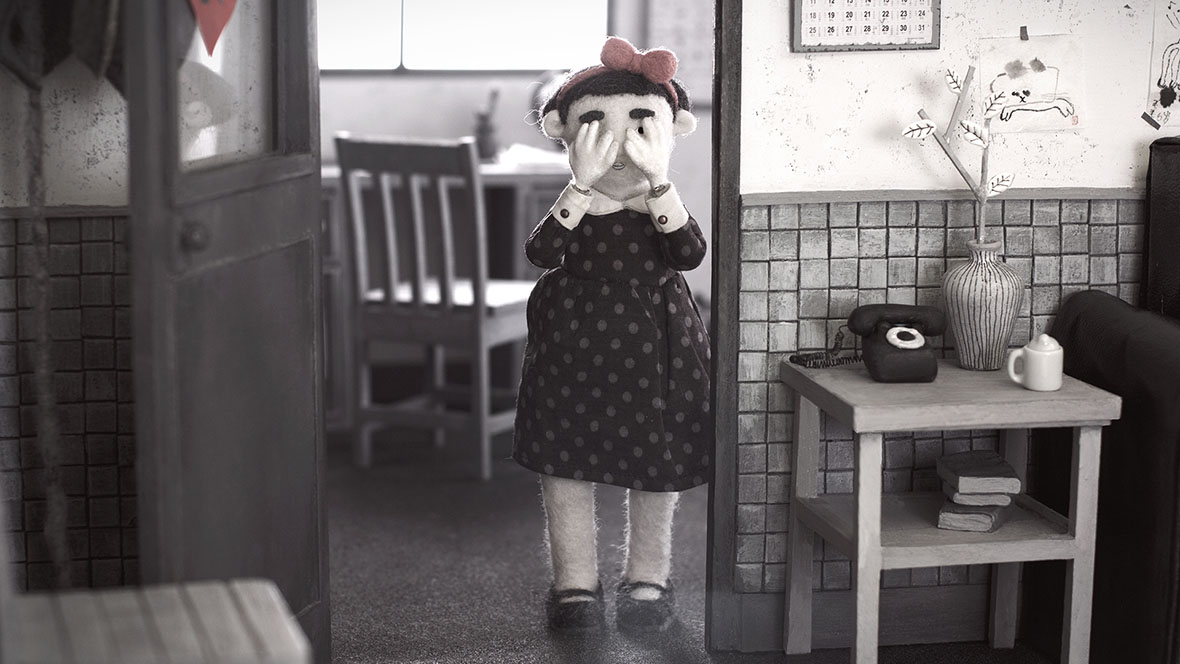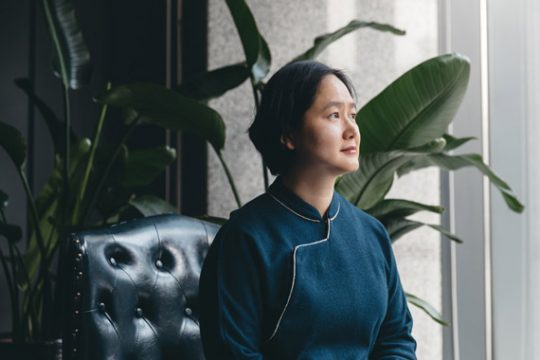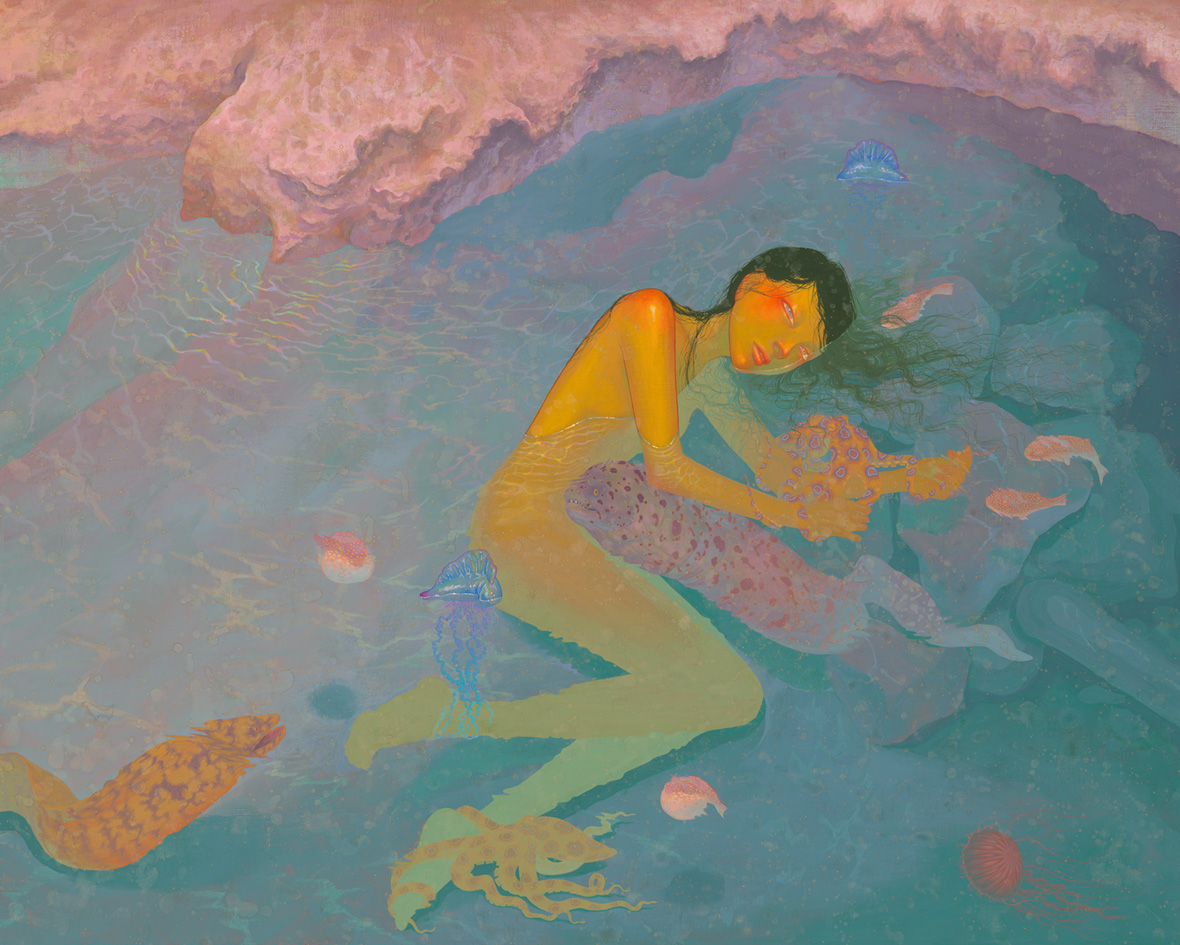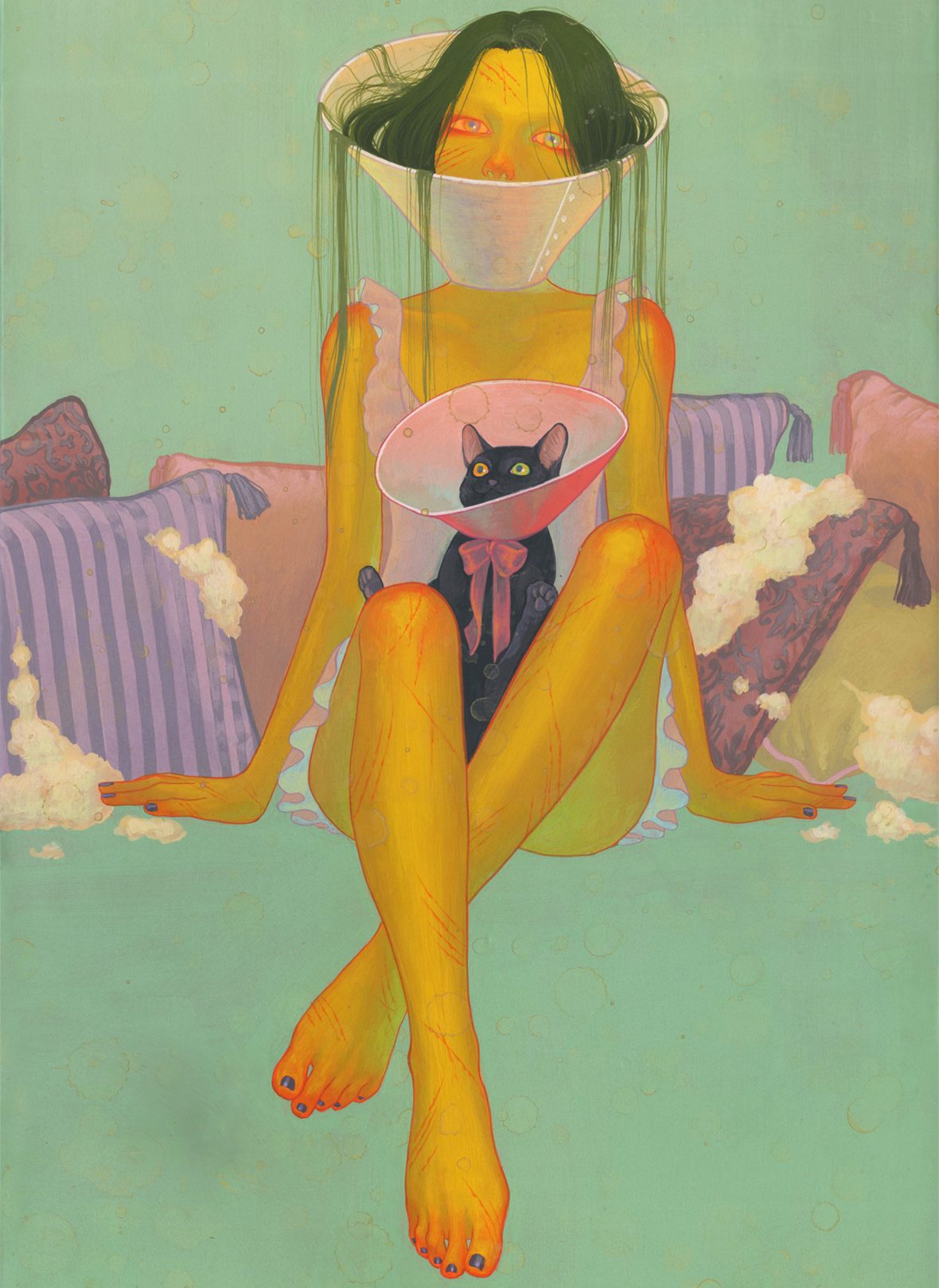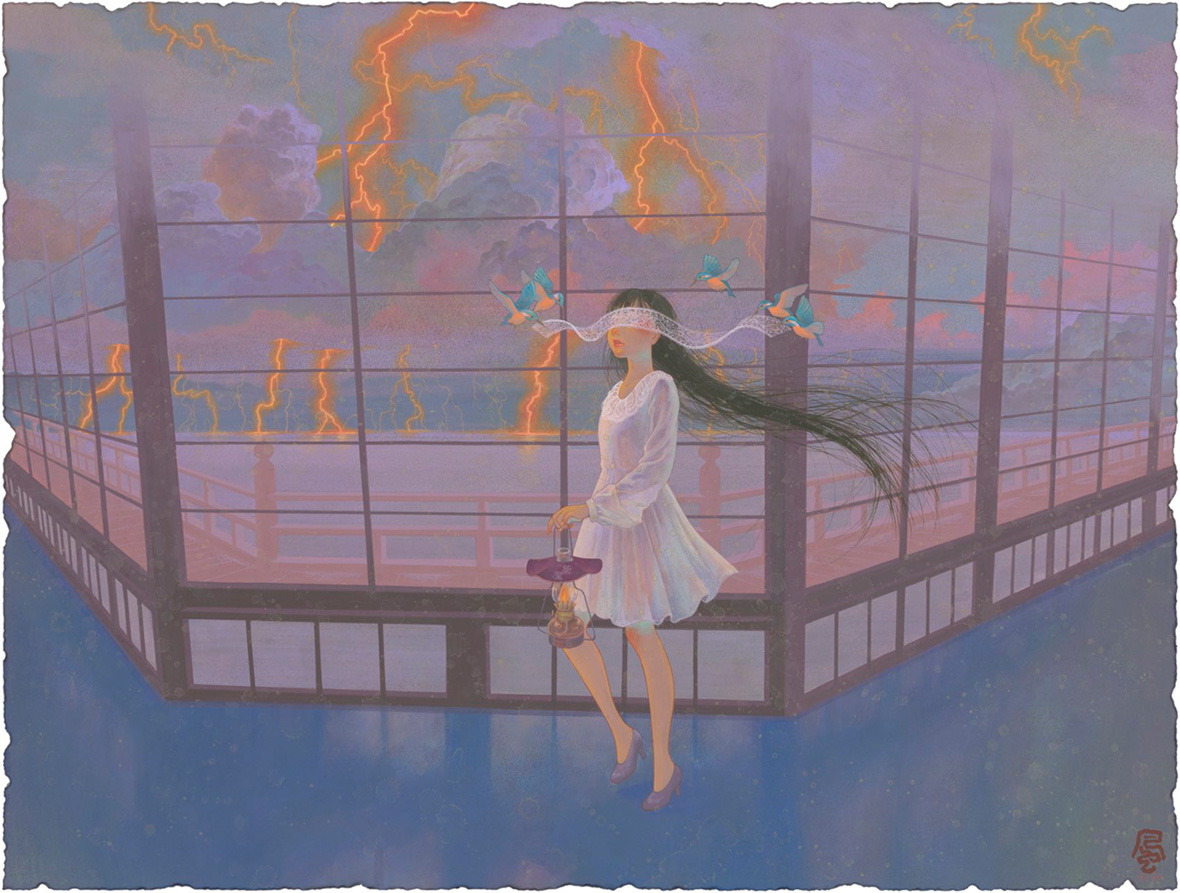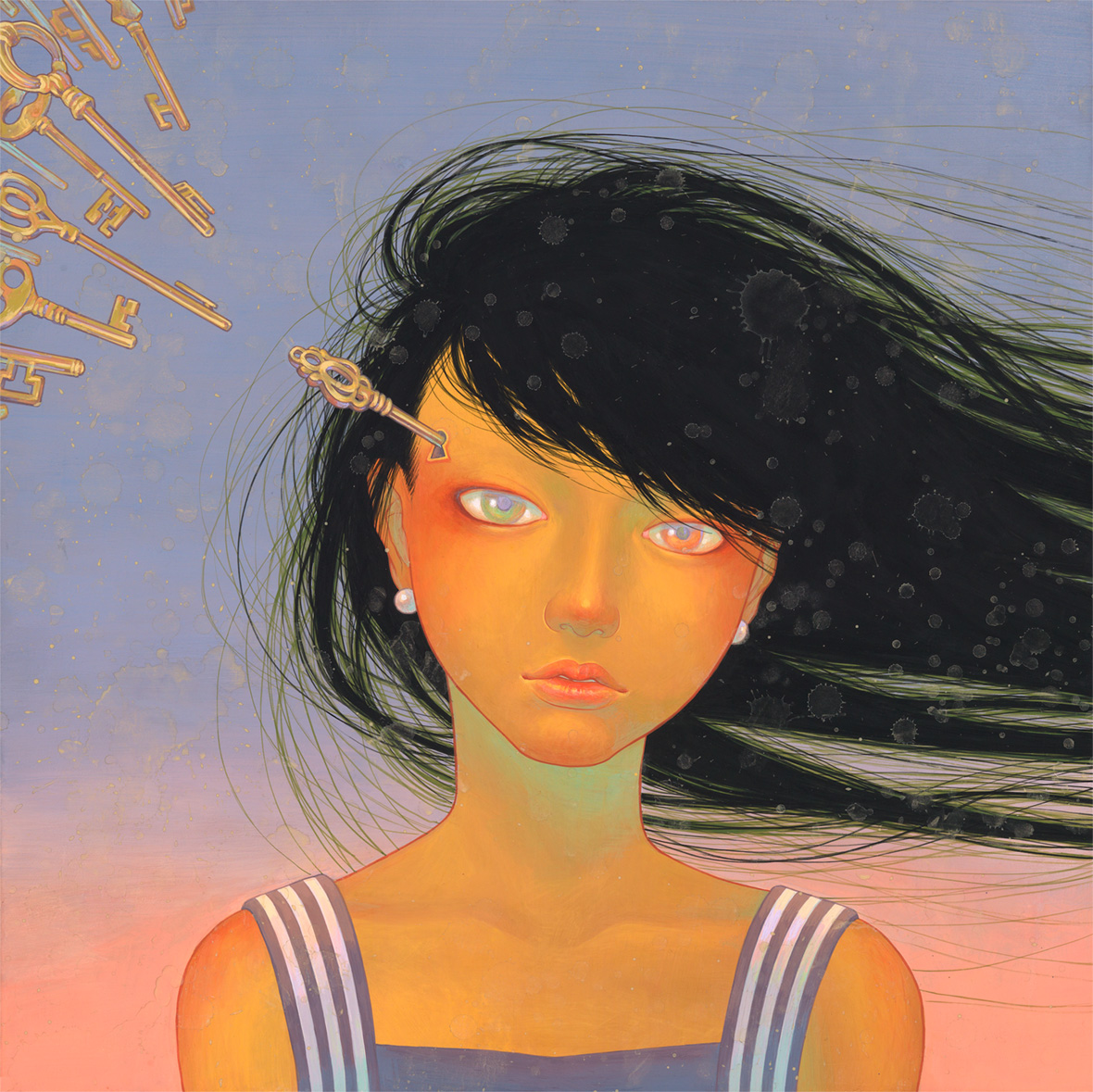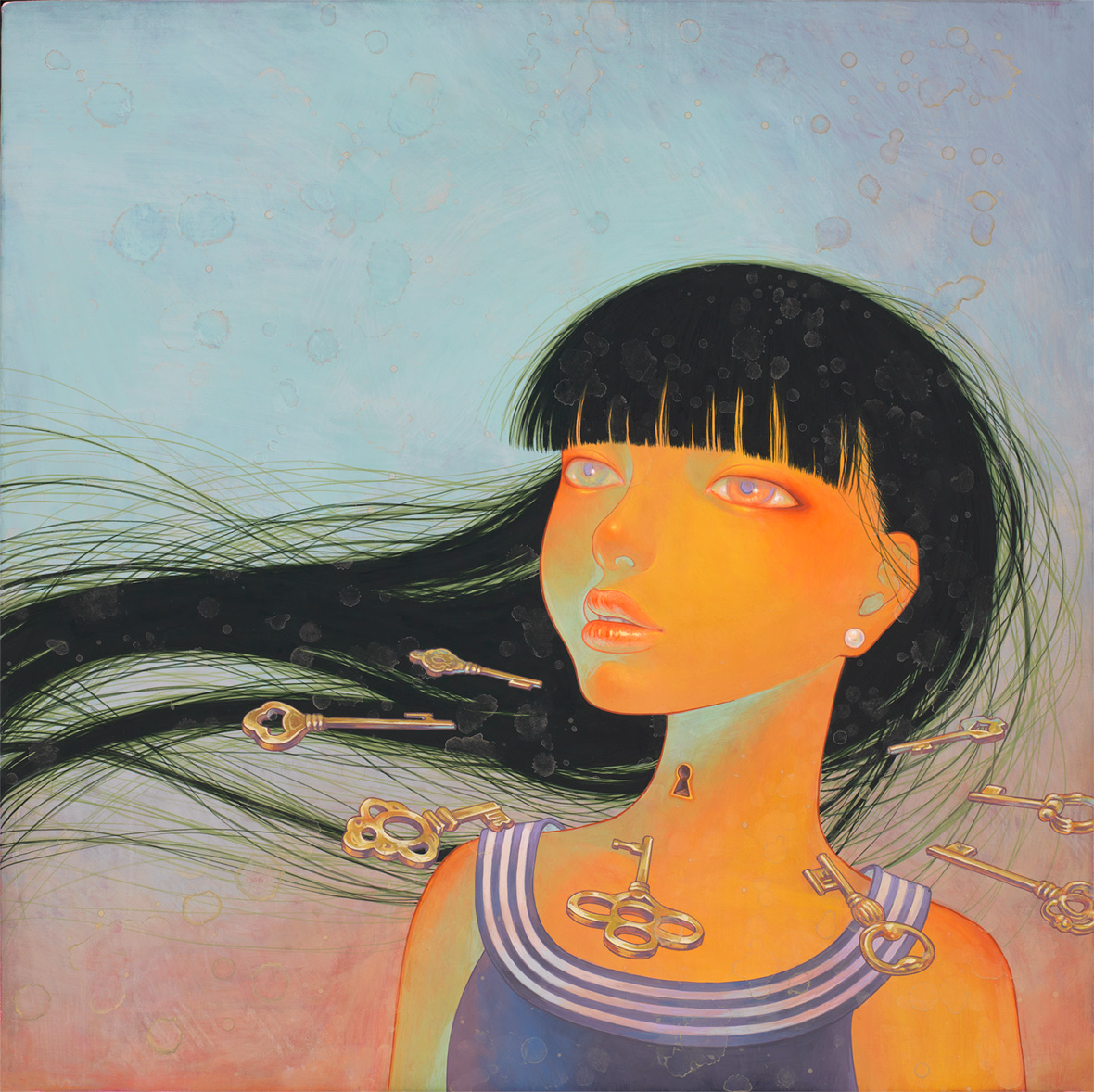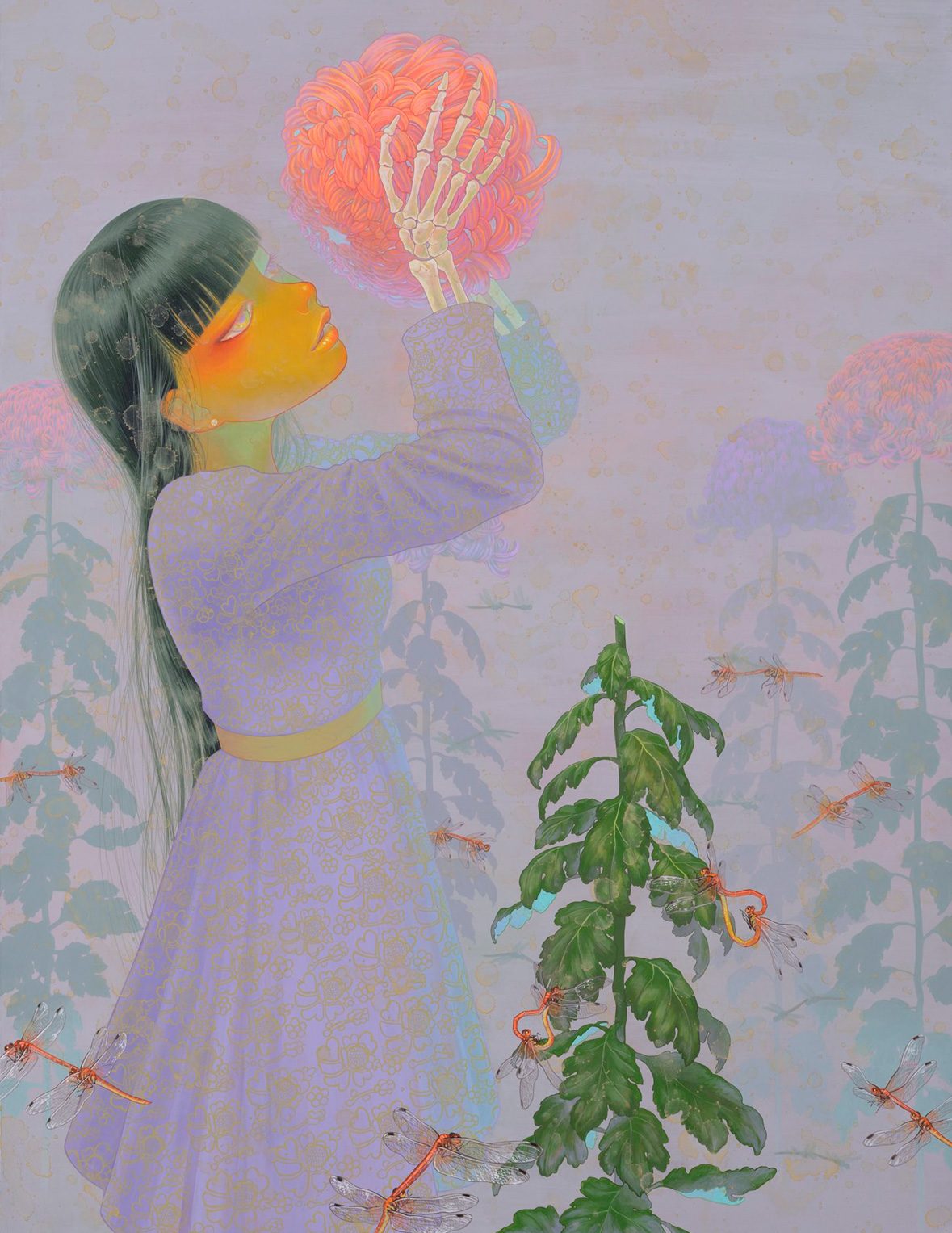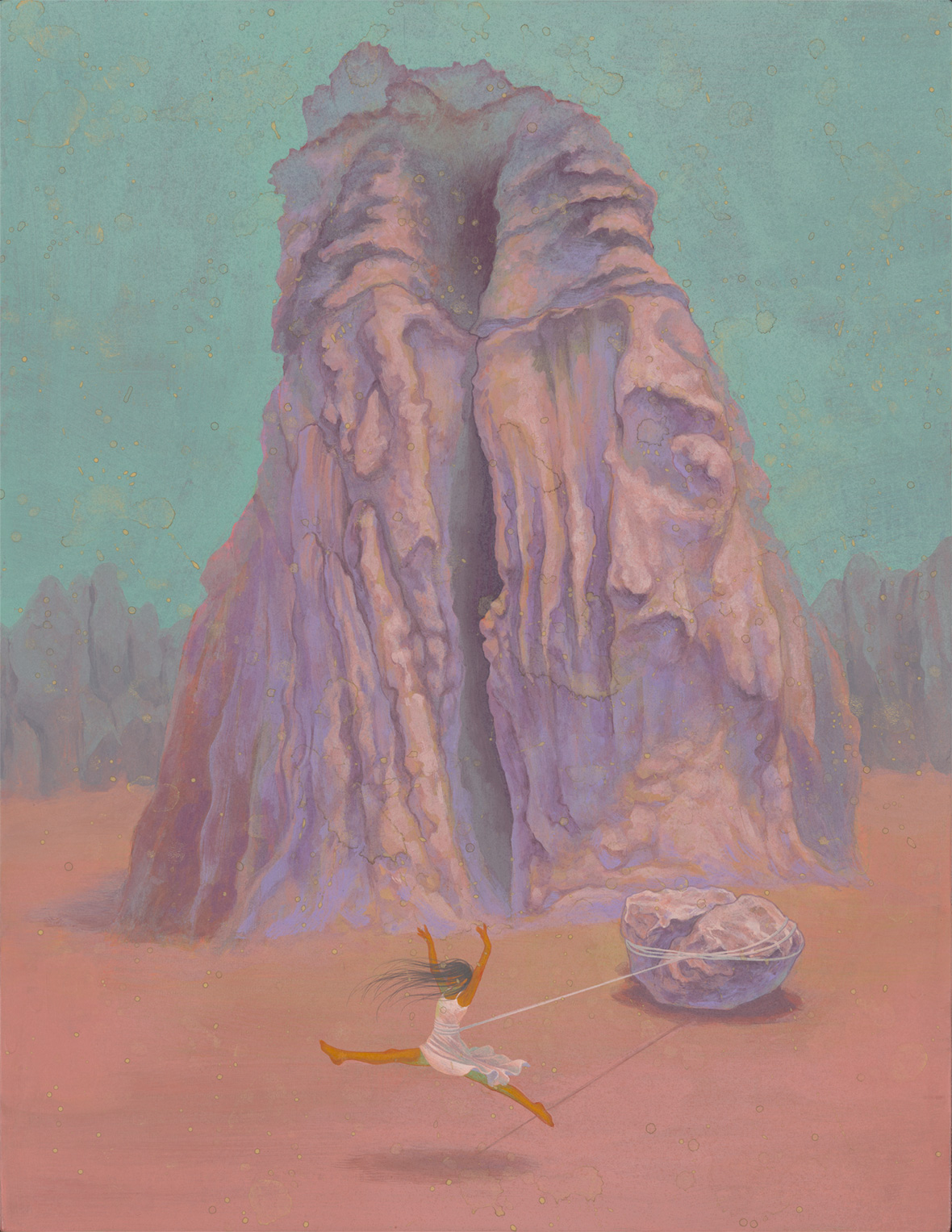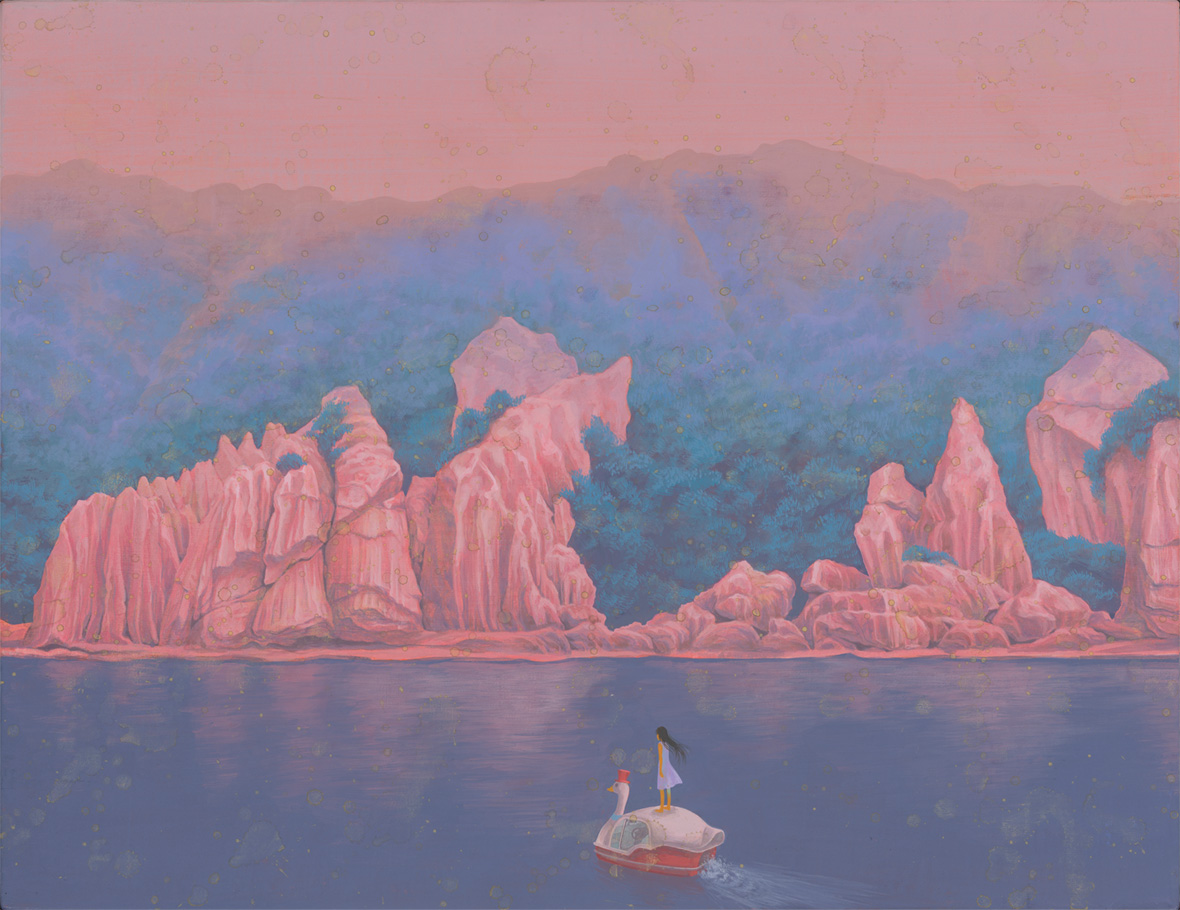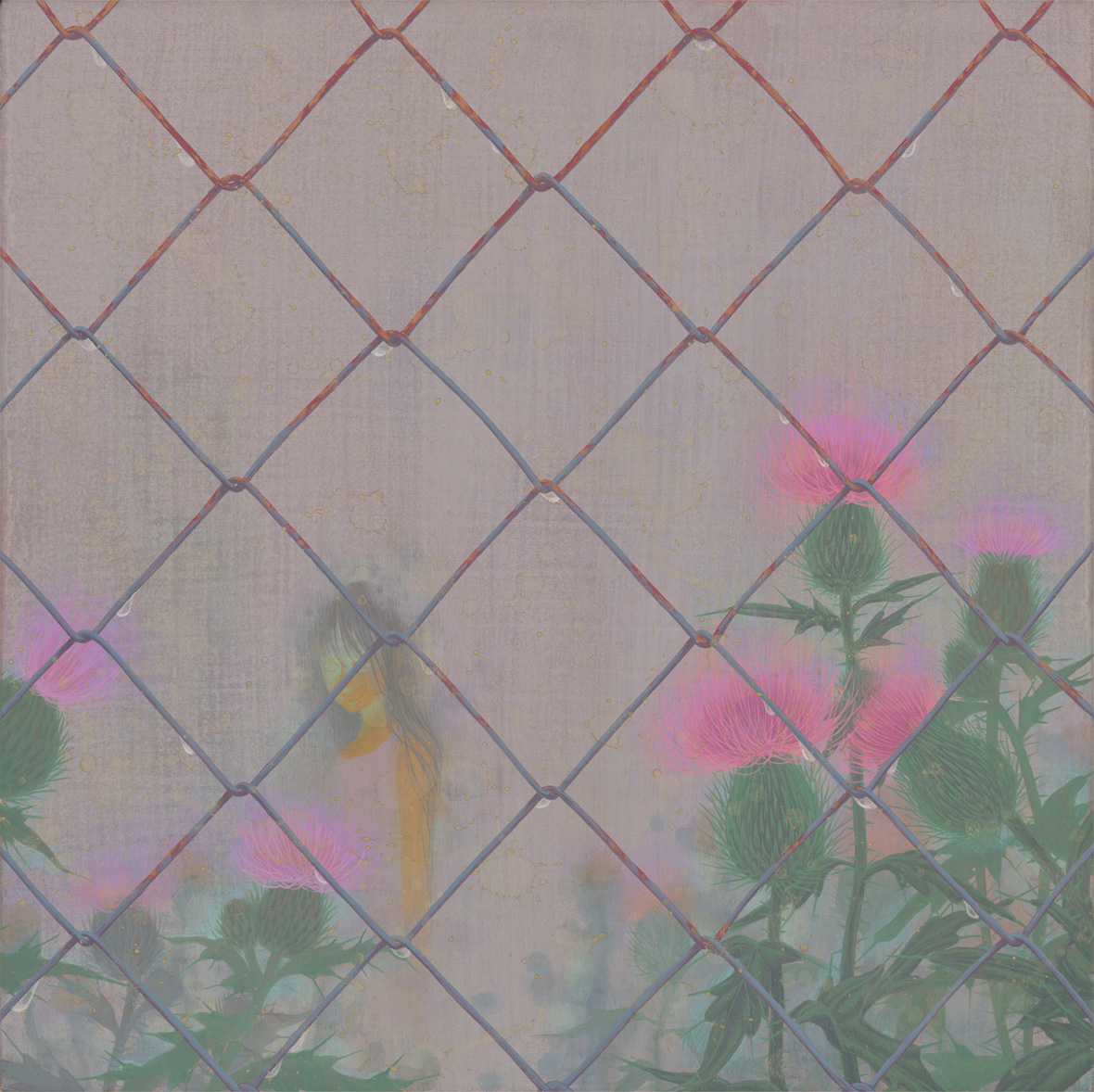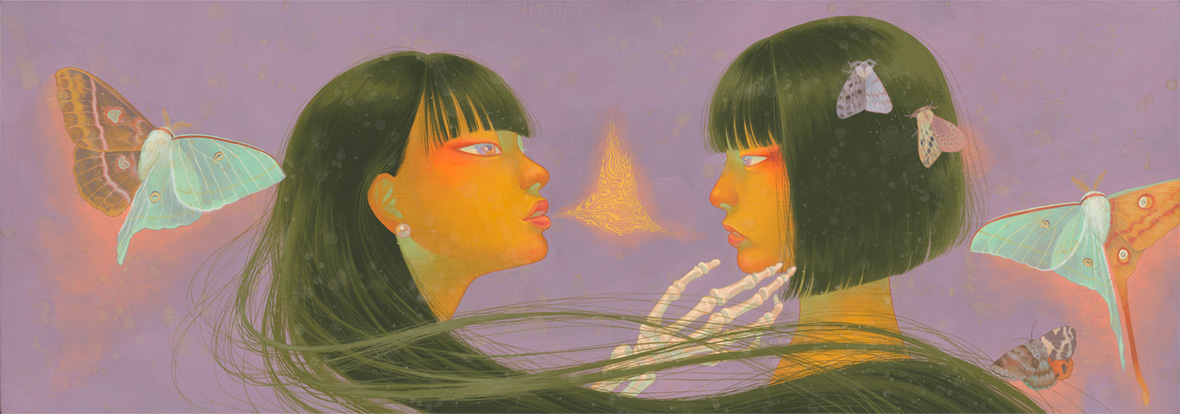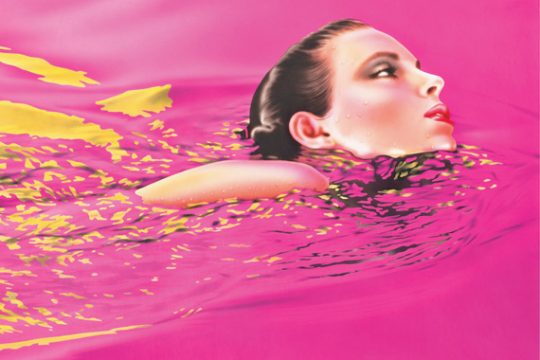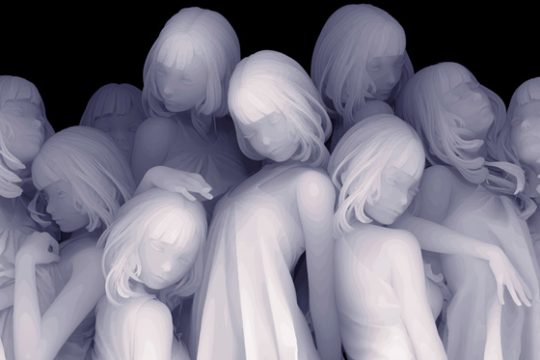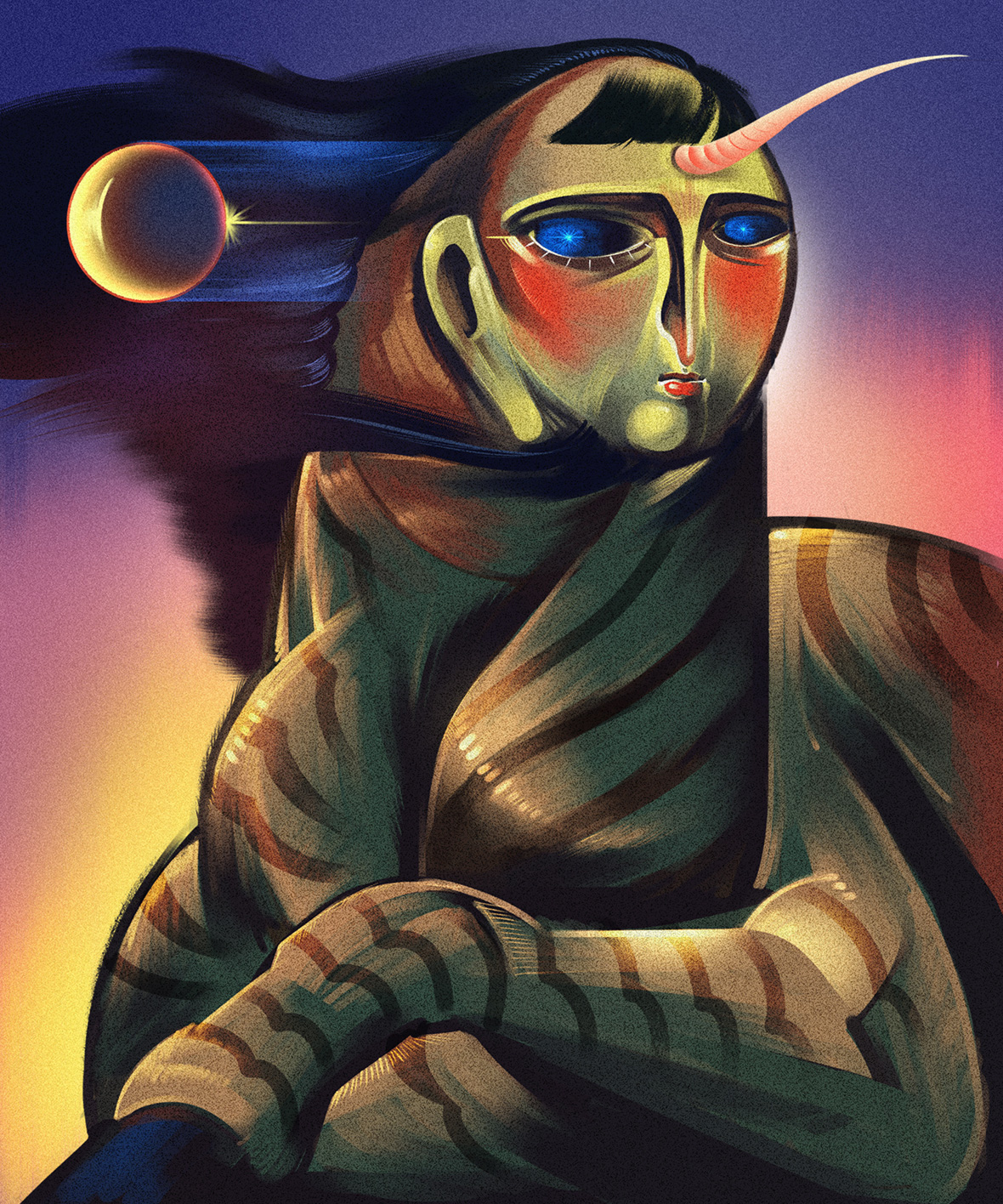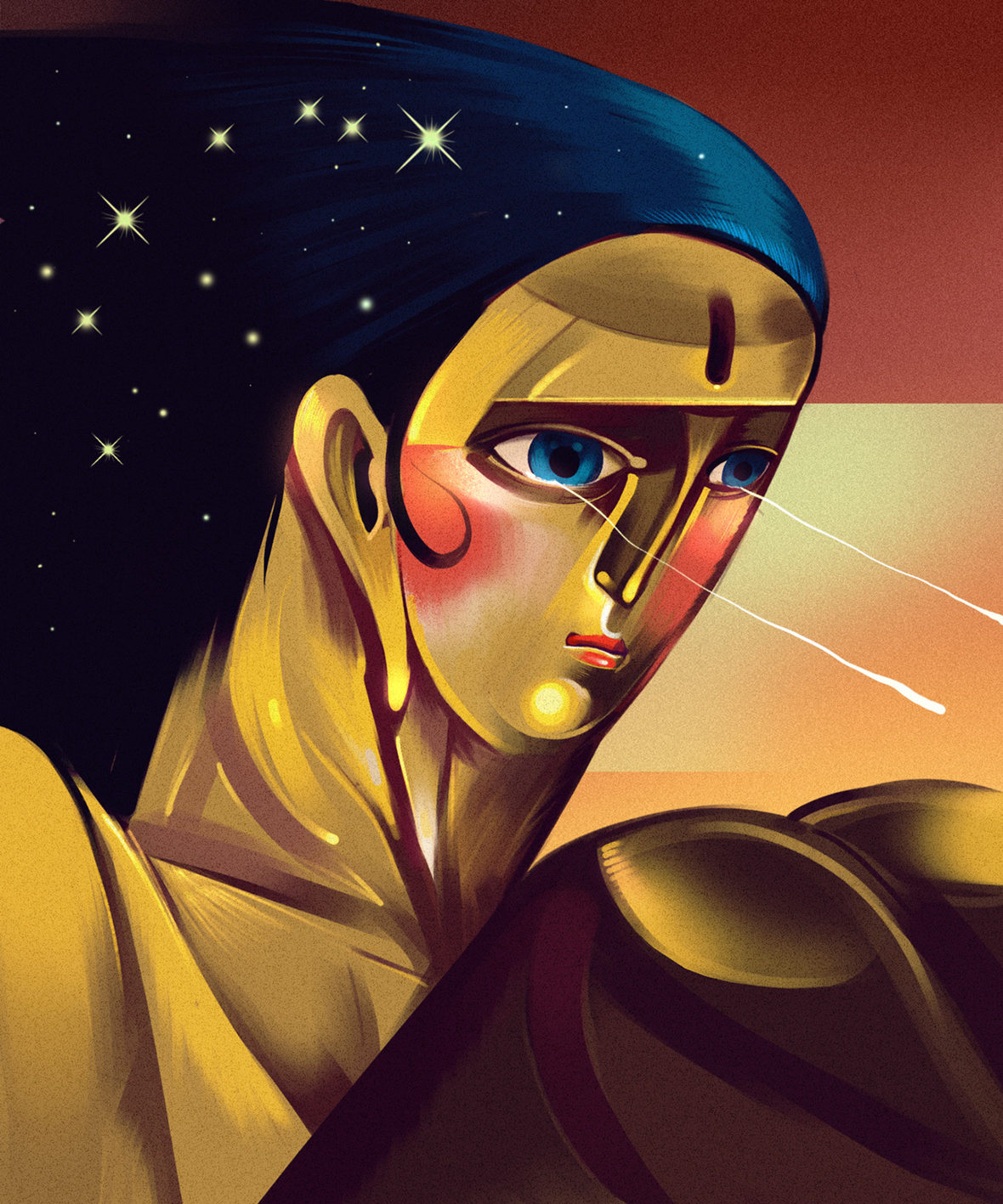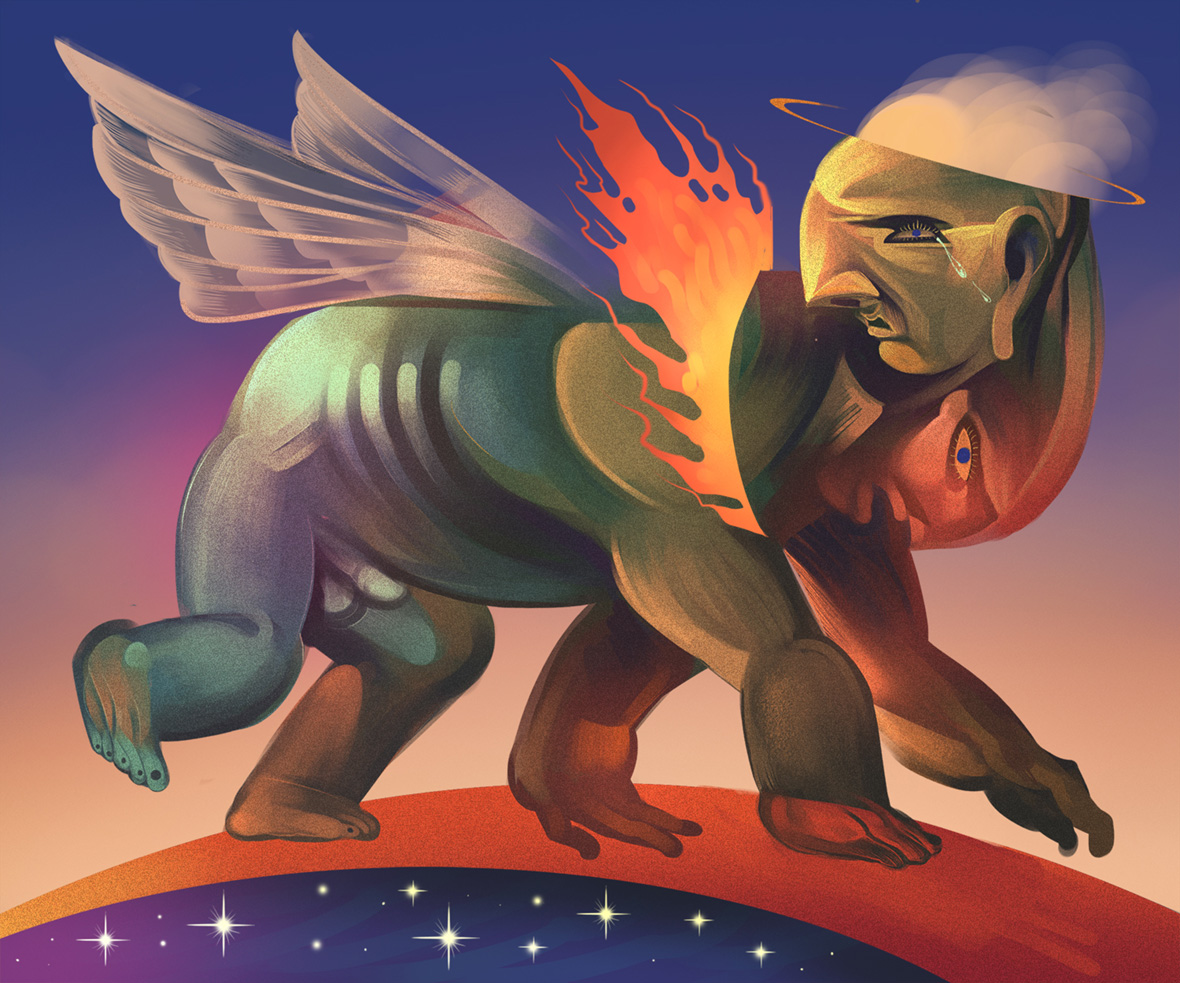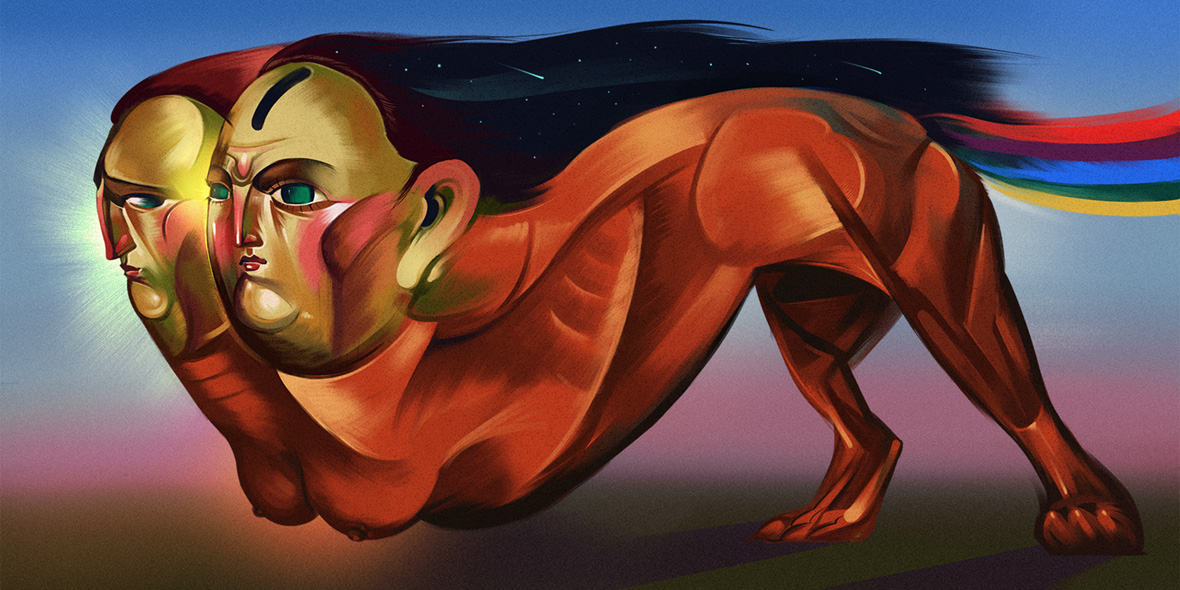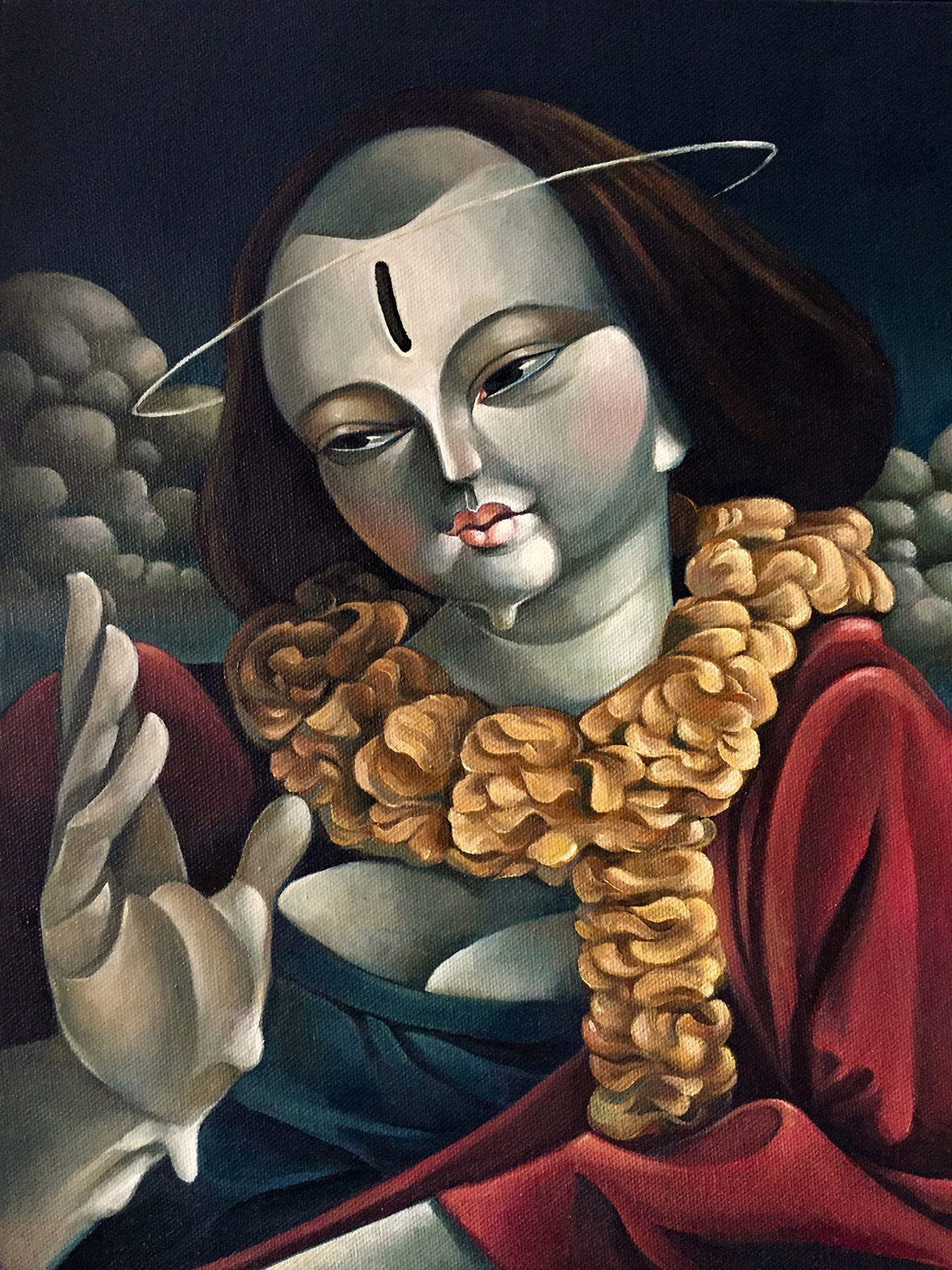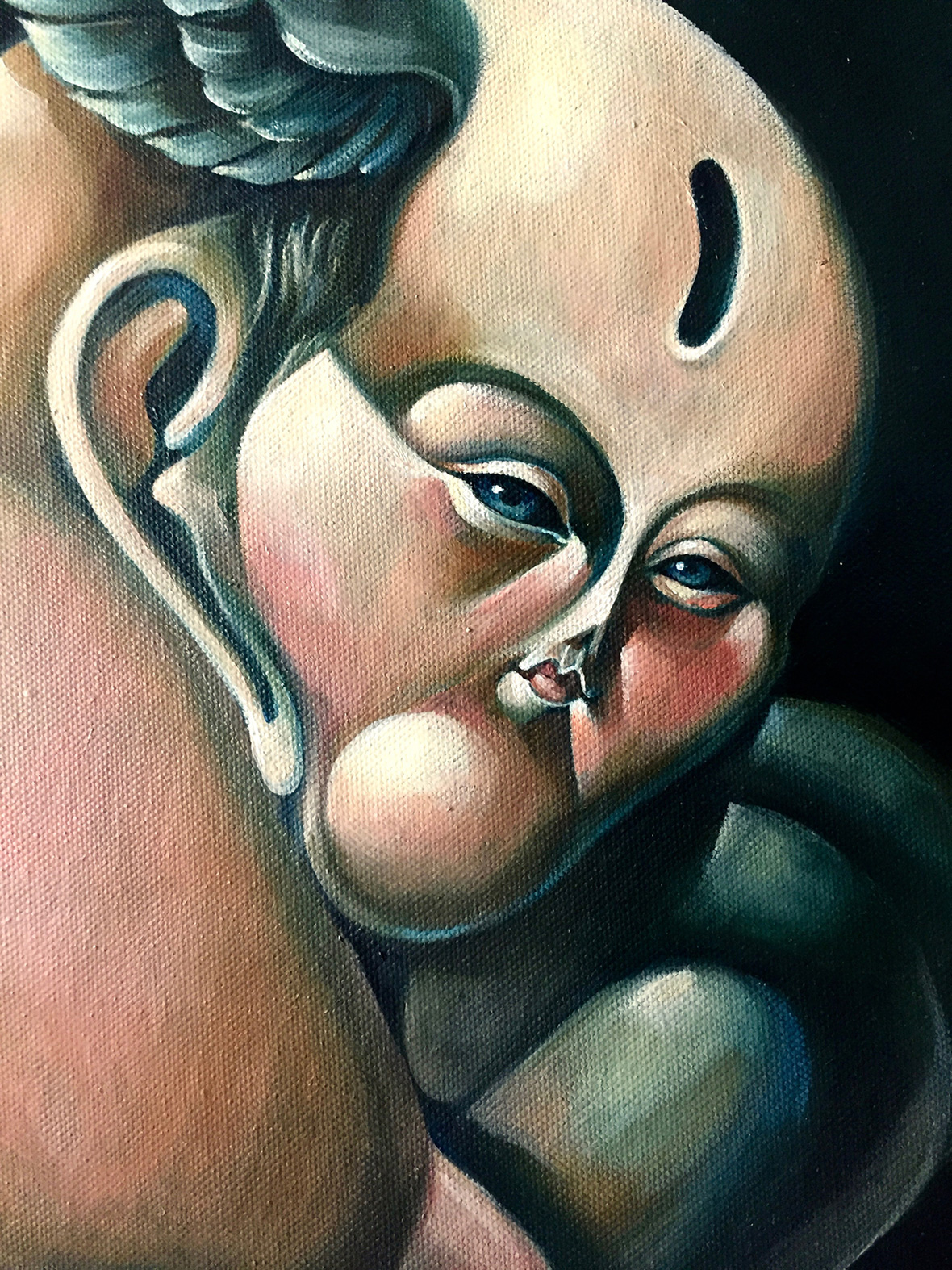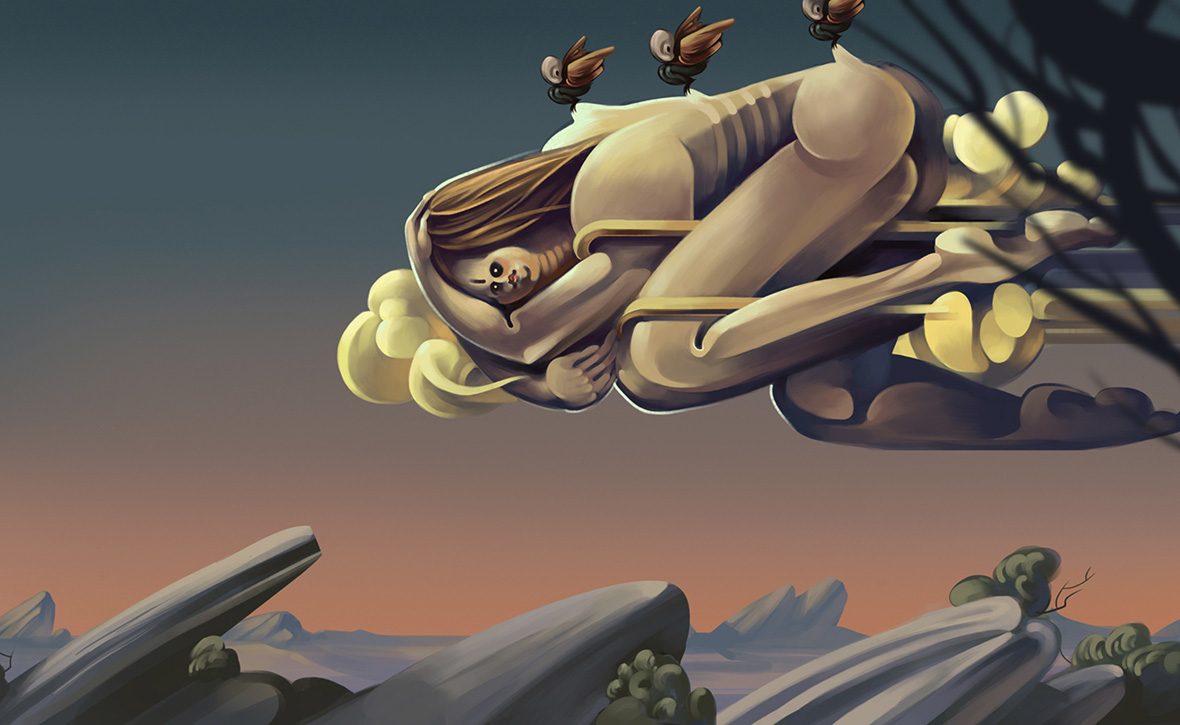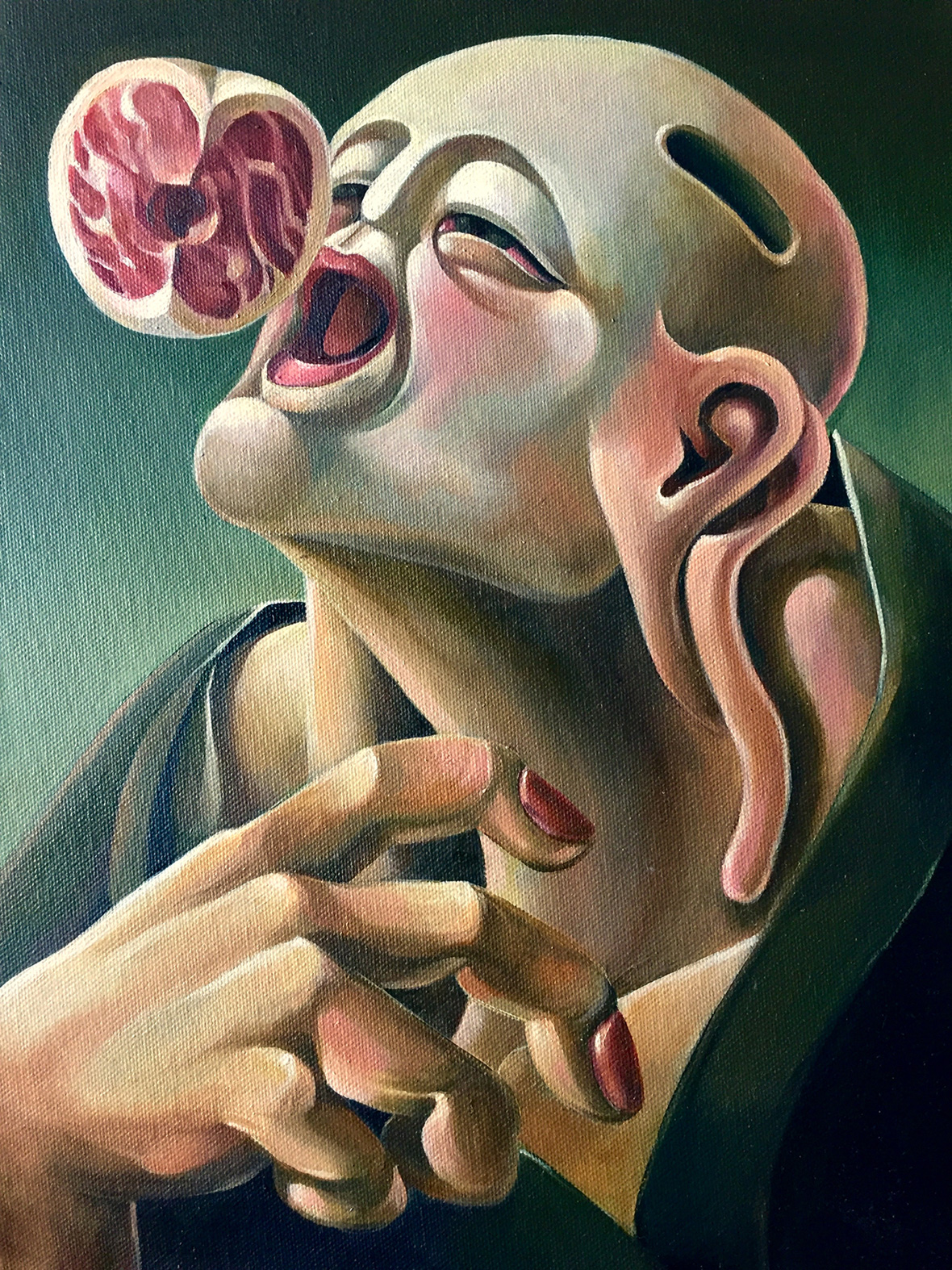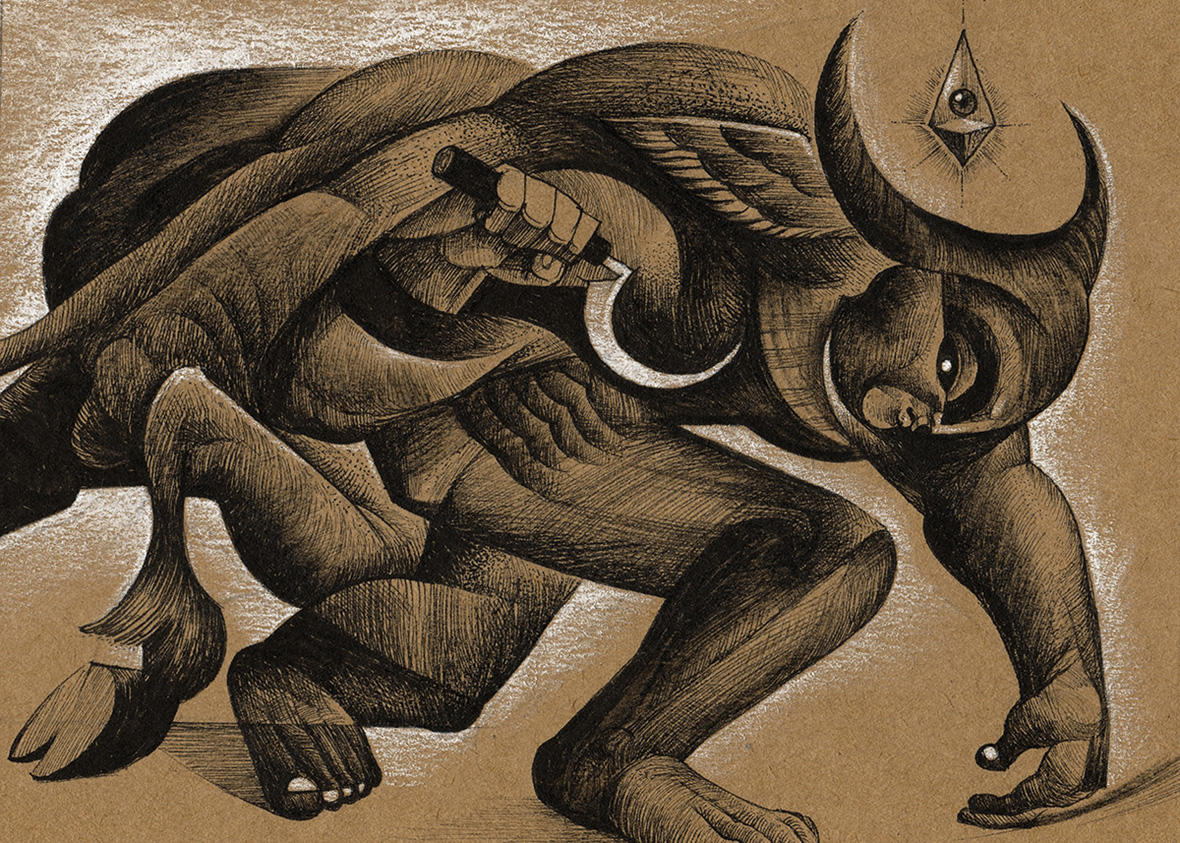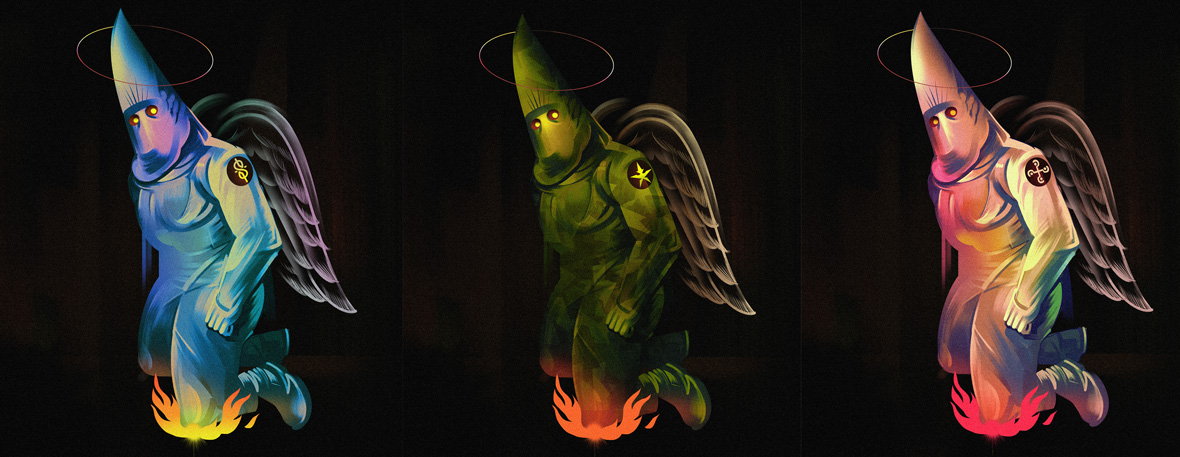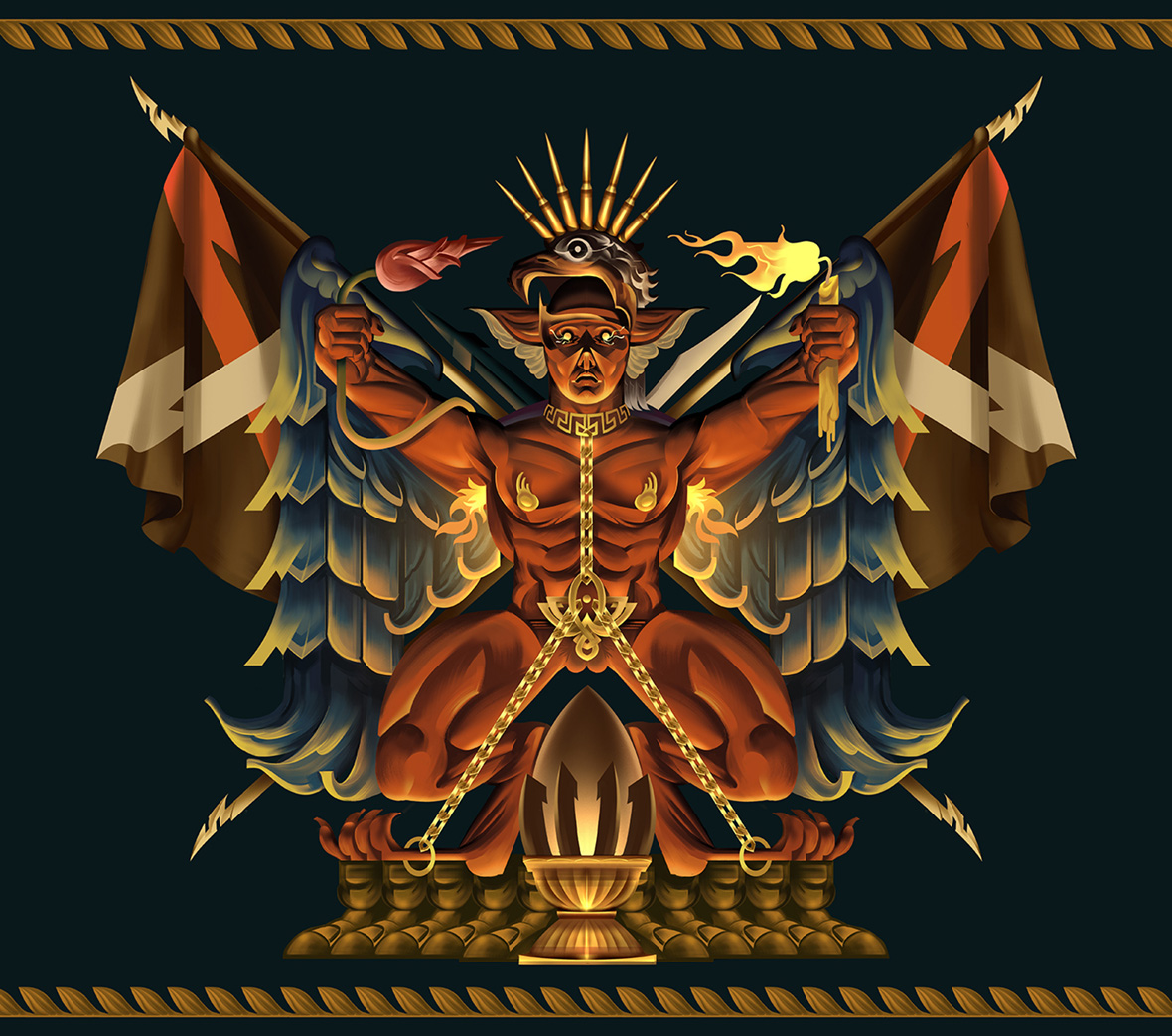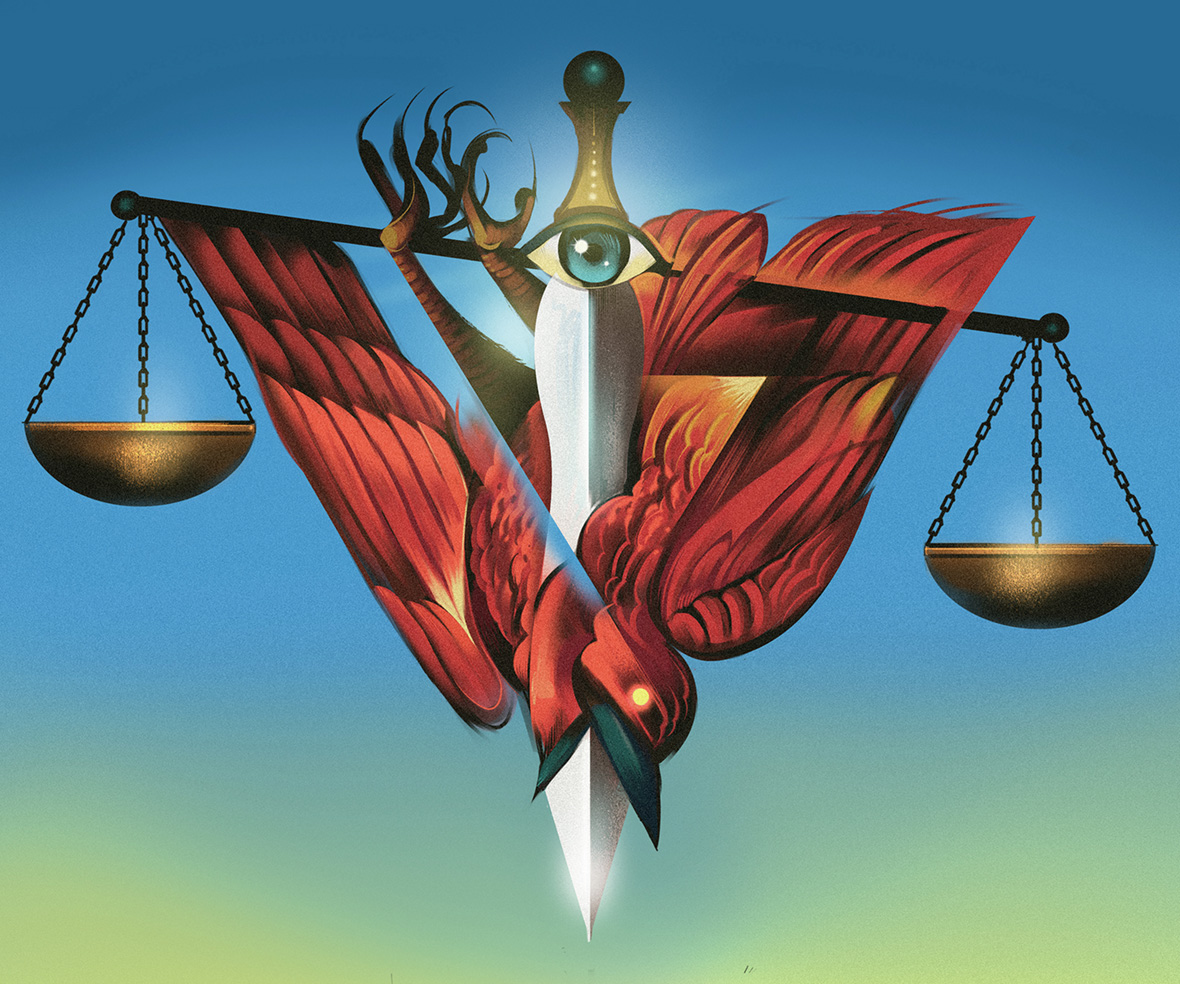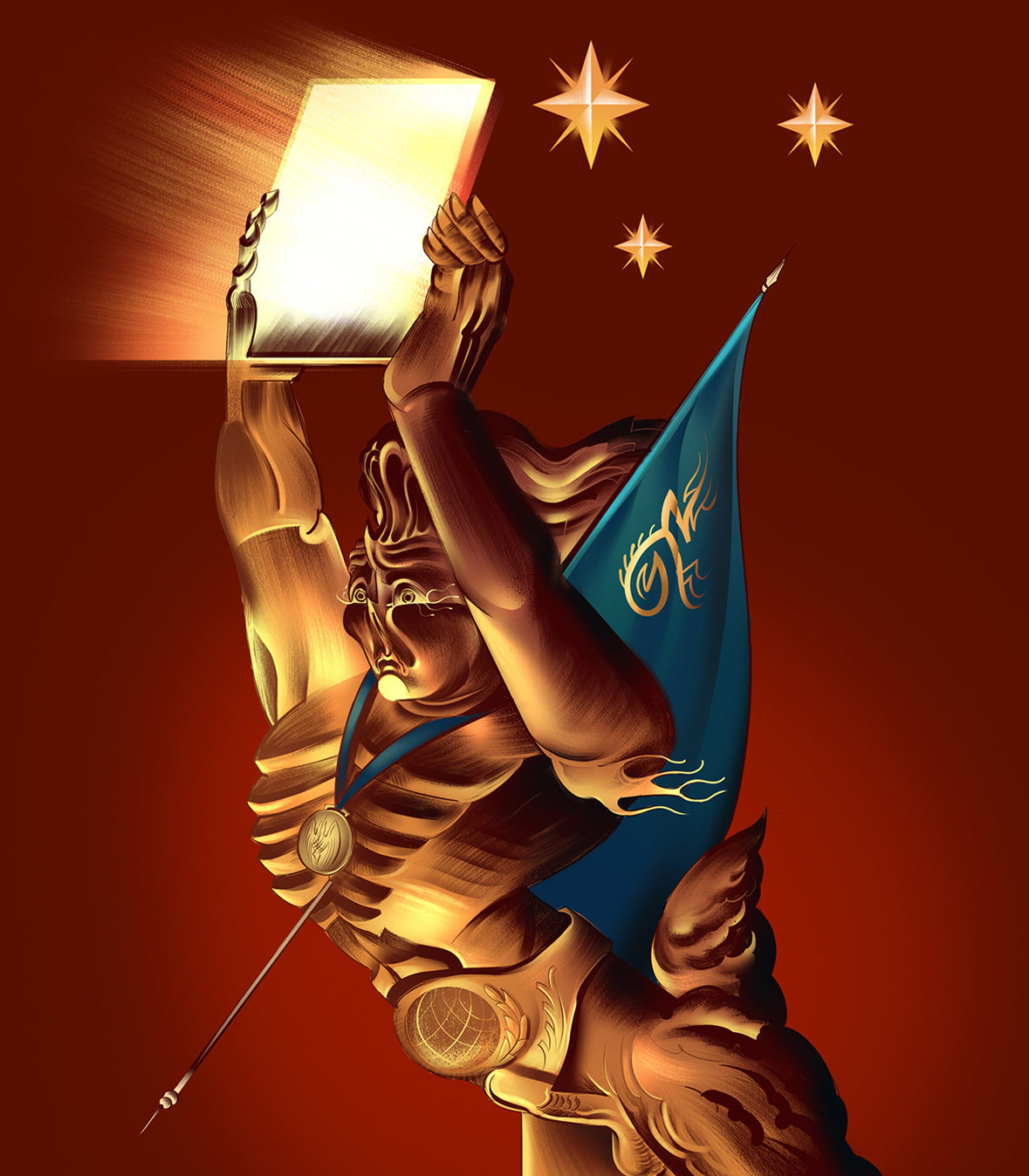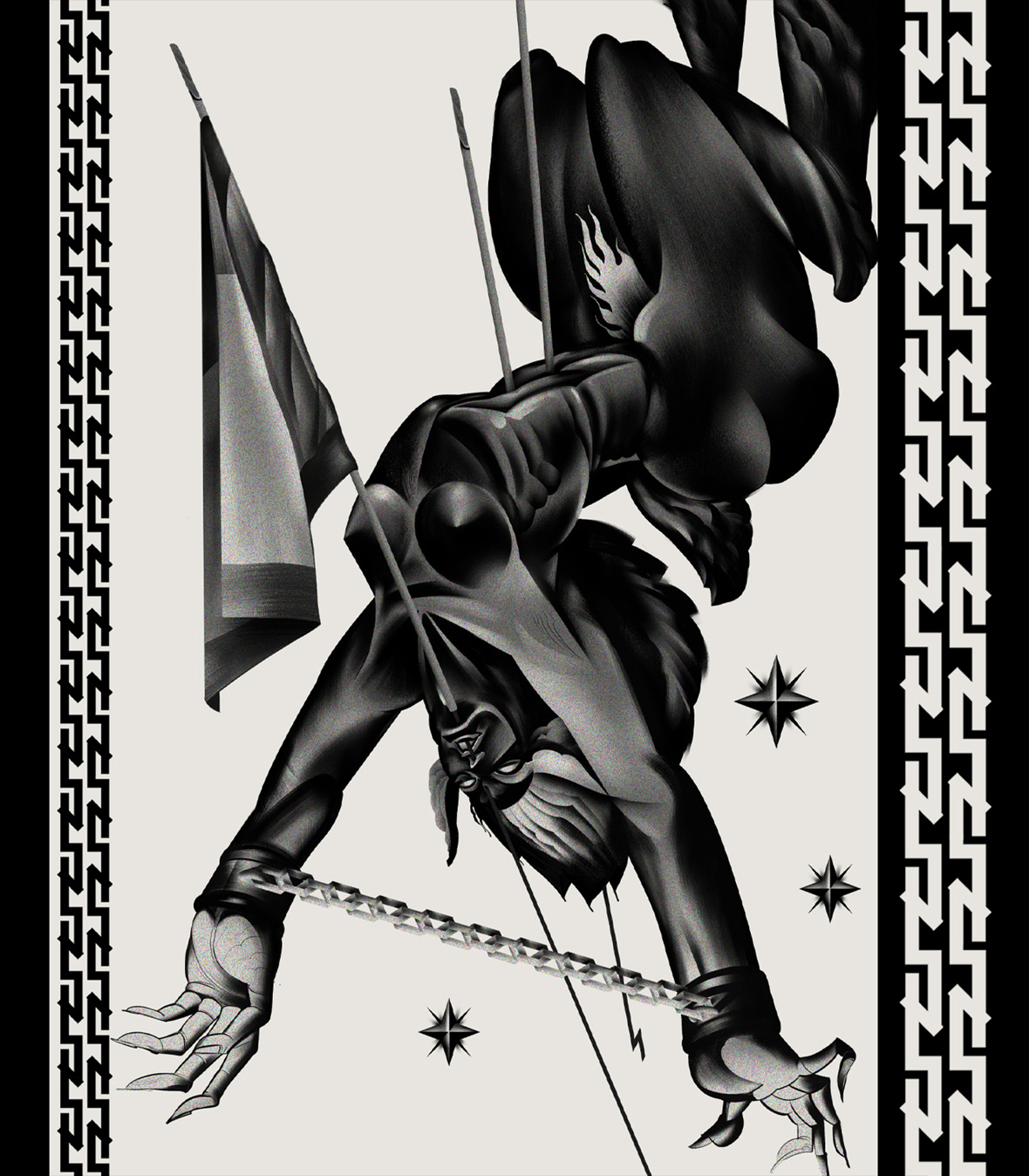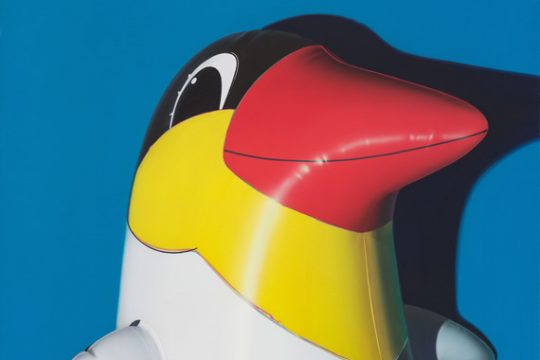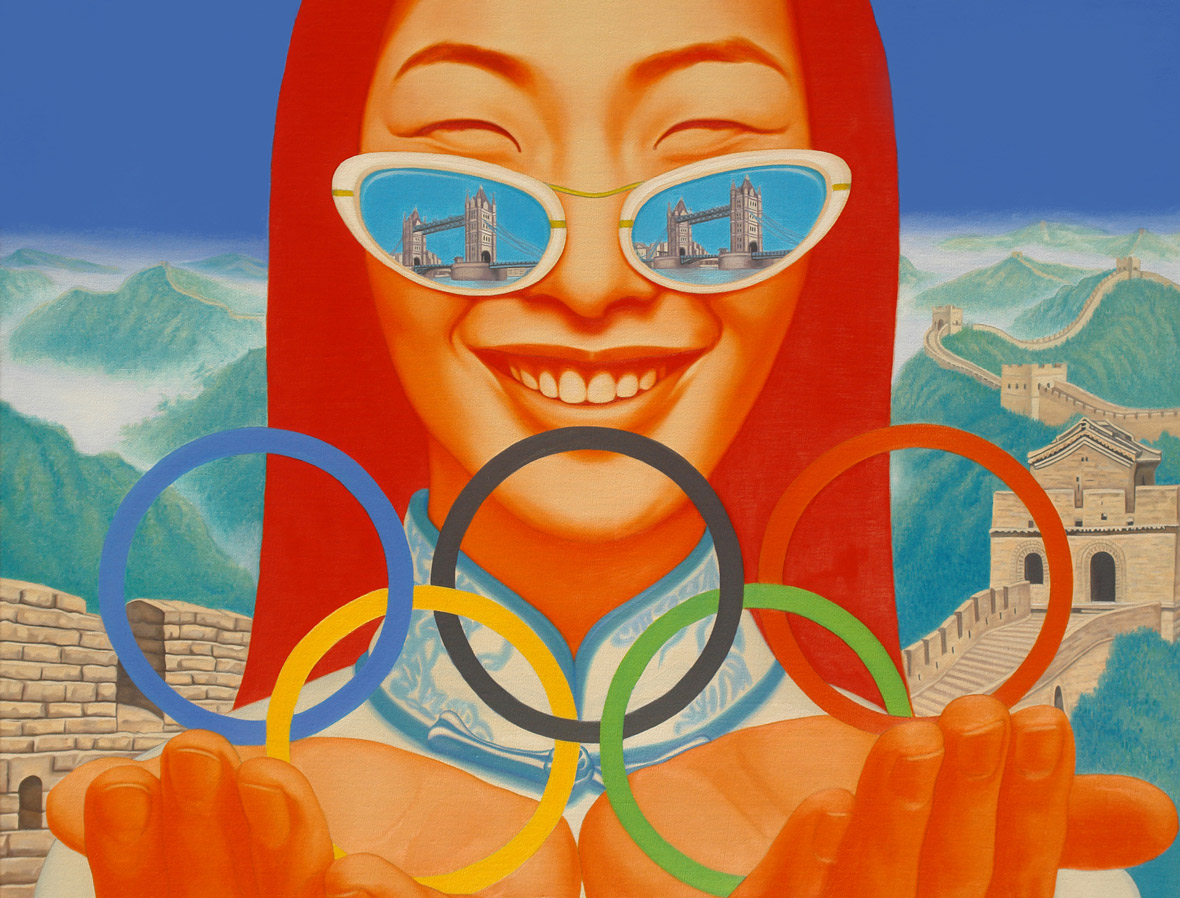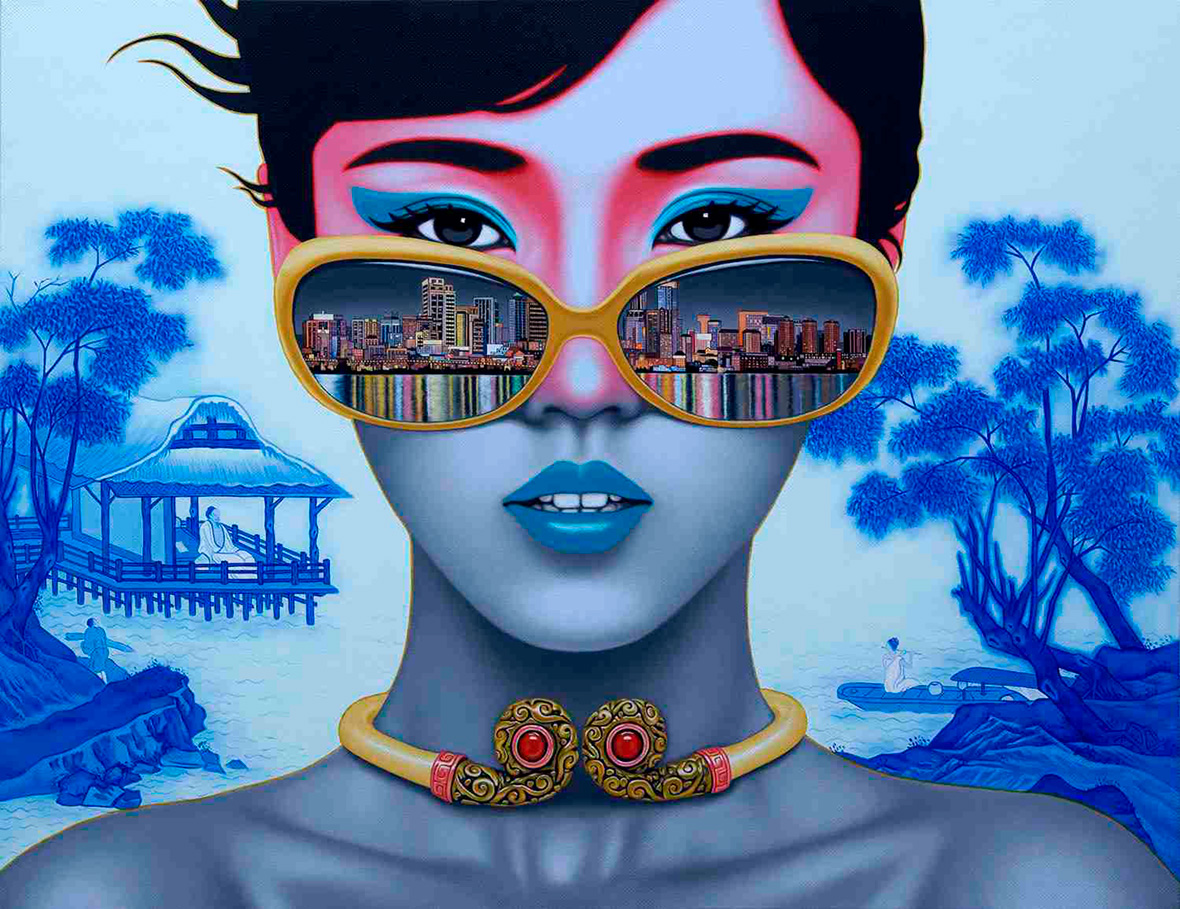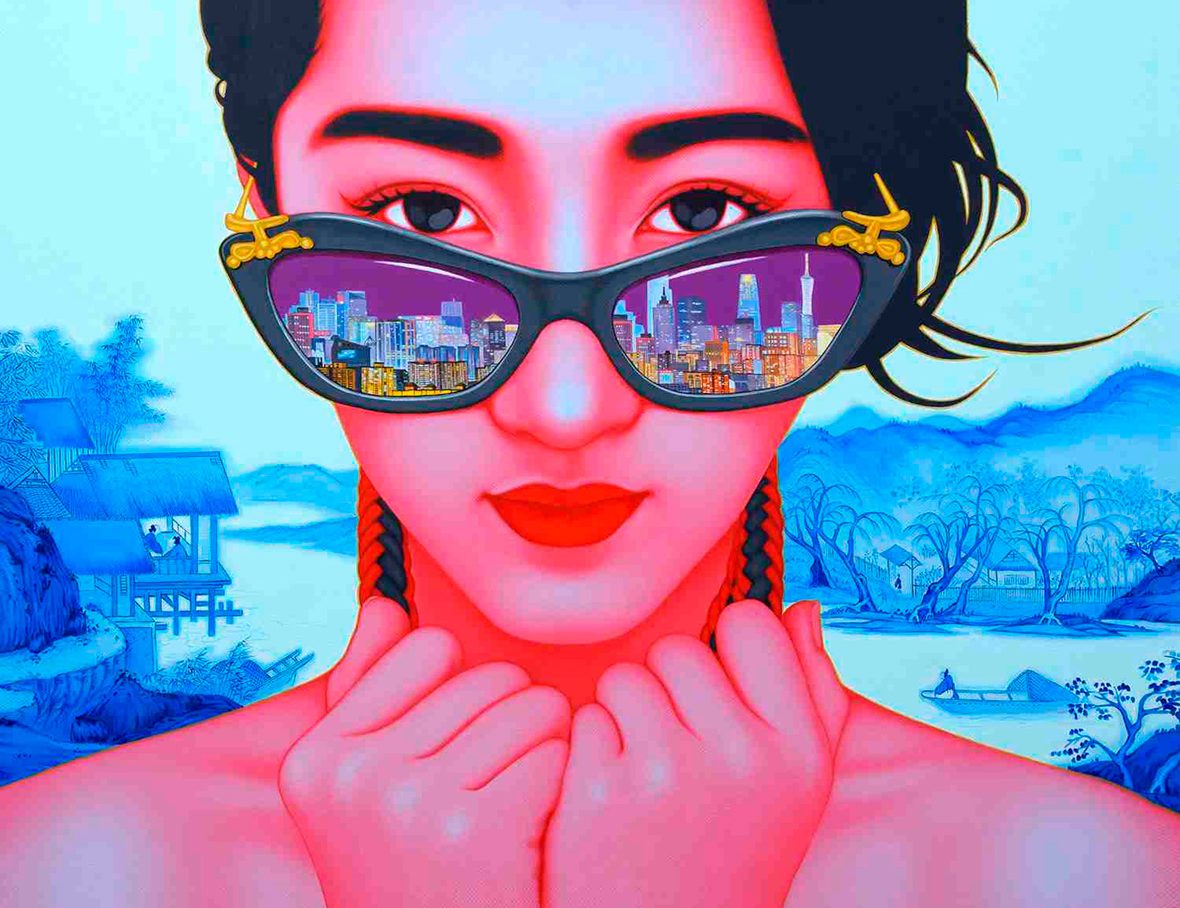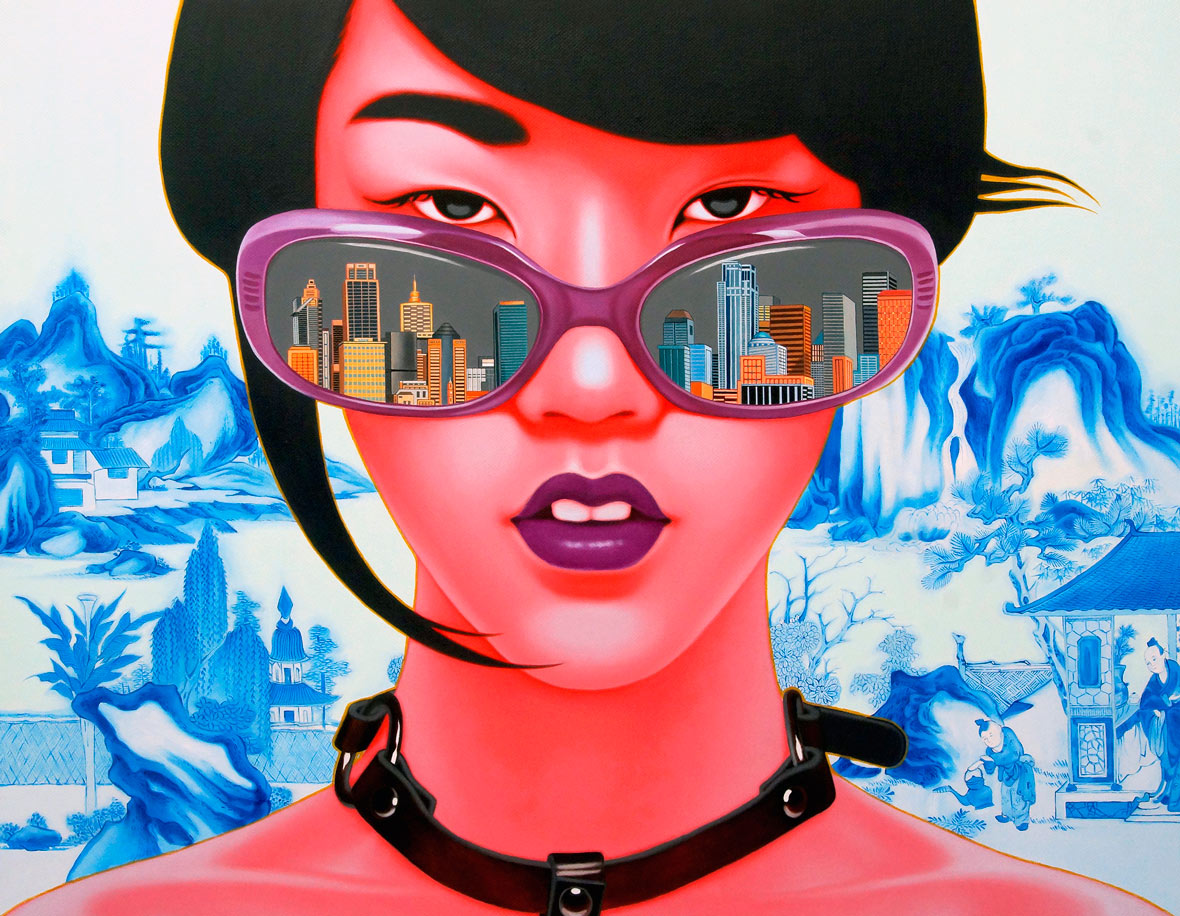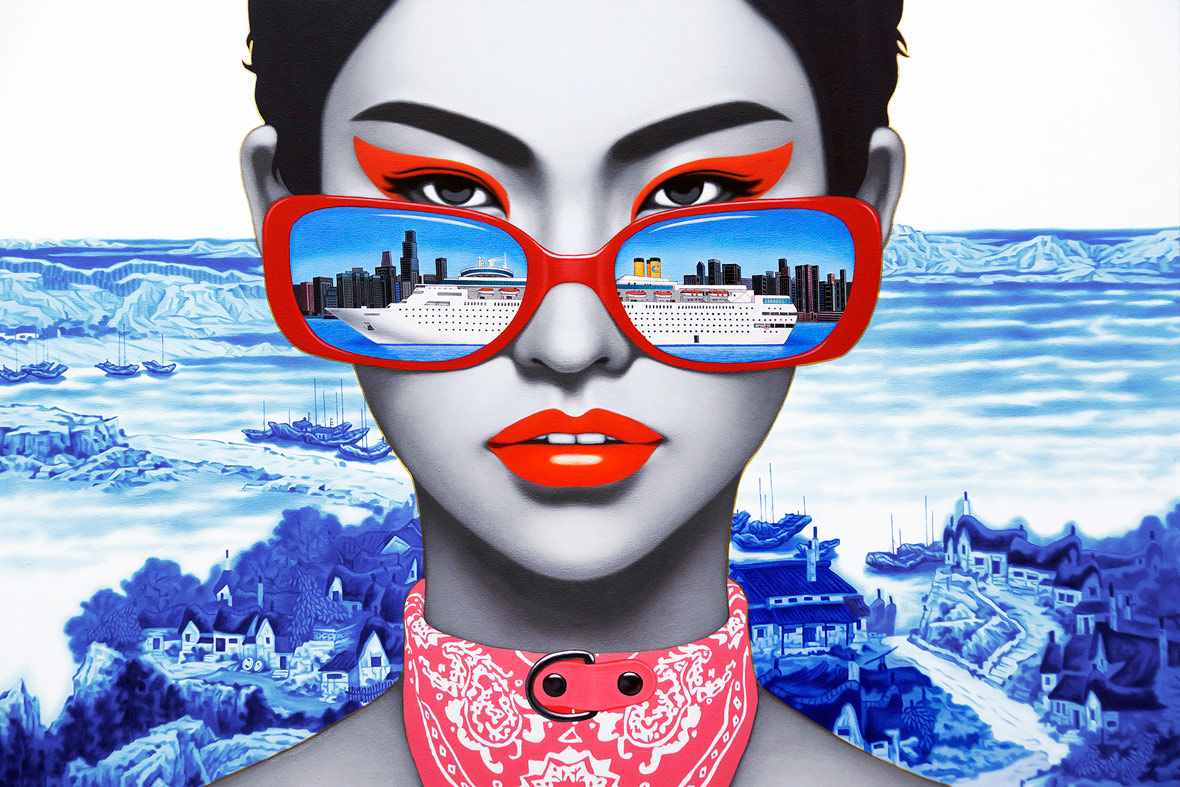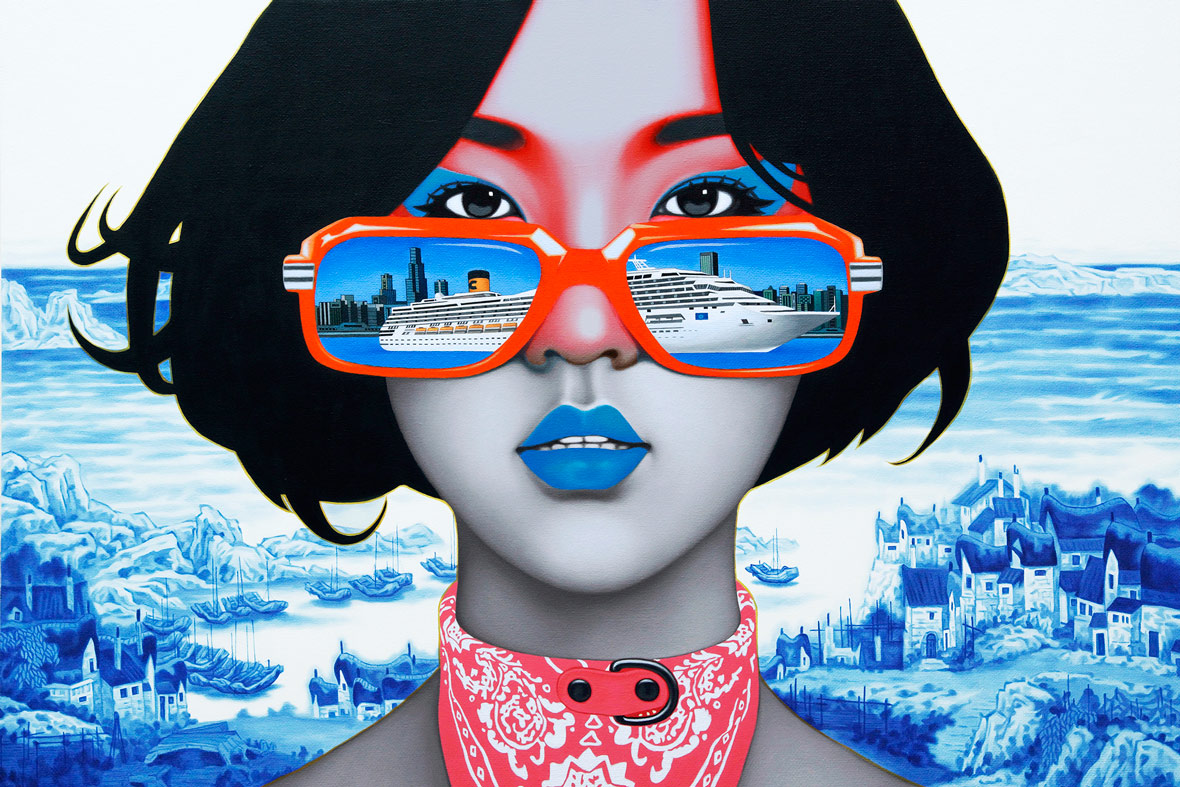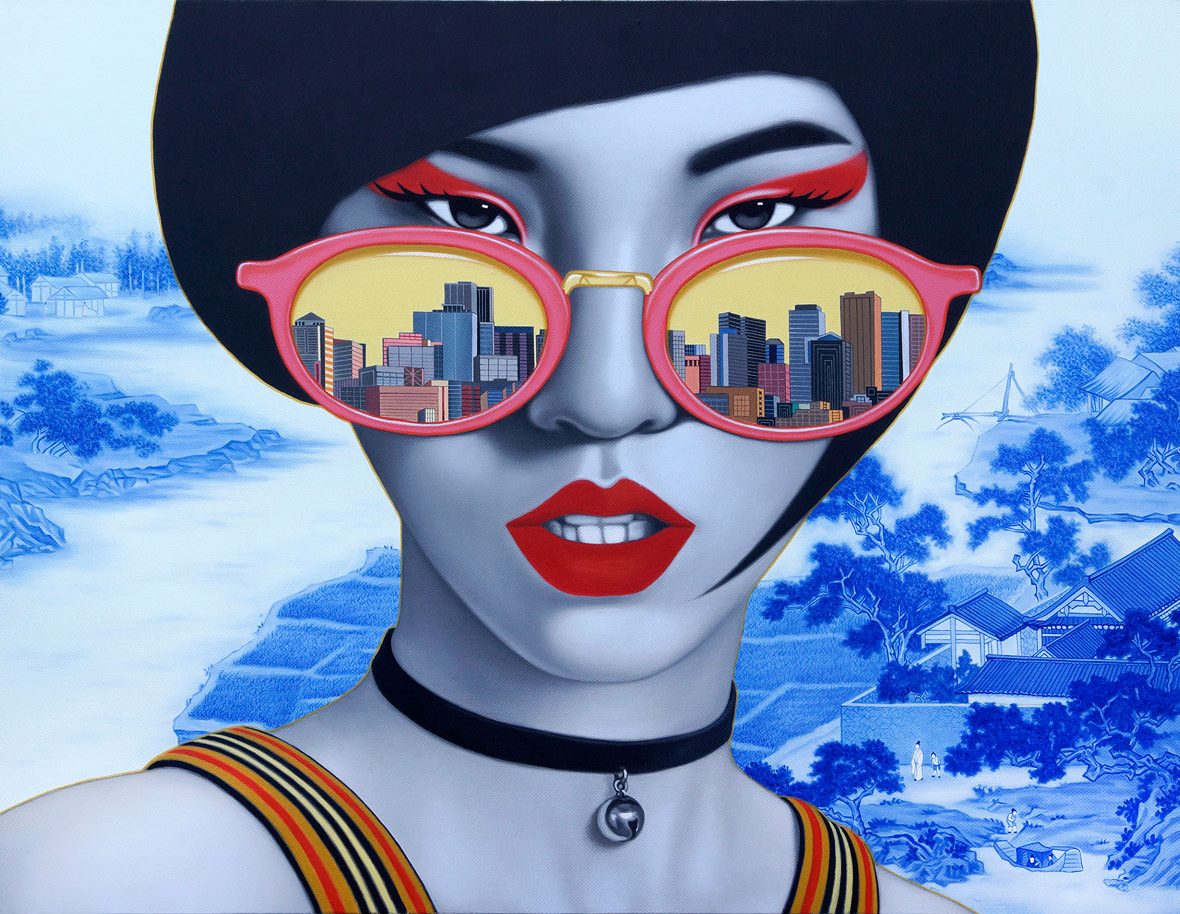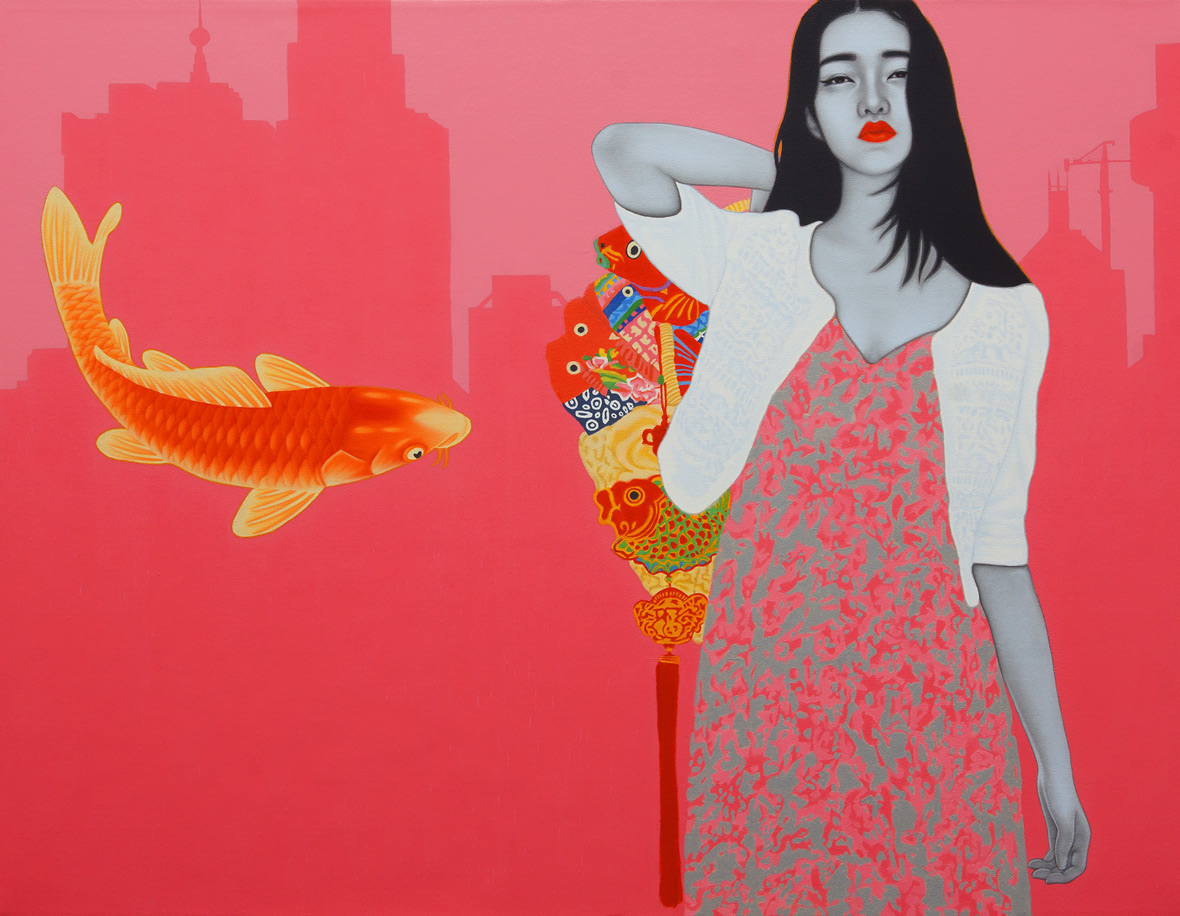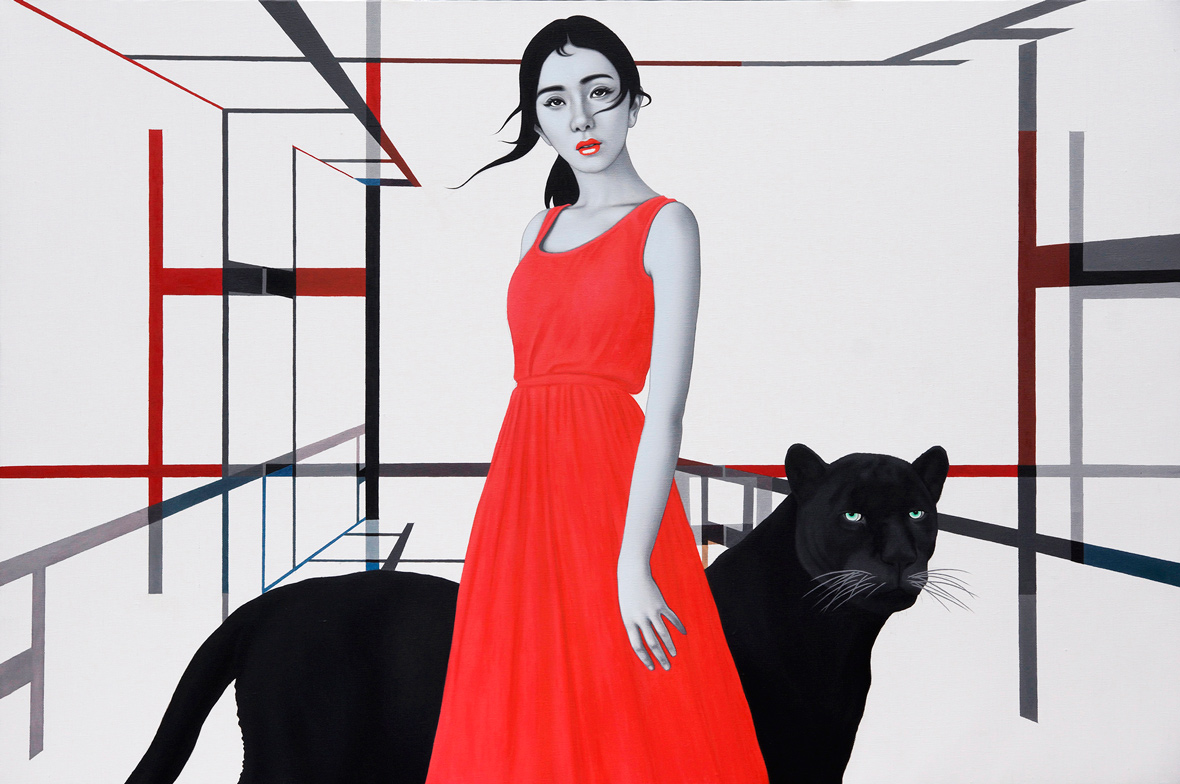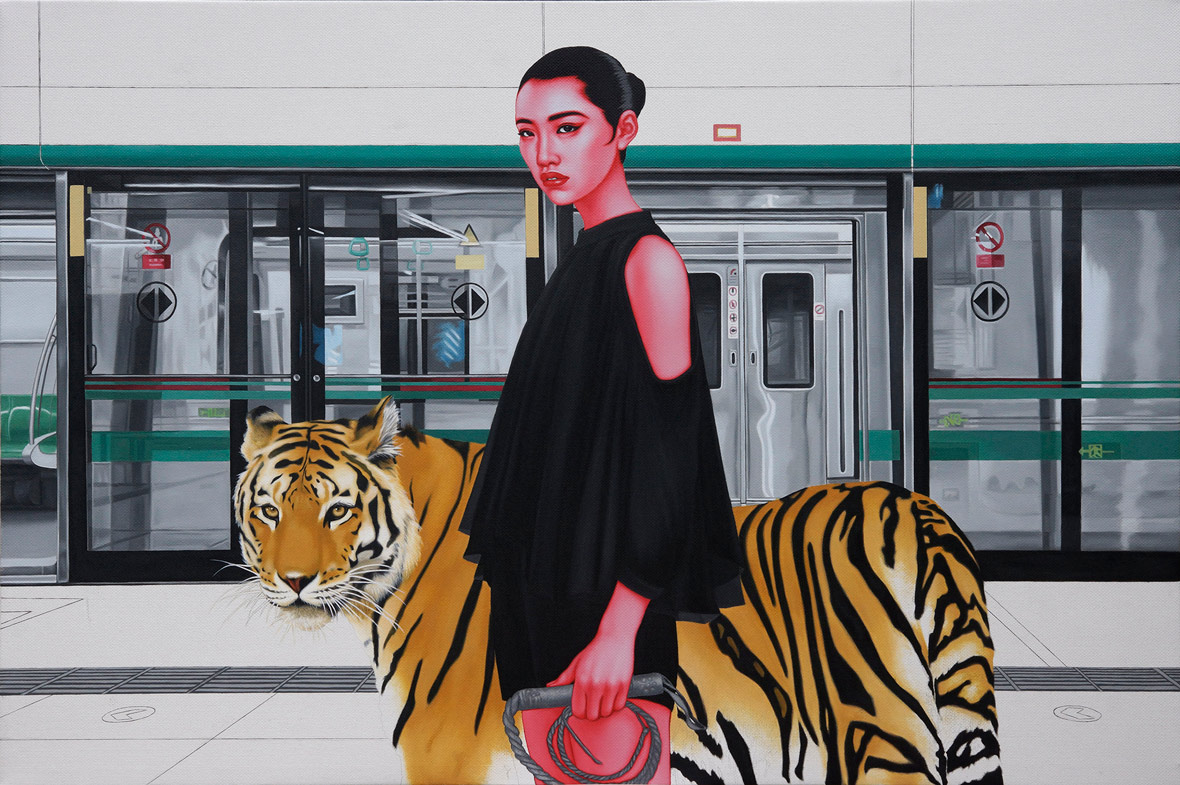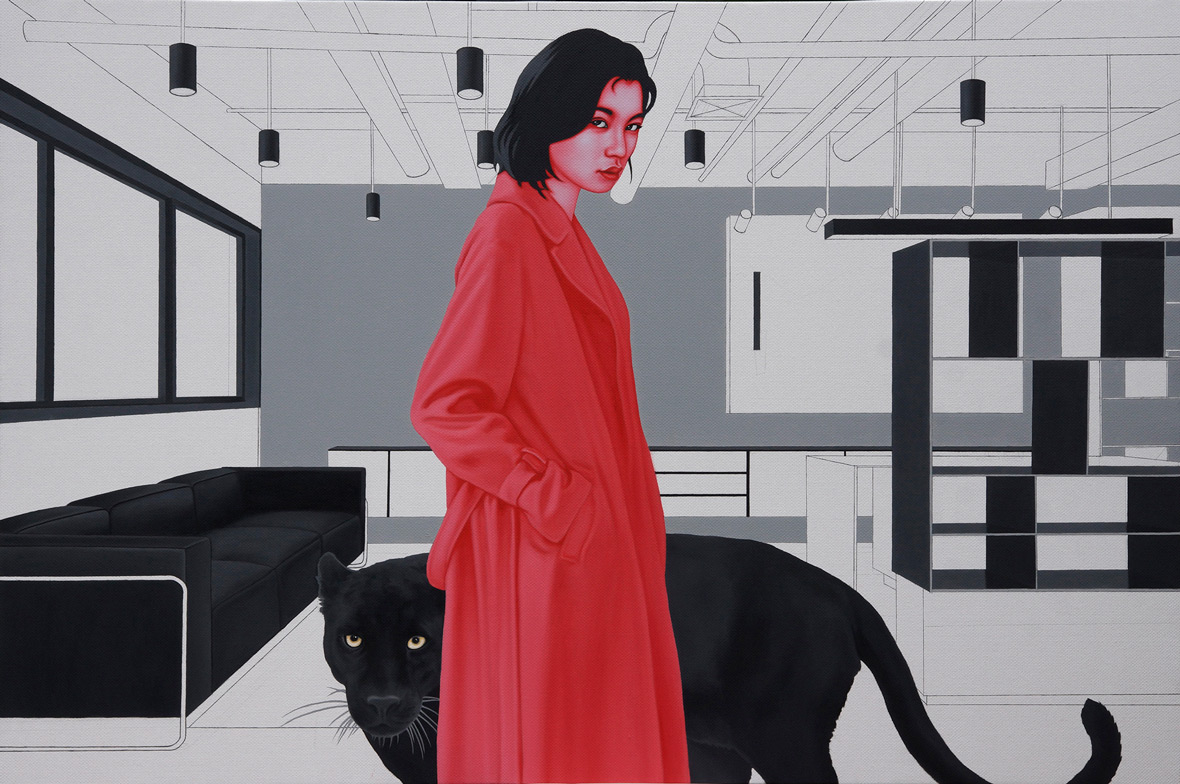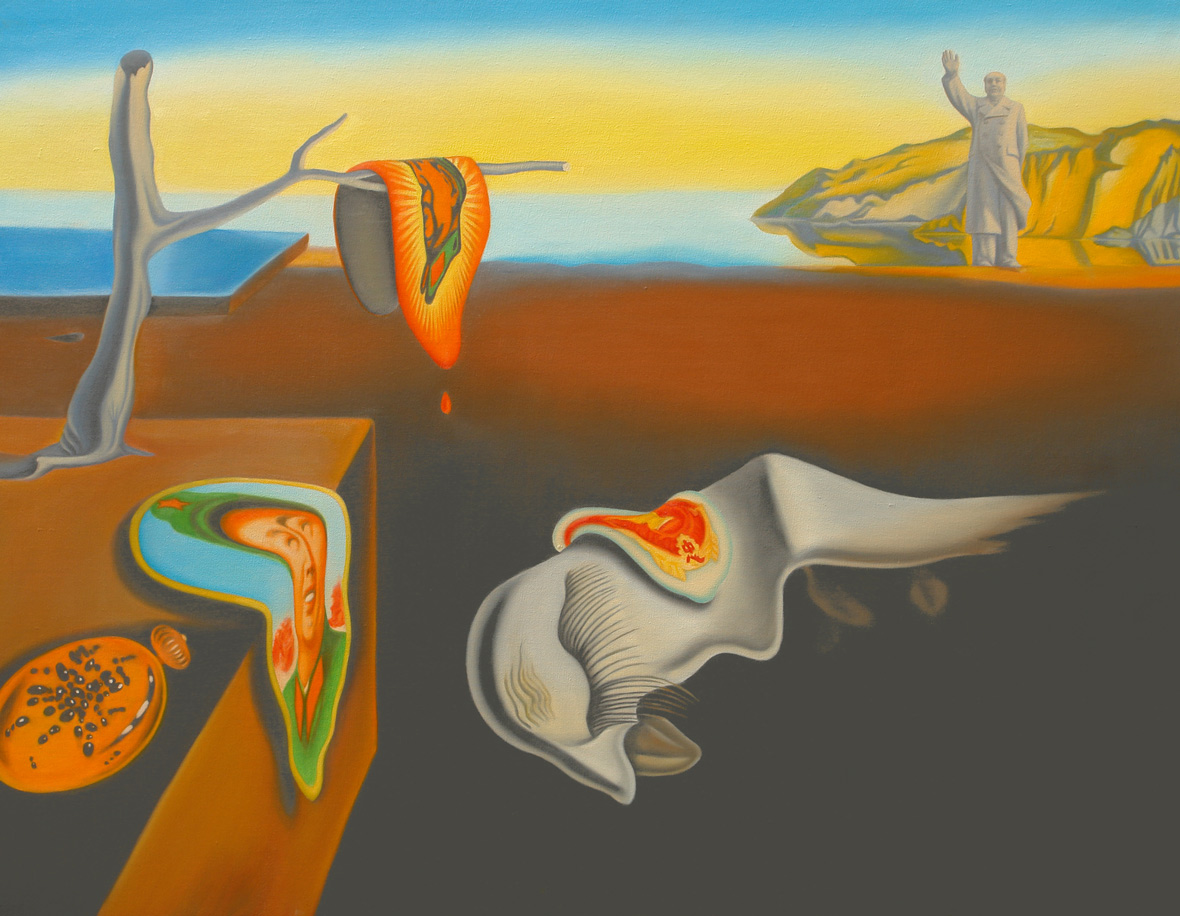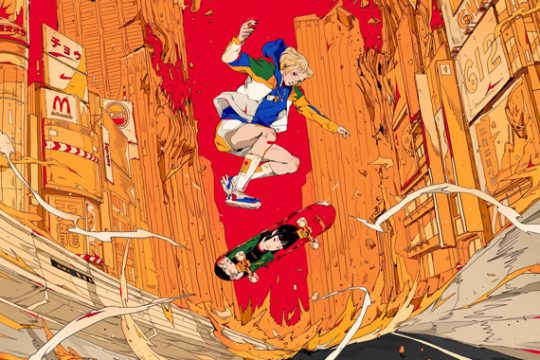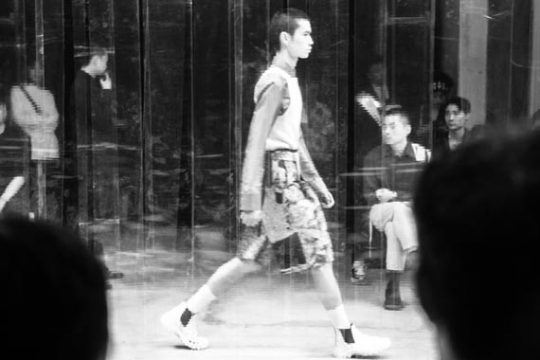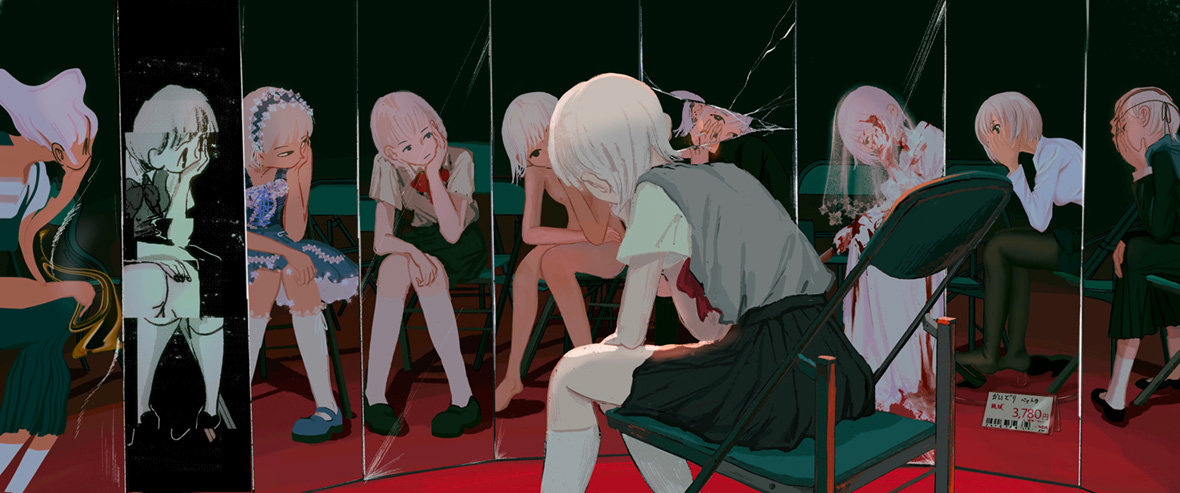
Illustrator congming has created a cinematic world of cartoonish violence through which she broaches weighty discussions of death and identity. In one piece, her soul sits in an empty theater, smiling happily as the finale of her short life plays on the silver screen. In another, she’s surrounded by funhouse mirrors depicting different versions of herself. Coffins and angels, blood and weapons, stuffed animals and school uniforms. These images all live comfortably together across her wild body of work.
congming(聪明)的插画作品拥有黑色电影的质感,以暴力和血腥的元素,探讨着死亡和身份认同的话题。在她的一幅作品中,女生将灵魂交给空荡的剧院,她盯着银幕上放映的自己短暂的一生,嘴角露出一抹不解的笑容;在另一幅作品中,数张镜子将女生团团围住,折射出她的不同人格。由 congming 打造的异想世界里,棺材与天使,血液与武器,毛绒玩具与校服都毫无遮掩地揉捏在一起。
The 24-year-old artist was first inspired to draw by anime and manga, and she honed her skills in notebooks throughout high school in Hunan. But it wasn’t until she started university in Hangzhou and got her first tablet when her blend of comedy and horror began to take shape in her work.
The outlandish brutality of Japanese animation, Hollywood crime films, and rap videos was key in molding her signature style, which can be best described as a blend of despair and kawaii. “Bad guys cradling kittens are much more attractive than outright villains,” she laughs.
这位 24 岁的艺术家最初因为喜欢动漫而开始画画。早在湖南上高中期间,她常常在笔记本上磨练自己的绘画技巧。直到她到杭州上大学,买了自己的第一台平板电脑后,她才逐渐形成这种恐怖喜剧的荒诞风格。
日本动画、好莱坞犯罪电影和说唱 MV里的野蛮残酷,是塑造她标志性绘画风格的关键,让她的创作能将暗黑与“卡哇伊”可爱风融合地恰到好处。她笑着说:“一个照顾小猫咪的坏蛋总比彻头彻尾的恶棍更吸引人。”
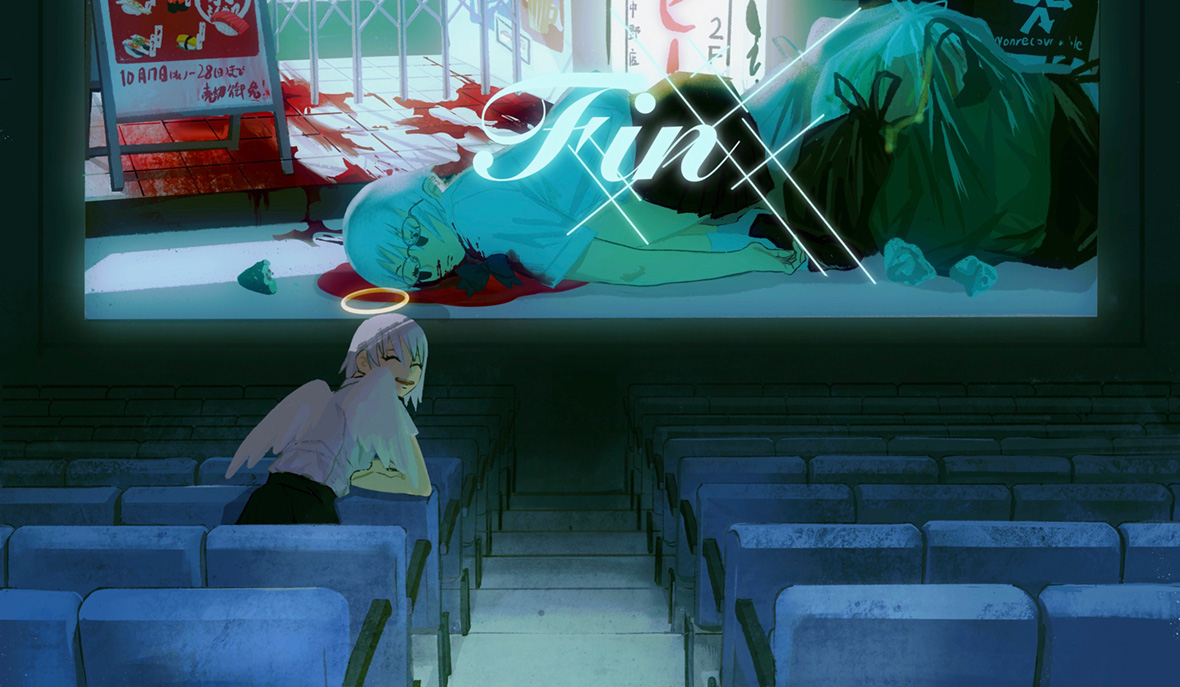
Death as a theme is a near-constant, with angels rising from corpses and wandering the land of the living. Although she’s not Christian, she finds the imagery useful for depicting the idea of the soul and afterlife. “Every day we see death on the news and on social media or in our lives,” she says. “All things are equal in death. Everyone will die.” She hopes her work will help people face the idea of passing with more serenity, including herself.
Whether it’s a view from inside a coffin being buried or a body decaying through multiple stages before floating off as a formless soul, congming wants to invite more balanced discussion around the too-often taboo subject. “People’s fear of death is nothing more than a fear of the unknown,” she says.
死亡,似乎是她作品中的永恒主题:死者化作天使,在凡间徘徊游荡;亡灵与世人一同祷告……她并不是基督徒,但她觉得这些元素很适合用来描绘灵魂和来世的主题。她说:“我们每天都会在新闻、社交媒体或生活中看到死亡。在死亡面前,万物皆平等,这是生命必经的一部分。”她希望自己的作品能帮助人们(包括她自己)更平静地面对死亡。埋葬、棺材、灵魂、祷告,congming 从这些角度着手创作,希望能围绕这些禁忌话题展开更为冷静的讨论。她说:“人们对死亡的恐惧无非是对未知的恐惧。”
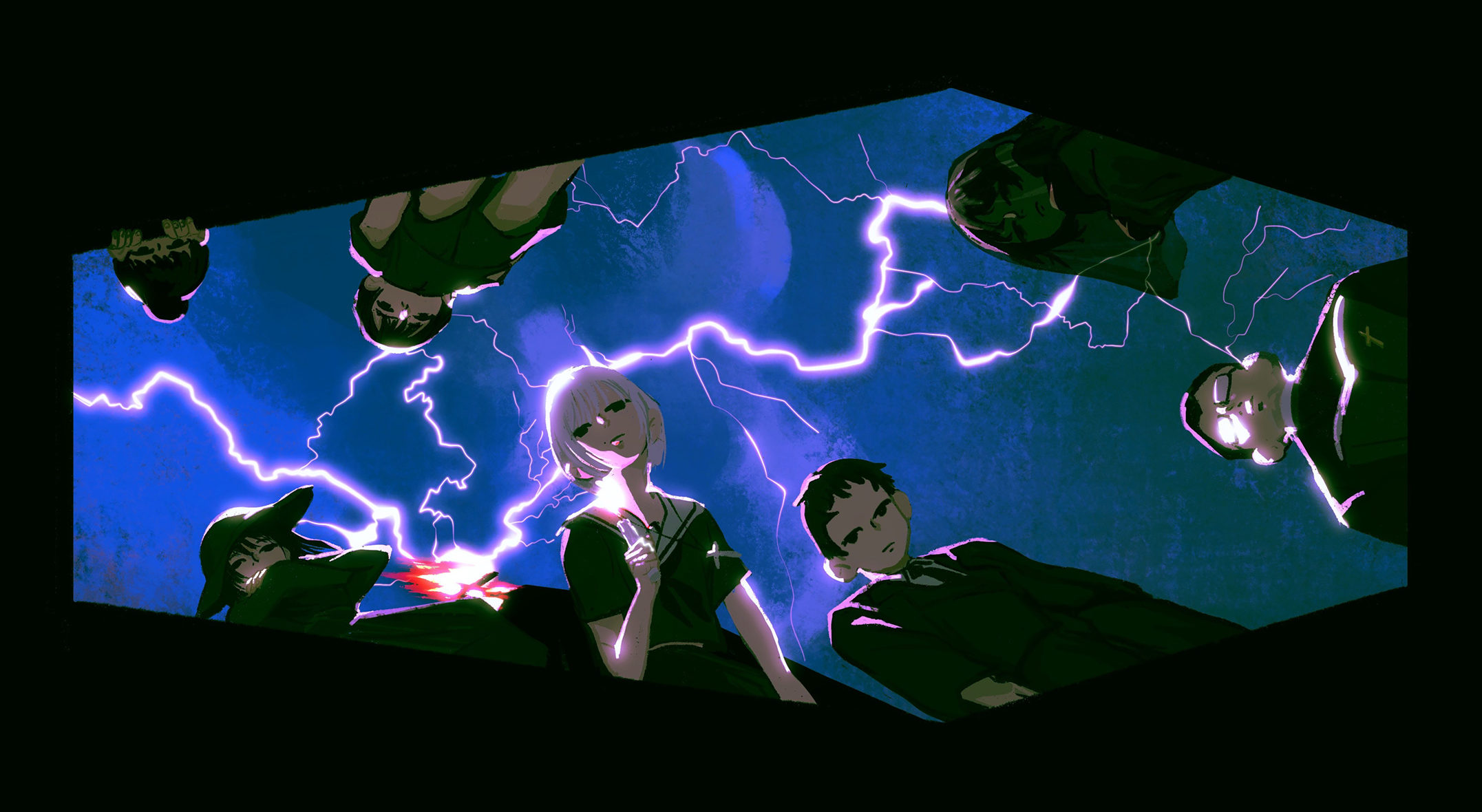
One form of death that’s frequent in congming’s work is suicide. In one series, a character rushes into an empty hospital hallway, crashing into a mirror and stabbing her reflection until it breaks, leaving her slumped and lifeless on the floor. “The suicide rate among Chinese teenagers is increasing and I have a lot of friends who suffer from depression. They are oppressed by society while suppressing their emotions.” To counter those trappings, she lets herself express herself freely and sees no weakness in embracing her own problems.
congming 的作品里,很常见的一种死亡形式是自杀。在一个系列作品中,女生在空无一人的医院走廊上奔跑,她撞上镜子,用尖刀不断插向自己的映像,直到映像变得四分五裂,她才疲惫不堪地瘫在地板上。“中国青少年的自杀率在上升,我身边有很多患抑郁症的朋友。他们压抑自己的情绪,同时还要遭受来自社会的压力。”为了避免陷入这些情绪陷阱,她选择自由表达想法,坦然接受自己所面对的问题。
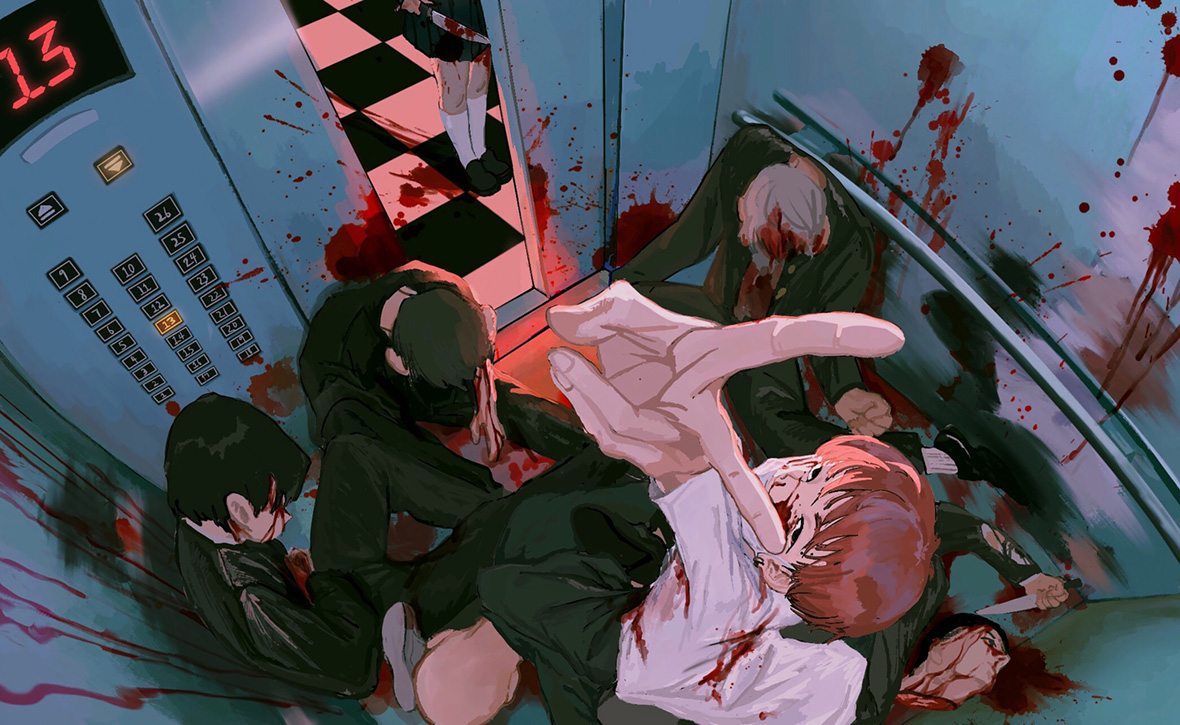
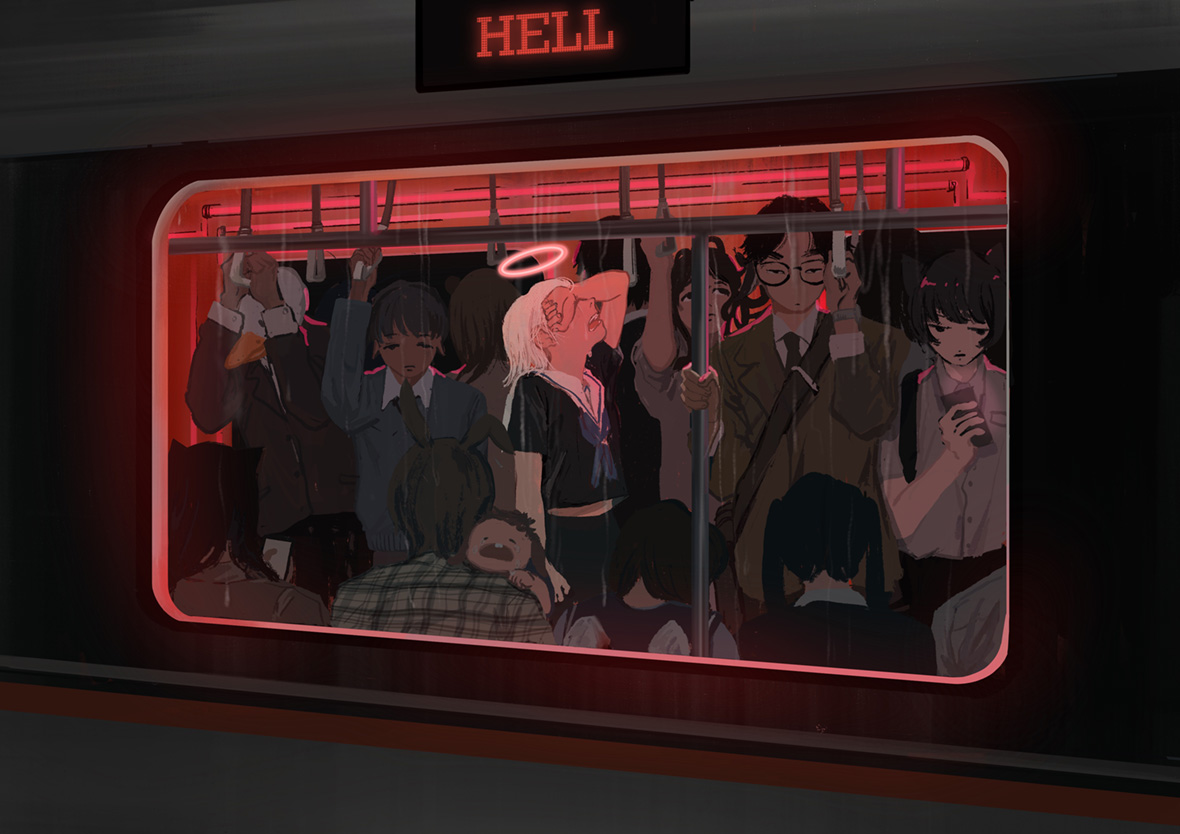
Congming thinks a big part of the problem is that people are forced into specific roles, and they end up unable to be true to themselves. “From birth to adulthood, we have been labeled by society. We can be students, artists, parents, or celebrities,” she says. “But we rarely think about who we really are and what our life is meant for.” To visualize this frustration, one series depicts an office worker pressing his face onto a photocopier and printing paper duplicates of himself. The flimsy doppelganger travels through the city, flopping around weakly with a drawn-on smile. In another piece, someone goes on a murdering spree in a theater full of replicas.
Congming 认为,出现这些问题,很大一部分原因是人们一直被迫担任特定的角色,最终让他们无法做真实的自己。她说:“从出生到成年,我们一直被社会贴上各种标签。我们可以是学生、艺术家、父母或名人,但我们很少思考自己到底是谁,以及我们生活的意义是什么。”她的一个作品系列便很好地体现着这种颓挫感:办公室白领男将自己的面庞放在复印机上,数个纸质副本被打印而出,这些脆弱的分身散布在城市,他们带着虚假的笑容随波逐流;与此同时,另一个男人正对着剧院里的分身进行疯狂的屠杀。
Whether it be through humor or bloody gore, the message of these works is the same: don’t be afraid of going against the grain. “I want to explore the fact that each of us is unique in this world,” she says. “We’re all multifaceted and need to accept every aspect of ourselves.”
无论是幽默或血腥的元素,这些作品所传达的信息是一致的:不要害怕与社会常规背道而弛。“我想表达一个事实,那就是,这个世界上每一个人都是独一无二的。每个人都是多面的,我们需要接受自己的不同面孔。”
Like our stories? Follow us on Facebook and Instagram.
Instagram: @congming33
Contributor: Mike Steyels
Chinese Translation: Olivia Li


